Support La Croix International and high-quality journalism
Enjoy unlimited access to La Croix International

Pilgrimage, a spiritual adventure common to all religions
A spiritual journey to a holy place, quest for healing, or simple devotion, pilgrimage is found in all religions. it's a unique moment in the lives of believers..
▶ What is the origin of pilgrimages?
Traces of pilgrimage can be found as early as the Neolithic era. The world's oldest pilgrimage still practiced today is the Hindu pilgrimage to Kurukshetra in the Indian state of Haryana, with Hinduism still placing great importance on pilgrimages today. In Varanasi (formerly known as Benares), the sacred banks of the Ganges have been a holy site since the second millennium BCE.
In Mesopotamia of the third millennium BCE, it was the lunar god Nanna-Suen who made a "pilgrimage" to Enlil where his father resided, the holy city of the Sumerians, according to an article in Le Monde de la Bible ( The World of the Bible, a French monthly magazine ) , which recounts a mythological story celebrating this act of moving to a sacred place to ask for protection or healing. Similarly, in Pharaonic Egypt, sacred boats carrying statues of deities would travel on the Nile from the temple of Karnak to the royal funerary temples, as reported in the Pyramid Texts, a narrative from the second half of the third millennium.
"If in the earliest times, there is rarely mention of pious journeys undertaken by men," point out Damien Agut-Labordère and Bertrand Lafont in the article, the development of urban life in Mesopotamia was accompanied by that of sanctuaries and their influence, places frequented by city dwellers and visitors on the occasion of travel for other reasons. It's in the last centuries before Christ that "journeys specifically undertaken with a pious intention begin to be clearly attested."
In ancient Greece, as early as the 8th century BCE, journeys on the occasion of "panegyrics," welcoming delegations from the main cities, took place to the sanctuaries of Olympia, Delphi, or Nemea for times of celebration, offerings, and consulting oracles, although these were rarely experienced as a spiritual quest.
▶ What role does pilgrimage play in Judaism?
In ancient Judaism, three festivals required gathering in a place chosen by God – the Temple in Jerusalem for the Judeans, while the Samaritans went to the sanctuary on Mount Gerizim. These festivals, still central today in Judaism but without this dimension of movement since the destruction of the Temple, are Pesach (Passover, recalling the liberation from Egypt), Shavuot (the day of God's revelation at Sinai and the giving of the Torah), and Sukkot (the Feast of Tabernacles, commemorating the Hebrews' crossing of the desert). In 66 CE, shortly before the destruction of the Temple, 2.7 million pilgrims went to Jerusalem for Passover, according to historian Flavius Josephus cited by David Hamidovic, a specialist in ancient Judaism.
Since the era of Rabbinic Judaism, pilgrimages have been made to the graves of rabbis who marked their contemporaries with their wisdom, whether in Israel or in diaspora countries (Ukraine, Morocco...). In Tunisia, the Ghriba synagogue in Djerba is the destination of an annual pilgrimage on the Jewish festival of Lag Ba'Omer, attracting several thousand pilgrims.
▶ What importance is given to pilgrimage in Islam?
The pilgrimage to Mecca, the birthplace of the prophet Muhammad, is one of the five pillars of Islam. Going there is an obligation, at least once in a lifetime, for every Muslim who has the physical and financial means to do so. According to researcher Élodie Vigouroux, this pilgrimage was established during the lifetime of the Prophet Mohammed -- as early as 628, Muslims from Medina performed the umrah, or the lesser pilgrimage, which can be done at any time of the year. Then, after the conquest of Mecca in 630, they were able to perform the hajj , the major pilgrimage that still takes place today during the last month of the lunar year.
Nowadays, about two million Muslims travel to Mecca each year for the hajj. Medina, 500 kilometers from Mecca and the burial place of the prophet, is also a pilgrimage site for Muslims, as is Jerusalem, and specifically the Al-Aqsa Mosque -- according to tradition, a winged horse took the Prophet Mohammed, accompanied by the archangel Gabriel, to the sacred rock where a ladder awaited him to ascend to heaven. While not as important, many other pilgrimages to the graves of prophets or Sufi saints exist throughout the Muslim world.
▶ What does this practice encompass in Christianity?
From the first centuries of Christianity, especially during the Byzantine era, believers began traveling to Jerusalem and the places where Jesus lived. These pilgrimages were then undertaken by a minority of Christians who could afford such travel. Quickly, the tombs of the main Apostles also became destinations for these spiritual journeys (Rome, Santiago de Compostela ). A status of the pilgrim, granting legal protection, emerged in the Carolingian era.
In the medieval era, the major pilgrimages were not mass events, but individual journeys, often in response to a vow, or as a penitential act. From the 14th Century, this practice declined in favor of a spiritual and internal conception of pilgrimage. With the development of railways in the 19th century, this practice experienced a new surge. Lourdes , Pontmain attract crowds in turn. "Pilgrimage is the movement from one point to another, but it's also a special moment, a rebirth, towards the arrival point which, in faith, is life in God," emphasizes Father Sébastien Antoni, director of the national pilgrimage of Lourdes. For Father Yann Vagneux, a missionary in India, experiencing pilgrimages with the Indian people helped him rediscover the dimension of pilgrimage in Christian faith itself: "being on the way to the blessed hope, this city with open gates of the heavenly Jerusalem," he explains.
But pilgrimage also has meaning for the communities that welcome pilgrims, emphasizes Bishop Jamal Khader, who was until January 13 the Patriarchal Vicar for Jordan, where several holy places hosting pilgrimages are located. "For the Christians of the country, it is of real spiritual importance to receive pilgrims from elsewhere. It roots us in the universal Church," he said. For his part, Father Jacky-Marie Lhermitte, president of the National Association of Pilgrimage Directors, sees in these spiritual journeys "a way to meet men and women of good will, to build bridges between cultures and religions, to push back misunderstanding, intolerance, and to advance peace and justice."
Pope's visit to Southeast Asia: What influence does Catholicism hold in Asia?
Ramadan in jerusalem ends under shadow of ongoing israeli-palestinian tensions, vatican issues new document on threats to human dignity, indonesia confirms pope francis will visit in september.
Restoring order in Haiti remains a daunting challenge
How the "higgs boson" stoked the debate over the existence of a creator god, migration and asylum pact: a narrow vote in the european parliament, vatican 'foreign minister' goes to vietnam, fueling speculation of a papal visit.
Catholicism and "the Russian world" of Vladimir Putin and Patriarch Kirill
The boom in adult baptisms is not necessarily the result of "active" evangelization, tips for keeping a job in the roman curia, hey, you stop being so critical.
Ministers of Mercy
Divine mercy sunday: everything you need to know, five pilgrimage sites to visit in australia, the accounts of the resurrection in the gospels, ethics & society.
Church names four bishops to monitor France's parliamentary debates on euthanasia
Catholic bishops denounce vote to enshrine abortion in eu charter of rights, sierra leone declares national emergency on drug abuse following caritas' warning, bishops urge "humanism of dialogue" and "respect for the individual" in upcoming eu elections, family & lifestyle.
Ireland’s massive rejection of a referendum on the family
A gathering time, catholic couples share advice on navigating life's challenges, greece moves to legalize same-sex marriage, adoption.
A unique edition of the Bible crafted by African women
Netflix releases three-part series on the biblical moses, "cabrini": a saint's journey to build an "empire of hope" in the united states, nund rishi, esteemed representative of sufism.

6 Spiritual Adventures to Challenge the Mind and Body
Adventurous souls and spiritual seekers can find peace, and a challenge, on these spiritual hikes.
A quiet walk in the woods can be a spiritual experience, and countless hikers head to redwood groves and high places to find a sense of awe. But if following a dirt track is a kind of prayer—the hypnotizing rhythm of feet and breath an ancient song—some trails are true religious pilgrimages, routes laid down by the faithful.
From the high peaks of South Korea to an Irish landscape of heather and bogs, these hikes draw believers from around the world, following paths trod by Christian pilgrims, Buddhist monks, and Celtic pagans. And whether they sleep in historic abbeys or under the stars, devotees hike in a long tradition of spiritual seekers in the wilderness. With wild beauty and fascinating culture, these trails call even secular trekkers to make the journey, pulling on their boots for the hike of a lifetime.
Croagh Patrick, Ireland
Ireland ’s patron saint fasted for 40 days on the peak of this gentle mountain, which overlooks fields of heather, bogs, and the islands of Clew Bay —it’s also the mythical site where he banished the snakes from Ireland . More than 25,000 Catholic faithful follow in his footsteps on the yearly Reek Sunday walk, hiking up the slopes of Croagh Patrick to a small summit chapel.
But when Saint Patrick came to the mountain in 441 A.D., Croagh Patrick had already had been a pilgrimage place for thousands of years. Archeologists have unearthed the ruins of a Celtic fort that once stood watch over the peak, and Ireland’s pagans once gathered here to reach pre-Christian spirits and celebrate Lughnasa , an exuberant Gaelic kickoff to each year’s harvest season.
Hikers and spiritual travelers who journey along Spain’s El Camino de Santiago can stop at monasteries to seek shelter on their way to their final destination: Santiago de Compostela.
El Camino de Santiago, Spain
Winding through the French Pyrenees, then skirting the northern edge of the Iberian Peninsula, pilgrims have walked to Santiago de Compostela for at least 11 centuries. Not that they’ve followed a single path—what’s now known as the El Camino de Santiago has braided and split throughout the years, worn into the earth by Christian pilgrims from across the continent.
The end of their long walk was the Cathedral of Santiago de Compostela , believed by some to hold the remains of St. James the Apostle . And just as in the early days of Catholic pilgrimage, many hikers on the Camino stay in a series of albergues , or shelters, often in monasteries and converted churches. But the rewards aren’t strictly spiritual. The city is also known for its signature almond cake, which is topped with a sugary cross of St. James.
The ancient Kumano Kodo Pilgrimage in Japan has been walked by monks and emperors for more than 1,000 years.
Kumano Kodo Pilgrimage Route s, Japan
Nestled into the peaks of the Kii Mountains , a trio of grand shrines bring Japan’s Buddhists to the Kumano Kodo Pilgrimage , following paths walked by monks and emperors for more than a 1,000 years. But the region’s spiritual significance pre-dates the 6th-century arrival of Buddhism in Japan, with evidence that it’s been a sacred place for nature worshippers since pre-historic times.
Now part of a UNESCO World Heritage site , the grand shrines of Kumano blend Buddhism with Japan’s indigenous Shinto religion, and the trail is lined with small Oji shrines that house local deities and offer welcome respite for walking pilgrims.
And in a twist that’s a tidy fit for Japan’s complex religious traditions, there’s no one trail that defines the Kumano pilgrimage. Travelers can choose from four main routes that cut through the mountains or along the coast, passing through traditional villages, towering bamboo forests, and rice paddies along the way.
The lake on the Great St. Bernard Pass along the Via Francigena route is just one of the many gorgeous sites a traveler can see on their journey.
Via Francigena, Italy
The Christian practice of walking to holy places stretches back to the first few centuries after Christ. In Europe’s Middle Ages, believers set out on foot in search of forgiveness and faith, walking to the holy city of Jerusalem or Spain’s Santiago de Compostela. And many followed the crumbling, ancient roads that led to Rome , a city already filled with relics and churches.
By the 10th-century, the Via Francigena stretched from Canterbury to Rome, winding through the Jura mountains before climbing the Alps and descending to the Italian coast. And just like travelers in the Middle Ages, many modern-day Via Francigena pilgrims visit a series of monasteries and abbeys on the way, dining with monks and joining traditional prayer services.
The entire route is almost 1,300 miles long, but it’s not all serious trekking. Hikers often slow to enjoy Europe’s more secular charms—especially when the trail passes through the wine regions of Champagne and Tuscany's Val d'Orcia.
Mount Kailash in Tibet is about 22,000 feet, but it isn’t the journey to the top of the mount that is most important to pilgrims—it’s the 33-mile trail around the peak.
- Nat Geo Expeditions
Mount Kailash, Tibet
With a dramatic face of black stone and a summit that stretches towards 22,000 feet, Mount Kailash commands attention even among Tibet’s high peaks. Four religions—Hindu, Buddhist, Bön, and Jain—see it as the epicenter of the spiritual world, each describing it as a home for gods, a place for enlightenment, or a source of power. But it’s not the trip to the mountain that’s most important. Pilgrims to Mount Kailash dedicate themselves to walking the 33-mile trail around the peak, which loops past a series of pagodas, shrines, and temples.
And for dedicated trekkers in search of true enlightenment, Tibetan Buddhists believe that Mount Kailash offers a grueling path to Nirvana—by repeating the circuit 108 times, 3,564-mile hike around a single peak.
The Baekdu-daegan trail in South Korea weaves 457 miles through its highest peaks and passes the sources of all the country’s major rivers.
Baekdu-daegan Trail, South Korea
In Korea’s ancient tradition of mountain spirit worship, the ridgeline of the towering Baekdu-daegan range is the energetic center, and the snow-capped mountains stretch nearly the length of the Korean Peninsula. Though the North Korean portion is closed to outsiders, the Baekdu-daegan trail weaves 457 miles through South Korea ’s highest peaks, passing the sources of all the country’s major rivers.
Hiking the Baekdu-daegan is a serious feat of endurance and strength, but it’s an unmistakably spiritual journey, with trail-side shrines and temples built to honor Buddhism, Daoism, Shamanism, and neo-Confucianism. The Baekdu-daegan reaches a geographical and spiritual peak on the summit of Jirisan, the tallest mountain in mainland South Korea. Korea’s faithful come to pray at the seven major Buddhist temples on the slopes of Jirisan, including the Hwaeomsa Temple , where hikers can join the Buddhist monks for pre-dawn chanting and dharma drumming. Jen Rose Smith writes about travel and adventure from her home in Northern Vermont. Follow her on Instagram @jenrosesmithvt , and read more of her work at www.jenrosesmith.com .
Related Topics
- PILGRIMAGES
- SPIRITUALITY
- ADVENTURE TRAVEL
You May Also Like

Ready to plan your fall hike? Read this safety advice first.

8 alternative Portugal breaks close to nature, from glamping to rustic quintas
Free bonus issue.

Before you go hiking, read these life-saving tips from first responders

Eight life-affirming trips to take this year

Banff, Jasper and more: 4 wild places for Canadian outdoor adventures

How to find adventure (without the crowds) in Utah

Five extreme US adventures for your 2023 bucket list
- Environment
- Paid Content
History & Culture
- History & Culture
- History Magazine
- 2023 in Review
- Mind, Body, Wonder
- Terms of Use
- Privacy Policy
- Your US State Privacy Rights
- Children's Online Privacy Policy
- Interest-Based Ads
- About Nielsen Measurement
- Do Not Sell or Share My Personal Information
- Nat Geo Home
- Attend a Live Event
- Book a Trip
- Inspire Your Kids
- Shop Nat Geo
- Visit the D.C. Museum
- Learn About Our Impact
- Support Our Mission
- Advertise With Us
- Customer Service
- Renew Subscription
- Manage Your Subscription
- Work at Nat Geo
- Sign Up for Our Newsletters
- Contribute to Protect the Planet
Copyright © 1996-2015 National Geographic Society Copyright © 2015-2024 National Geographic Partners, LLC. All rights reserved
The pilgrimage: A soul’s sacred journey
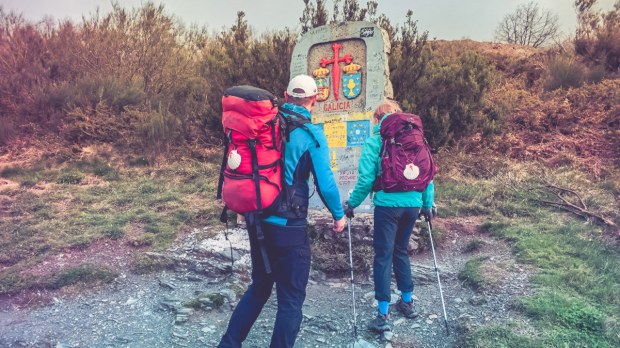
Shutterstock | MaxMaximovPhotography
Life is a journey, a pilgrimage. The word derives from Latin, peregrinare , literally meaning “to wander through fields of grain.” Pilgrimage seems to be almost instinctive to humankind. Throughout the centuries, people of all faiths and traditions have set out on sacred journeys or quests.
Pilgrimage in the Bible
The Bible is filled with narratives of God beckoning a person or people to go out from. The first biblical “pilgrimage” is recounted in Genesis 12: 1-4 , when Abram was called by God to leave his pagan past and his father’s home in order to migrate to the land of God’s choice, where he would receive divine blessings. In Exodus, God asks Moses to lead his people out of slavery in Egypt to the Promised Land (see 12:37-19:8).
In the New Testament, God continues to call people to go forth, but the calling is largely centered on Jesus Christ. As in the Old Testament prophets, Jesus, whose “kingdom was not of this world,” listened to the voice of his Father, obeyed, and left his heavenly “home” by becoming incarnate in the world. Like the prophets, Jesus ultimately went to a better place after his Resurrection.
The rise of Christian pilgrimages
In time, Christians began to look at the spiritual life through the lens of pilgrimage. By the 4th century, largely as a result of the legalization of Christianity and an end to the persecutions, pilgrimages began in earnest.
The Christian Roman emperor, Constantine, built large basilicas in Rome over the tombs of Peter and Paul, as well as other basilicas in honor of Jesus, Mary, and John. Meanwhile, his mother, Helena, erected churches and shrines in Palestine to memorialize events from the Gospels.
These large edifices paved the way for Christians to come and offered them space in which to worship. At the same time, Helena brought relics from Jerusalem back to Europe, sparking even more interest in the holy places of Jesus’s earthly life. Thus, Christians from around the world slowly began to journey to the tombs of the martyred apostles in order to honor them, connect with the events of their lives, and do penance.
Inspired by the Crusaders
By the 11th century, the practice of pilgrimage had become widespread and entered into Christian devotional practice. The stories told by Crusaders after returning home piqued curiosity and increased the desire to experience the sacred places of Jesus’s life themselves.
Huge numbers of Christians of every class and status set out on the journey. While many went to the Holy Land, others went elsewhere. They went to Rome to visit the tombs and Basilicas of Peter and Paul, to Compostela in Spain to visit the tomb of St. James, to Loreto to the Holy House of Mary, to Monte Sant’Angelo to the grotto of St. Michael the archangel, and beyond.
They braved disease, violence, shipwrecks, and strife. Many never returned home, as there were so many risks. Before setting off, the pilgrim prepared a last will and testament, gave away or sold his/her possessions, and celebrated the Church’s sending-off liturgical rite similar to that of a funeral.
After donning the pilgrim’s tunic, the walking staff, and leather pouch, the pilgrim set off. A broad-brimmed hat was used with a long scarf wrapped around the body from the back to the waist. The symbol of the scallop shell was worn by those headed to the tomb of St. James in Compostela , while the keys were worn by those going to Rome. Those going to the Holy Land carried the Jerusalem cross. The distinctive dress set the pilgrims apart and identified them as such for protection.
Pilgrims also journeyed to lesser-known sites. Perhaps they had a devotion to a saint, and wanted to journey to his or her tomb. There were also sanctuaries built over places associated with the saint’s life: his birthplace, the site of her martyrdom or death, the place where he experienced something supernatural.
Interior pilgrimages
During this time, monks who never traveled beyond the confines of the cloister began using pilgrimage as a metaphor for the inner journey of the heart and soul. Associating the outer pilgrimage with the inward one, they sought to journey to heaven within.
The geographical pilgrimage fell into decline after the Protestant Reformation, which challenged the theology of the indulgence as well as medieval devotions. The Enlightenment of the 18th and 19th centuries virtually eliminated the devotional pilgrimage, which people rejected as a medieval superstition.
Modern pilgrimages
In recent decades, however, pilgrimages have made a comeback. Modern pilgrims have once again rediscovered the powerful spirituality of the faith journey. Certainly, jets, luxury coaches, and modern hotels have made the journey safer and less penitential. Nonetheless, jet lag, sore feet, and the absence of the comforts of home can still require patience, and penance.
Today’s pilgrims look forward to time away to experience God without the clutter in their lives. They hope to witness a miracle, sign, or truth. Others hope to find an answer to their heartfelt prayers.
Ultimately, the pilgrimage is a response within the soul to move closer to God, to leave the ordinary in order to embrace the unknown within the context of faith. Pilgrimage has a goal: to encounter the living God. Along the journey, the pilgrim receives special graces through the spirituality or sacredness of place, which has its origins in the theology of creation and the Incarnation. Pilgrimages are unique because they reveal an incarnate God – a God who comes among us. People are touched by God in actual places.
By going to the places where our predecessors experienced God, we can connect with the events and receive graces, too. Thus, the sacred places help us to connect with the living God – the God who “took on flesh and dwelt among us.”
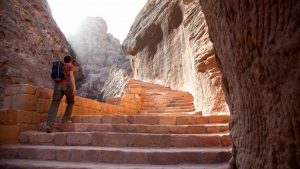
Articles like these are sponsored free for every Catholic through the support of generous readers just like you.
Help us continue to bring the Gospel to people everywhere through uplifting Catholic news, stories, spirituality, and more.

- Digital Edition
- U.S. & World News
- Already/Not Yet
- Amid the Fray
- Ask Father Mike
- Bridging Faith
- Catholic — or Nothing
- Catholic Watchmen
- Echoes of Catholic Minnesota
- Everyday Mercies
- Faith at Home
- Faith Fundamentals
- Faith in the Public Arena
- Food from Scripture
- Inside the Capitol
- The Local Church
- Making Sense Out of Bioethics
- Simple Holiness
- Twenty Something
- Word on Fire
- Your Heart His Home
- From Readers
- Focus on Faith
- Sunday Scriptures
- Daily Scriptures
- Why I am Catholic
- Practicing Catholic
- Movie Reviews
- Book Reviews
- Video Game Reviews
- Local Events
- Classifieds
- Publication Dates

Before you go
Sign up for our free newsletter, pilgrimage: traveling with a spiritual purpose.
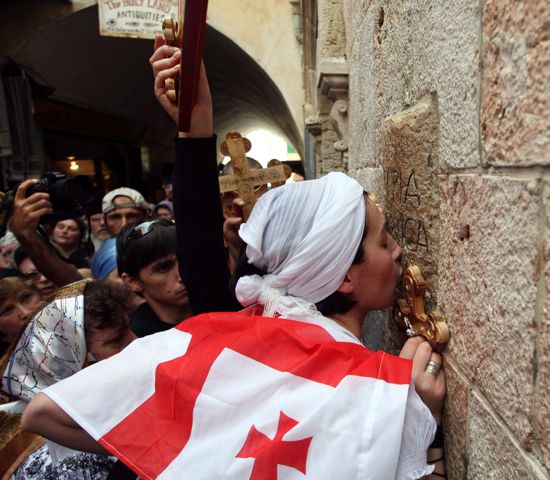
Pilgrimage has been part of the Christian tradition for centuries. A pilgrimage is a spiritual journey to a sacred place. The journey can be near or far — as close as a neighboring church or as distant as halfway around the world. It can be a day-trip, a 10- to 14-day excursion or any other duration.
Years ago, people went on pilgrimages in larger groups for safety, to protect themselves from bandits on unfamiliar roads in foreign lands. Today, many prefer to go in groups for ease in travel, to enjoy the benefit of a local guide, to have the opportunity to celebrate Mass and share in other forms of communal prayer, and to experience fellowship with other believers.
There are a number of good spiritual reasons to make a pilgrimage. For many it is like a retreat, a time away from home and the regular routine to concentrate on the spiritual life without distractions — a time for prayer and meditation, learning and enrichment.
For others, it is a time of intercession, an opportunity to pray for a special intention or an occasion to offer thanksgiving for blessings received. Centuries ago, a pilgrimage was commonly assigned as a penance to make satisfaction for sins committed.
There are a number of things that a pilgrimage is not. It is not a vacation, a time to sit back, take it easy and relax. It is not a commercial tour, a time for sightseeing, entertainment, cultural experiences and fine dining. It is not a shopping trip, a time to go to specialty stores to get mementos and souvenirs for yourself and gifts for family and friends back home.
A pilgrimage normally has some of these elements, but the itinerary — the schedule of sites to visit and the activities to be done there — is designed around the spiritual goals and objectives of the trip.
The ultimate trip
There are three premier pilgrimages, trips that have been made by Christians for centuries, journeys of inestimable spiritual value.
The pilgrimage that ranks above all others is to walk in the footsteps of Jesus, to visit the Holy Land. Major sites include the birthplace of Jesus, Bethlehem; his childhood home, Nazareth; the location of his early ministry, Capernaum and the area around the Sea of Galilee; and his final destination, Jerusalem.
The second-most revered pilgrimage is to walk in the footsteps of St. Paul. He made three missionary journeys and covered an immense amount of territory in Turkey and Greece. The main sites are Ephesus in Turkey and Philippi, Thessalonica, Corinth and Athens in Greece.
Another excellent option is to visit the foundations of the church in Rome and Italy. There are four major pilgrimage churches in the Eternal City: St. Peter’s Basilica, St. Mary Major, St. John Lateran and St. Paul’s Outside the Walls.
Some authorities list seven pilgrimage churches and also include Santa Croce in Gerusalemme (Holy Cross in Jerusalem) in Rome; St. Lawrence outside the Walls; and St. Sebastian’s.
Other mainstays include a papal audience and a visit to the Vatican Museums. There are key spiritual destinations in the countryside, many which are associated with important saints: Assisi and Sts. Francis and Clare; Milan and St. Ambrose; Bologna and St. Dominic; Monte Cassino and St. Benedict; Siena and St. Catherine; and Padua and St. Anthony.
Other possibilities
Devotion to Mary is another important reason for a pilgrimage. The foremost Marian shrines are at Lourdes in France, Fatima in Portugal, Guadalupe in Mexico, Medjugorje in Bosnia, Czestochowa in Poland and Knock in Ireland.
There are many other highly-esteemed spiritual destinations: Santiago de Compostela in Spain; Notre Dame, Chartes, La Salette and Mont-Michel in France; Oberammergau and the great cathedrals of Munich and Cologne in Germany; Canterbury in England; Goa in India; Mount Nebo in Jordan; and Mount Sinai in Egypt.
Pilgrimages need not be to far-away places. A short trip can be made to a sacred site in one’s locality: a neighboring parish church, a shrine, the cathedral of the diocese, a monastery or convent, or a retreat house. Pilgrimages to holy places help us on the most important pilgrimage of all, our journey through our human life on earth to our eternal destination with God in heaven.
Father Michael Van Sloun is pastor of St. Stephen in Anoka.
Related Articles
Bishop cozzens: national eucharistic revival could help catholics find christ in the mass, whose holy land is it a history of the most contested swath of land in the middle east, cardinal filoni makes pilgrimage to holy land as sign of peace, solidarity, family meals and the rosary.
ARCHDIOCESAN SYNOD 2022 ARCHDIOCESE OF ST. PAUL & MPLS.
Contact us: [email protected]
777 Forest St., St. Paul, MN 55106 © 2022 TheCatholicSpirit.com. All rights reserved.

The Spiritual Significance of Holy Land Pilgrimage
Holy Land pilgrimage holds a special place in the hearts of Christians. It offers a unique opportunity to recommit oneself to living a Christian life and to experience the land where Jesus was born, preached, suffered, died, and rose again. Visiting the Holy Land allows pilgrims to deepen their faith, gain a deeper understanding of biblical stories, and connect with the rich Christian history. It is a spiritual journey that goes beyond simply visiting places; it is an encounter with God and a chance for spiritual growth.
Pilgrims who embark on a journey to the Holy Land are drawn to the sacredness and significance of the Biblical sites they visit. These holy sites hold immense spiritual importance and serve as tangible reminders of the stories and teachings found in the Bible. Walking in the footsteps of Jesus and his disciples, pilgrims can seek solace, find inspiration, and deepen their relationship with God.
Throughout history, countless pilgrims have been moved by the transformative power of visiting the Christian holy sites in the Holy Land. The biblical sites , such as the Church of the Holy Sepulchre in Jerusalem, the Church of the Nativity in Bethlehem, and the Mount of Olives, resonate with believers on a profound level, enabling them to connect with the life and teachings of Jesus Christ.
“The pilgrimage to the Holy Land has transformed my faith and deepened my understanding of God’s love. Walking in the places where Jesus once walked has brought the Bible to life for me and has filled me with a renewed sense of purpose and devotion.” – Sarah, pilgrim
For many, the Holy Land pilgrimage is a once-in-a-lifetime opportunity to delve into the roots of their faith, to encounter the living history of Christianity, and to be spiritually rejuvenated. It is a pilgrimage filled with awe, reverence, and a deep sense of connection to the divine.
Deepening Faith and Understanding
Stepping foot on the same grounds that Jesus once walked allows pilgrims to experience a profound sense of spirituality. It provides a unique perspective that goes beyond reading scriptures or hearing sermons. The tangible presence of these biblical sites fosters a deeper understanding of God’s plan, the life of Jesus, and the early Christian communities.
By visiting the Christian holy sites, pilgrims can witness the stories of the Bible come to life. They can stand at the Jordan River, where Jesus was baptized, and reflect on the significance of baptism in their own lives. They can walk through the Via Dolorosa, tracing Jesus’ footsteps and meditating on his sacrifice. They can visit the Church of the Multiplication of the Loaves and Fishes in Tabgha, where Jesus performed the miracle of feeding the multitude, and contemplate the abundance of God’s provision.
These encounters with the biblical sites deepen pilgrims’ faith and offer a sense of confirmation that the events described in the Bible are not mere stories but real, transformative moments in history. It strengthens their belief in the power of God’s love, the message of redemption, and the eternal hope found in Jesus Christ.
An Encounter with God
Visiting the holy sites of the Holy Land is not merely a sightseeing tour, but an opportunity for pilgrims to encounter God in a profound way. These sacred places become spaces for worship, prayer, and reflection, enabling pilgrims to connect with the divine and experience spiritual renewal.
In the tranquil atmosphere of the Church of the Holy Sepulchre, pilgrims can enter the empty tomb of Jesus and contemplate the miracle of his resurrection. The Garden of Gethsemane provides a peaceful setting for prayer and contemplation, allowing pilgrims to empathize with Jesus during his moments of anguish before his crucifixion.
Every step taken in the Holy Land is an invitation to commune with God, to seek guidance, forgiveness, and strength. As pilgrims navigate the winding streets of Jerusalem or hike the rugged trails of Galilee, they can engage in personal conversations with God, pouring out their hearts and listening for His voice.
Through prayer, meditation, and engagement with the holy sites, pilgrims can experience a deep sense of peace, joy, and spiritual fulfillment. The Holy Land pilgrimage offers a sacred space for encountering God and invites believers to embrace the transformative power of His presence.
Spiritual Growth and Transformation
Embarking on a pilgrimage to the Holy Land is a commitment to spiritual growth and transformation. It is an invitation to journey closer to God, to deepen one’s faith, and to live out the teachings of Jesus Christ.
The pilgrimage experience challenges pilgrims to step out of their comfort zones, to confront their doubts, and to grapple with the complexities of their faith. It provides an opportunity for self-reflection, soul-searching, and introspection.
By immersing themselves in the rich Christian history and engaging with the cultural and religious diversity of the Holy Land, pilgrims can broaden their perspectives, challenge their preconceived notions, and cultivate a deeper appreciation for the unity of the global Christian family.
Pilgrimage is not only a personal journey but also a communal one. It allows pilgrims to connect with fellow believers from different parts of the world, to share their faith experiences, and to build meaningful relationships. The camaraderie fostered during the pilgrimage journey can inspire and support pilgrims in their lifelong walk of faith.
In essence, the Holy Land pilgrimage is an invitation to embark on a transformative spiritual journey. It offers an opportunity to deepen one’s faith, encounter God, and grow in spiritual maturity. By visiting the Christian holy sites, pilgrims can connect with the biblical stories at a profound level, experience the transformative power of God’s presence, and emerge from the pilgrimage journey with renewed devotion, clarity, and purpose.
Practical Considerations for Holy Land Pilgrimage
Embarking on a pilgrimage to the Christian holy sites in the Holy Land is a profound and transformative experience. However, careful planning and preparation are essential to ensure a smooth and meaningful journey. In this section, we provide practical advice and considerations to help you make the most of your pilgrimage.
1. Planning Your Pilgrimage
Before embarking on your pilgrimage, take the time to research and plan your itinerary. Identify the Christian holy sites you wish to visit, such as the Church of the Holy Sepulchre in Jerusalem or the Church of the Nativity in Bethlehem. Consider including other historical churches and landmarks that resonate with your faith.
Ensure you have a clear understanding of the visa requirements, entry restrictions, and the best time to visit. Keep in mind that certain sites may have specific visiting hours or limited access due to ongoing religious ceremonies.
2. Finding Accommodations
When selecting accommodations for your pilgrimage, consider staying in establishments that cater to religious tourists. Many hotels and guesthouses in the Holy Land offer comfortable and convenient options for pilgrims, making it easier to access the Christian holy sites and participate in religious activities.
Look for accommodations situated close to the holy sites you plan to visit. This will save you transportation time and allow you to immerse yourself in the spiritual atmosphere of the region.
3. Navigating Cultural Differences
The Holy Land is a diverse region with a rich cultural heritage. As a pilgrim, it is important to recognize and respect the local customs and traditions. Familiarize yourself with the basic etiquette and dress codes specific to each religious site you visit.
Engage with locals respectfully and be mindful of their cultural sensitivities. Demonstrating appreciation for their traditions will enhance your overall pilgrimage experience and foster positive interactions with the local community.
4. Connecting with Local Communities
One of the most enriching aspects of a Holy Land pilgrimage is the opportunity to connect with the local Christian communities. Attend worship services, interact with church members, and participate in community activities. This will not only deepen your understanding of the Christian faith but also provide a chance to offer support and solidarity to these vibrant communities.
5. Embracing the Vibrant History and Culture
The Holy Land is steeped in history and boasts a vibrant cultural heritage. Take the time to explore beyond the Christian holy sites and visit museums, archaeological sites, and historical landmarks. Immerse yourself in the local culture by savoring traditional cuisine, attending cultural events, and discovering the unique traditions of the region.

This image showcases the breathtaking historical churches you can visit during your pilgrimage. These sacred spaces are not only architectural marvels but also hold immense religious and historical significance.
A successful Holy Land pilgrimage requires careful planning, cultural sensitivity, and a desire to connect deeply with the Christian holy sites, local communities, and vibrant history of the region. By following these practical considerations, you can ensure a meaningful and transformative pilgrimage experience.
The Holy Land: A Journey of Faith and Solidarity
A pilgrimage to the Holy Land is not just a personal journey; it is an opportunity to build solidarity with the local Christian communities. When visiting the Christian holy sites and religious landmarks in the Holy Land, pilgrims have a unique chance to support and strengthen the Church in the region, which faces various challenges and pressures.
By learning about the local religious traditions and engaging with the diverse peoples of the Holy Land, pilgrims can foster a deeper understanding and appreciation of the rich cultural heritage and history that these sacred sites hold. This spiritual tourism experience can inspire a sense of unity and connection among people of different backgrounds and faiths.
In addition to spiritual growth, a pilgrimage to the Holy Land can also serve as a catalyst for promoting justice and peace. Witnessing firsthand the complex realities faced by the local communities, pilgrims are encouraged to work towards positive change upon their return. Whether through supporting local initiatives, raising awareness about the challenges faced by these communities, or advocating for social justice, the journey becomes a transformative experience.
“A pilgrimage to the Holy Land is an opportunity for both personal spiritual growth and building solidarity with the local Christian communities. It is a chance to deepen one’s faith, connect with diverse cultures, and contribute to the pursuit of justice and peace and religious landmarks .”
As pilgrims embark on this journey of faith and solidarity, they carry the spirit of pilgrimage with them long after their visit. The experience challenges them to examine their own lives, values, and commitments, and to promote understanding and compassion in their respective communities.
By embracing the values of faith, harmony, and unity, a pilgrimage to the Holy Land becomes a transformative experience that can inspire individuals to become ambassadors of peace and goodwill in their own lives, fostering a more inclusive and compassionate world.
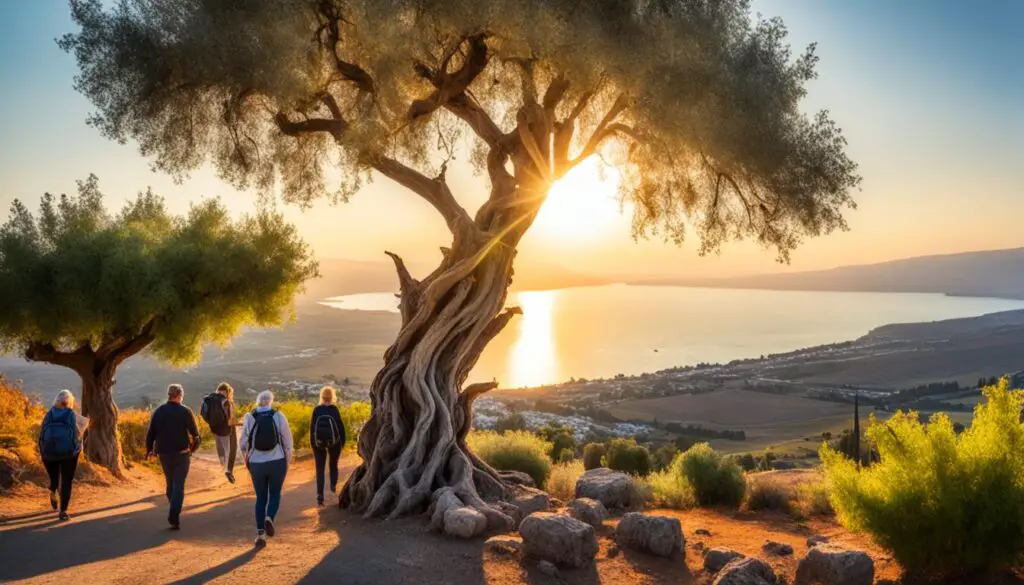
The Significance of Interreligious Ties in the Holy Land
The Holy Land is a place where Judaism, Christianity, and Islam converge, making interreligious dialogue and understanding crucial. Pilgrims are encouraged to embrace encounters with people of different faiths and learn about the shared heritage and holy sites of the three monotheistic religions. By fostering relationships and promoting reconciliation, pilgrimage becomes an opportunity to contribute to peace and unity in the region.
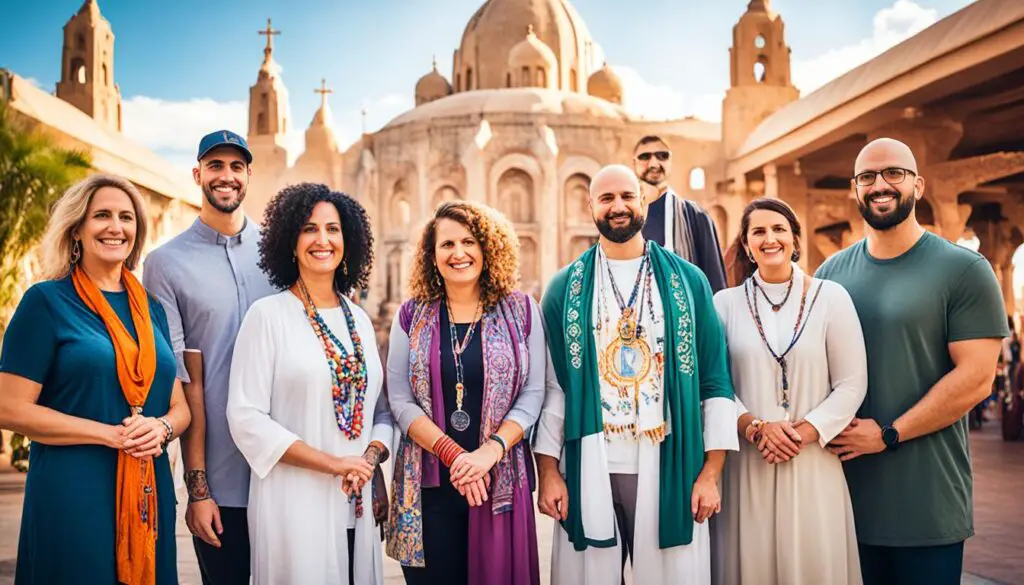
Visiting the holy sites of the Holy Land allows pilgrims to experience the essence of these three major religions and gain a deeper understanding of their interconnectedness. It is a chance to witness the coexistence and interdependence of faiths, which is a testament to the harmonious diversity that exists in this sacred region.
Engaging in interreligious dialogue during a pilgrimage fosters mutual respect and builds bridges of understanding. By actively seeking opportunities to reach out and converse with people of different religious backgrounds, pilgrims can transcend cultural and religious differences, promoting a sense of empathy and unity.
“In the Holy Land, where Christianity, Judaism, and Islam converge, believers have a unique opportunity to deepen their faith and cultivate interreligious dialogue, fostering peace and mutual understanding.” – [Insert Expert Name], Interfaith Relations Scholar
Pilgrims can also learn about the shared heritage and historical connections between these faiths. Exploring sites such as the Western Wall, the Church of the Holy Sepulchre, and the Dome of the Rock allows pilgrims to witness the profound reverence these places hold for Jews, Christians, and Muslims alike.
Shared Holy Sites in the Holy Land
Here are some of the notable shared holy sites in the Holy Land:
These shared holy sites symbolize the interconnectedness and historical significance of these three religions, underscoring the importance of interreligious ties in the Holy Land.
By promoting understanding, respect, and solidarity among people of different faiths, religious tourism in the Holy Land can contribute to peace, tolerance, and unity in the region and beyond.
Pilgrimage as a Journey of Reconciliation and Justice
Pilgrimage is not just a physical journey; it has the power to transform individuals and inspire a commitment to justice and peace. When embarking on a pilgrimage to the Christian holy sites, it is crucial to understand the complex political situation in the Holy Land and the challenges faced by the local Christian communities. By immersing themselves in the local culture, listening to local voices, and becoming agents of positive change, pilgrims can contribute to efforts for reconciliation.
Visiting the pilgrimage destinations is an opportunity to learn about the struggles and aspirations of the people who call the Holy Land home. It is a chance to witness the ongoing efforts for peace and justice in the region. By engaging with the local communities, pilgrims can build bridges of understanding and solidarity, fostering connections that transcend religious and cultural differences.
Pilgrims are encouraged to be advocates for justice, raising awareness about the challenges faced by the local Christian communities upon their return. Sharing their experiences and knowledge gained during the pilgrimage can help shape perceptions and promote support for the people of the Holy Land. Through these efforts, pilgrims become ambassadors of goodwill, promoting reconciliation, and contributing to a more just and peaceful world.
Pilgrimage is not only a personal journey; it is also a call to action. It challenges us to reevaluate our role in the pursuit of justice and peace and empowers us to be agents of positive change.
Solidarity with Holy Land Christians
The Church in the Holy Land plays a unique and crucial role in preserving the Christian heritage and promoting peace in the region. The local Christian communities face various challenges such as emigration and political instability. It is essential for pilgrims to demonstrate solidarity with these communities and support their efforts.
By supporting local churches, pilgrims contribute to the preservation of sacred religious landmarks and the continued practice of faith in the Holy Land. Building relationships with diverse Christian denominations fosters unity and mutual understanding.
One way to show solidarity is by raising awareness about the plight of Christians in the Holy Land. By sharing their experiences and educating others about the challenges faced by local Christians, pilgrims can inspire empathy and understanding.
It is crucial to remember that pilgrimage destinations are not just historical sites, but living communities with real people facing real struggles. Pilgrims are encouraged to engage with the local Christian communities, listen to their stories, and provide support in any way possible.
Supporting Local Churches
Local churches rely on the support of pilgrims and visitors to carry out their ministries and maintain their facilities. By attending Mass, participating in liturgical celebrations, and making donations, pilgrims contribute to the sustainability of these religious institutions.
“When we support local churches in the Holy Land, we are not only investing in the preservation of these sacred sites, but also in the wellbeing of the local Christian communities who rely on them for their spiritual nourishment and livelihoods.”
Fostering Relationships with Diverse Christian Denominations
The Holy Land is home to various Christian denominations, each with its own rich traditions and practices. Pilgrims are encouraged to engage with these diverse communities, attend services at different churches, and learn about their distinct spiritual heritage.
By embracing the diversity of Christian denominations, pilgrims foster unity and contribute to the promotion of interreligious dialogue and understanding. This experience of shared faith can be a source of inspiration and deep spiritual growth.
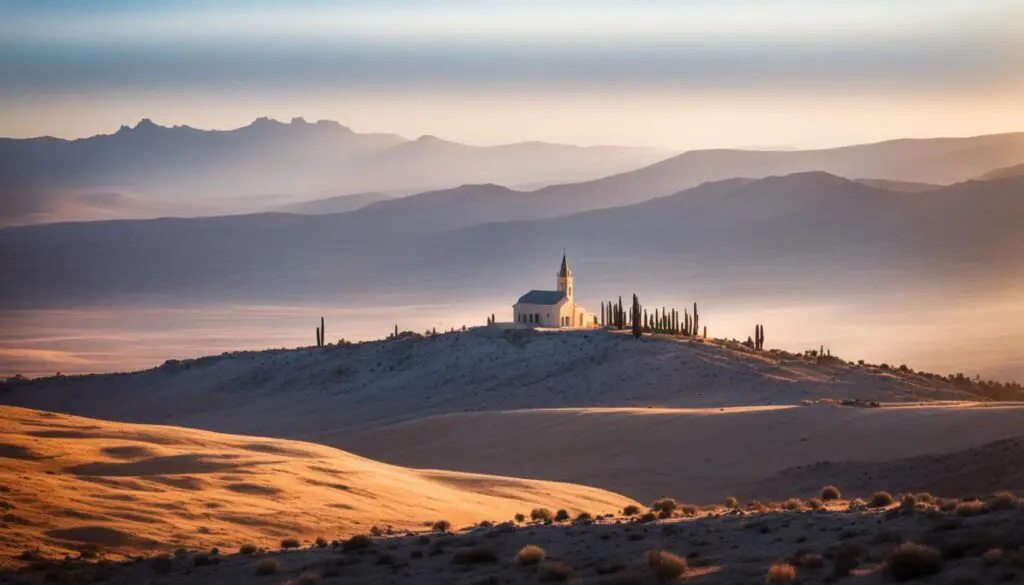
Raising Awareness about Christians in the Holy Land
The plight of Christians in the Holy Land often goes unnoticed by the wider world. By sharing their experiences and stories, pilgrims can raise awareness about the challenges these communities face, including emigration, political instability, and economic hardships.
“By spreading the word and educating others about the reality of Christians in the Holy Land, we can help create a greater sense of empathy, understanding, and support for these communities.”
Pilgrims can write about their experiences, share photos and videos on social media, or participate in discussions and events that focus on the Holy Land. These efforts can make a difference and inspire others to get involved in supporting the Christian communities in the region.
By standing in solidarity with Holy Land Christians, pilgrims demonstrate their commitment to the Christian faith, promote peace, and contribute to the preservation of religious landmarks for future generations.
The Journey of Pilgrimage
Pilgrimage is not just a physical journey; it is a spiritual quest to encounter God in a deeper way. When embarking on a pilgrimage to Christian holy sites, such as the revered biblical sites in the Holy Land, pilgrims experience a unique opportunity for personal reflection, renewal, and spiritual growth.
During the pilgrimage, pilgrims are encouraged to approach their journey with an open heart and a desire to connect with the divine. It is a time for self-discovery, as they reflect on their faith, seek answers to their spiritual questions, and gain a deeper understanding of their relationship with God.
The transformative nature of pilgrimage lies not only in the places visited but also in the inner journey it inspires. As pilgrims walk the paths of biblical figures and visit sacred sites, they are immersed in a rich tapestry of history, culture, and spirituality. Through prayer, meditation, and contemplation, pilgrims find solace and connect with the divine presence that permeates these holy sites.
“Pilgrimage is not just a spiritual journey; it is a transformative experience that has the power to shape one’s faith and perspective on life.” – Unknown
Prayer and devotion play a central role in the pilgrimage experience. Whether it’s participating in Mass at a historical church or offering heartfelt prayers at a biblical site, pilgrims find solace in communing with God in these sacred spaces. The moments of silence and reflection allow pilgrims to deepen their connection with the divine and find renewed strength and inspiration for their spiritual journey.
As the pilgrimage comes to an end, pilgrims carry with them a sense of renewal, an enhanced spiritual perspective, and a deeper connection to their faith. The journey of pilgrimage continues beyond the physical return, as the experiences and insights gained during the pilgrimage shape their lives and influence their relationship with God and others.
Embrace the transformative power of pilgrimage. Let the Christian holy sites become the backdrop for your spiritual journey, as you seek to encounter God in a deeper way and experience the profound connection between faith, history, and culture.
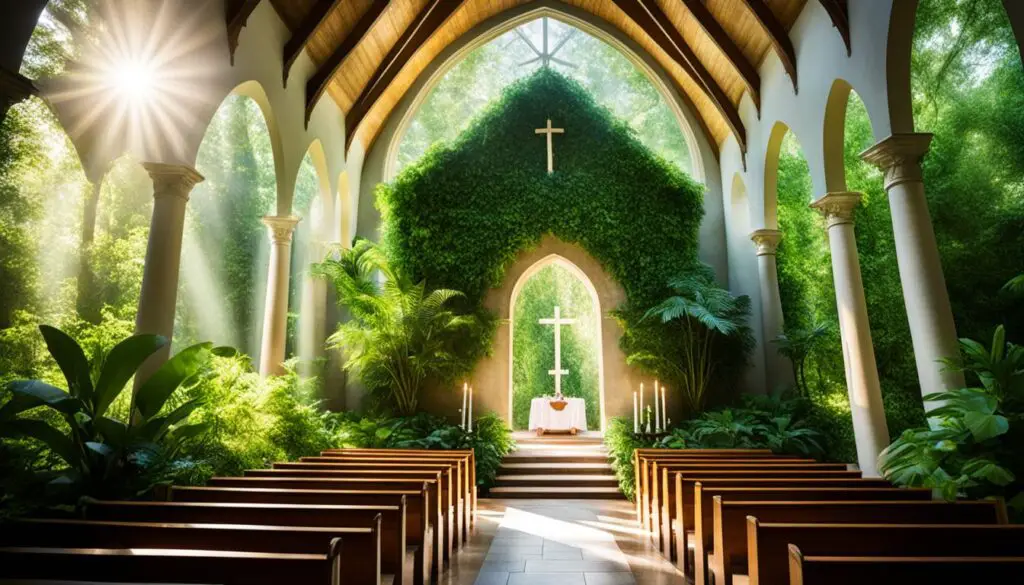
Tips for a Meaningful Holy Land Pilgrimage
Embarking on a Holy Land pilgrimage can be a profound and transformative experience, allowing you to connect with the rich spiritual heritage of Christianity. To make the most of your pilgrimage, here are some practical tips and advice to guide you along the way.
Select Knowledgeable Guides
Choosing knowledgeable guides who are well-versed in the history, significance, and biblical narratives associated with the Christian holy sites is essential. Their expertise will provide valuable insights and enhance your understanding of the sites you visit.
Plan Your Itinerary
Plan your itinerary carefully to ensure you have enough time to visit the desired pilgrimage destinations. Research the opening hours, special events, and any restrictions that may be in place. This will help you make the most of your time and ensure you don’t miss any key sites.
Participate in Liturgical and Devotional Practices
Immerse yourself in the spiritual atmosphere of the Holy Land by participating in liturgical and devotional practices. Attend Mass or prayer services at the holy sites, engage in personal prayer and reflection, and take part in any spiritual activities offered at the pilgrimage destinations.
Engage with the Local Communities
Interact with the local Christian communities you encounter during your pilgrimage. Engaging with the people, customs, and traditions of the Holy Land will enrich your experience and foster a deeper connection to the spiritual significance of the sites you visit.
Cultivate a Spirit of Reverence, Gratitude, and Openness
Approach your pilgrimage with a spirit of reverence, gratitude, and openness. Be mindful of the sacredness of the sites you visit, express gratitude for the opportunity to make this spiritual journey, and remain open to the transformative experiences and encounters that may await you.
“A Holy Land pilgrimage is not just about visiting places; it is about encountering God in a deeper way and allowing Him to work in our hearts and lives.”
Remember, a Holy Land pilgrimage is a unique opportunity for spiritual growth, reflection, and connection with the divine. By following these tips and immersing yourself fully in the experience, you can make your pilgrimage a truly meaningful and transformative journey.
Comparison of Christian Holy Sites
A pilgrimage to the Christian holy sites of the Holy Land is a transformative and deeply spiritual journey. It is an opportunity to embark on a sacred pilgrimage, connect with the rich tapestry of Christian history, and explore destinations that hold profound religious significance.
Visiting these pilgrimage destinations allows believers to deepen their faith, strengthen their spiritual connection, and gain a deeper understanding of biblical stories. By immersing oneself in the historical, cultural, and theological context of these holy sites, pilgrims can experience a sense of awe and reverence that transcends the physical journey.
Furthermore, a pilgrimage to the Holy Land is not only a personal journey, but also an opportunity to support and uplift the local Christian communities. By embracing encounters with people of different faiths and promoting peace and justice, pilgrims become agents of positive change in the Holy Land. They carry the spirit of their pilgrimage with them long after their journey ends, inspiring others to embark on their own spiritual quest.
What are some famous Christian holy sites?
What is the significance of pilgrimage for christians, why is the holy land important for christian pilgrimage, what should i consider when planning a pilgrimage to the holy land, how can pilgrimage contribute to peace and unity in the holy land, how can pilgrimage be a journey of justice and peace, how can i support the local christian communities in the holy land, is pilgrimage only a physical journey, what practical tips can enhance my holy land pilgrimage experience, what is the lasting impact of a holy land pilgrimage, source links.
- https://www.amazon.com/Holy-Land-Christian-Travelers-Biblical/dp/B0C91P1VZ3
- https://explorechristianity.info/discover/exploring-pilgrimage
- https://www.usccb.org/issues-and-action/human-life-and-dignity/global-issues/middle-east/israel-palestine/holy-land-pilgrimage-guidelines

Father / Grandfather / Minister / Missionary / Deacon / Elder / Author / Digital Missionary / Foster Parents / Welcome to our Family
View all posts
Related Posts:

What Inspires Spiritual Journeys? Explore the World’s Pilgrimages

Interested in spiritual journeys? We give you the definition of spiritual journeys from academic experts who explain the history and cultural significance of spiritual journeys. We report on the experiences of a cross-section of people who have undertaken spiritual journeys. Even more, we explain how this tradition is one of the cultural universals shared by all of the world's different cultures .
Spiritual journeys have been around since antiquity, and mankind has felt the call to journey afar in search of meaning. From those of the Abrahamic religions to Zoroastrians, as well as many who subscribe to no particular belief set, a time comes to cross their threshold on what they consider a pilgrimage.
Here, we dig deep into the concept of spiritual journeys, to learn more about our yearning for them. Is it the destination that calls to us, or something deeper?
“Evolution of modern transportation systems and the requirement to fit into work schedules have changed pilgrimage,” observed Dr. Justine Digance of Griffith University in Australia. “Few today would entertain a year-round trip from the U.K. to the Holy Land, which was the norm in the Middle Ages—along with all the hardships.”

“Many state that to be a pilgrim, one must encounter suffering,” she noted. “I don’t see that it has a role in today’s discussion of pilgrimage unless it is offered as part and parcel of the event, such as barefoot climbing of Crough Patrick in August is said to bring merit, as does certain pilgrimages done barefoot in both the Buddhist and Hindu traditions.”
Climbing Crough Patrick
A resident of Kenmare, Ireland, Des Dempsey, 41, said that people come from all over to climb Crough Patrick, or the Reek, as it is known locally.
“From Balintubber Abbey there is a traditional pilgrimage route across the fields and wild lands to the base of the mountain,” Dempsey said. “Reek Sunday is traditionally the last Sunday in August when thousands come and climb it, though generally not the locals. They will usually beat the crowds and climb it the Friday before.”

“The Reek is a difficult climb, involving some suffering, physically and mentally, often with harsh exposure to the elements and some sacrifice — of time, comfort, requiring endurance and strength, challenging a person physically, mentally and spiritually,” he continued. “When I did the climbs, I was considering the rewards, rather than the cost.”
“To walk such well-trodden pilgrimage routes are journeys worthwhile doing in themselves, but they make the arriving all the more rewarding,” he went on. “You become part of a bigger journey, something bigger than the self. As for climbing barefoot, it makes it a very different journey. You have to be so much more conscious of every step, to be in the moment and the attention you get is great.”
“People have been traveling that route on pilgrimage for generations untold, long before Christianity came to Ireland certainly,” he concluded. “Then they climbed it for Lugh of the Long Arm, the Sun God. When St. Patrick arrived, he climbed it too and declared it for the new Christian God and the Irish, ever accommodating, said “Grand,” and continued climbing. It’s a special place, immediately obvious to me the first time I ever saw it, regardless of in whose name it is climbed.”
Varanasi and the Cosmic Dance
Just as mountains have attracted those seeking spiritual heights, the confluences of big rivers are often places of powerful mythology according to Rana P. B. Singh, professor of cultural geography and heritage studies at Banaras Hindu University in Varanasi.
“The notion of Pudyadayi or ‘merit-giving’ refers to the inherent ‘spirit of place’ of a particular site, which since ancient times attracted sensitive and spiritual persons to come and get interconnected with the divine spirit as described in ancient texts,” he stated. “In the process of adding more representation from other religious places, and continuous superimposition of such mythic-mystic-sacrosanct images and rituals, the ‘merit-giving’ capacity of these places increased, expanded and attracted more people.”

According to Professor Singh, “Along the riverfront Ganga Ghats in Varanasi ‘life’ and ‘death’ both go together in the vision of Shiva’s cosmic dance. Shiva is the supreme and ultimate god of ‘life’ and ‘death’ together, and Varanasi is the resort of Shiva, that is how ‘life’ and ‘death’ are considered as two phases of life. The Ganga, being the liquid energy of Shiva, takes care of both the conditions: birth — life started in water, and death — final mergence is in the river.”
Spiritual Journeys to Holy Places
According to Tasoula Manaridis, 42, of Nicosia in Cyprus, it is the vestiges of spiritual leaders that make a locale sacred and beckon those seeking guidance and inspiration.
“In the Greek Orthodox faith a widespread and long-lasting custom is the journey to holy places to kneel in worship,” she said. “From antiquity and until present the conviction has persisted that prayer or the performance of religious duties are more effective in places where saints were born, died, wrought miracles, suffered martyrdom or merely existed; in ones where there were churches, relics of saints or miraculous icons. It is very common in the Orthodox religion that when someone faces a problem such as a serious illness to visit a place of worship, light a candle and pray for the well being of the ill.”

“Kykkos Monastery is one of those places,” she asserted. “The Monastery located in the Troodos Mountains is one of the richest monasteries on the island and it possesses one of the three icons of Virgin Mary ascribed by St Luke. Many pilgrims take day trips to the Monastery to pray and give an offering — it can be a piece of jewelry — to the Icon of Virgin Mary.”
The Hajj, a Tribute
For some pilgrims, the very journey itself is an offering.
According to a 75-year old Muslim and resident of the Republic of Djibouti in Africa who preferred to remain anonymous, “The Hajj is first of all an obligation for the believer. It is a tribute to God. The pilgrim does not go there to be cured or to receive something. As a result of it, one feels purified of all earthly blemishes, having made a sacrifice for his spirituality . Because it is a distant place, it is a financial challenge for many Muslims all over the world, especially as many are poor.”
“Being the most sacred place of Islam, a pilgrimage to Mecca is obviously a sacred journey,” he continued. “It is not, however, a tourist trip — it is forbidden to non-Muslims. According to tradition, the Kaaba was built by Abraham and Ismael. It is a house of prayer in the shape of a perfect cube. Their coming here is considered the first and founding pilgrimage. It is on this site that Abraham was willing to sacrifice his son Ismael, the father of the Arabs. Mecca is also the birthplace of the prophet Mohammed.”

“Mecca is the holiest and most sacred place in the world for Muslims,” said Sari Pitaloka, 46, of Jakarta. “More in particular, Masjid-il-Haram, the mosque where the Kaaba is located is the centre point to which the whole world community of Muslims physically, emotionally and spiritually directs their prayers, every single day, five times per day.”
“One of the qualifications to do Hajj is to be healthy mentally, physically and emotionally,” she continued. “Why would someone want to visit the house of the Creator if not in her/his best condition? The journey itself needs heath to support us to achieve the destination and to enjoy, get the best value of it.”
Buddhist Temples of Shikoku, Japan
Bob Davies, 65, of Durban, South Africa would likely agree. He considers pilgrimage visitation to a sacred place and made the route of 88 Buddhist temples on the island of Shikoku, Japan in 2005, a journey he said required stamina.
“I am generally extremely physically and mentally active, but walking so intensely for such a long period and distance naturally begs proper preparation,” he said. “That I undertook over the preceding three months in the local gym and a few long, backpack-laden hikes over the preceding weekends. As far as the joys and appeals of hiking are concerned, Shikoku per se is certainly not a preferred or recommendable destination.”

When asked if he would undertake the Shikoku pilgrimage again, Davies was uncertain.
“Maybe, if the need arises to experience certain aspects alluded to during the pilgrimage become singularly important to warrant deeper experience. Only spiritual need over the time ahead will tell,” he answered.
Spiritual Journeys Inside or Out?
While for some, pilgrimage is a one-time event, for others it can represent a way of life.
“For me, a pilgrimage is a journey of the soul,” declared Ben Drake, 50, of New Forest, Hampshire in the United Kingdom. “There must be a destination or one never sets out, but that destination might be physical or spiritual. In my case, I attempted to make it both. I think I succeeded, I was certainly happy with what I got. Most Importantly it fitted with the greater pilgrimage of my life and nourished that.”
Drake conducted his pilgrimage on the occasion of his 50th birthday and faced a few fears in the process.
“I was inspired by the writings and example of Satish Kumar, a great pilgrim who undertook a walk around many of the spiritual places of Britain for his 50th,” Drake explained. “I wanted to mark a turning point in my life, a time when my soul and its wellbeing is the most important thing in my life.”

“I walked on my own, across the country just over 100 miles from the place that I am pleased to call home to a place that inspires me,” he said. “I attempted to be open, positive and loving with everyone and everything that I met — often my greatest challenge. I was challenged especially by two days of walking a 500-foot cliff top in thick fog, often disorientated and lost and also often in the grip of a fear of heights and of the unknown. There is a lot of unknown when you can only see 15 yards but you can hear the wind over the cliff top.”
“My view, based on many years studying the activity in Japan, is that pilgrimage is not just about one-off journeys out of the ordinary,” Ian Reader, professor of Japanese Studies at the University of Manchester in England observed. “It is a complex phenomenon in which a variety of apparently contradictory themes interact, and can co-exist without there being a real conflict. It is not a singular event; for many pilgrims, it is very much embedded in the structures of their daily lives as well. For some of the pilgrims I met in Japan, they went to Shikoku so regularly and spent so much time doing or preparing for pilgrimages that Shikoku became a sort of home for them and the pilgrimage became a normal part of their lives.
Outer Journey to Inner Destination
Tom Nowakowski, 40, is an avid long-distance hiker originally from Lodz, Poland, now of Palm Springs, California. He has traversed the Appalachian Mountain Trail, the Pyrenees, Swiss Alps, and just returned from hiking KommEmine across Bulgaria. Over four and a half months in 2007, he hiked the Pacific Crest Trail, a 2,650-mile journey stretching from Mexico to Canada.
The trek involved traversing 700 miles of Colorado and Mojave deserts and the snows of the Sierra Nevada Mountains.
“Pilgrimage to me it is a physical, outer journey to a spiritual, inner destination,” Nowakowski said. “Along thru-hike like the PCT is a perfect example of a pilgrimage. A journey where it is all about the going — not about what is at the end of the road. You walk for months at a time but there is nothing waiting for you at the end of the trail. Actually, when you get there it means that the trip is over – a very emotional experience for many. All that is truly important happens while you are journeying.”

“The hike is a chance to get rid of all the things you really don’t need, physically, mentally, emotionally,” he continued. “It is the art of deprivation. You are carrying your pack so you simplify. People often start the trail carrying everything but the kitchen sink and end up shipping a lot of stuff home. Water is very heavy so you walk from water source to water source. On the trail, the longest hike between water sources is 40 miles or two days.”
“You’re moving, your body is healthy and your mind goes quiet,” he recalled. “You’re mindful, aware — if you don’t pay attention, there will be a copperhead or rattlesnake, or you will slip on the trail. In spite of that, your mind doesn’t have over-stimulation of the everyday world, it empties. You start to digest things from far, far in the past, things have a chance to re-surface, it has a cleansing quality, a detoxifying effect.”
Nowakowski is not alone in finding that the open road leads to an open mind.
Spirituality in Everyday Life
Amanda Pressner, 32, is a co-author of “The Lost Girls: Three Friends. Four Continents. One Unconventional Detour Around the World.” The book is an account of a year-long backpacking adventure she and two friends embarked upon after quitting their high-pressure New York media jobs.
“Our journey was a pilgrimage, one that initially seemed to have no specific endpoint,” she said. “Unlike many religious pilgrimages, where a journey is made in order to worship at one specific place of great spiritual significance, we had no specific physical destination that we’d set out to reach.
“I was definitely awed by the devotion, its many forms, that I encountered in Southeast Asia,” she continued. “Religion and spirituality seemed to be infused into everyday life in places like Bali — with its ever-present offerings to the gods — and Myanmar — with its thousands upon thousands of stupas and temples. Faith was all around, rather than concentrated in a few very important sites where pilgrims might gather — you were reminded of that at nearly every turn.”

“We had some idea that the very act of leaving everything familiar behind, taking a leap, getting on the road—and being open-minded during our journey—would help us reach destinations of great emotional significance, and our hunch was correct,” Pressner concluded. “We eventually realized that our sacred endpoint was home and that we just had to go the long way around, and learn a lot about ourselves, in order to get there.”
Sometimes, the pilgrimage road can seem to extend forever, regardless of its length.
Argentina's Pilgrimage of the Young
Fourteen years ago, Estani Puch, 36, made Argentina’s “Pilgrimage of the Young.” Held every October, thousands walk 65 kilometers from the barrio of Liniers in Buenos Aires to Luján, a journey that generally takes about 18 hours.
The Basilica of Luján is one of Argentina’s major places of pilgrimage. According to legend, in 1630, a tiny, terracotta statue being transported on an oxcart to Santiago del Estero, got stuck in the mud in Lujan. Nothing could make the cart budge until the statue was removed. It was taken as a sign that the 18-inch statue of the Virgin wanted to remain there.
Over time, a small shrine grew into one of Argentina’s major places of pilgrimage, now also known as “the Capital of Faith.”
“I was 22, and working in Wal-Mart at the time and trying to get a job in Citibank selling financial products,” Puch recalled. “This is back in 1996 when the unemployment rate was something like 17% in Argentina so it was really hard to get a decent job and hard to change jobs as well. So, while I was in the process of interviews, I promised that if I got the job, I would walk to Lujan.”
“I did the journey with a friend from work and with a Catholic congregation from Buenos Aires — there were around 150, 000 people walking,” he said. “You start walking at 8 a.m. and go all day and all night, till 3 or 4 in the morning. It is very tiring but if you stop it is impossible to start again. There is also support on the way — if you get tired or pass out they help you. Everything was organized — once you arrive at Lujan, there is a bus that brings you back to B.A.”

“Something funny about this walk is that the Basilica is quite tall, so you can see it from really far,” he continued. “That makes you think that you are getting really close, but it is still a long way to get there — you walk and walk and walk. Whoever you talk to will tell you they had the same impression.”
“The view of the church is what gives you faith to continue, but at the end you realize that what was important was the journey there or all the things in life that you have done,” Puch concluded. “I guess life is a pilgrimage and it is all about the journey, not the destination.”
Whether one considers pilgrimage to be a spiritual journey or a sacred destination, mankind has sought answers and enlightenment through movement since time immemorial. Be it a metaphor for life or a one-time occasion, pilgrimage is likely to be a feature of the landscape for some time to come.
Interested in learning about other Spiritual Practices around the world?
- Lafayette Cemetery No. 1 is Best Quirky Attraction in New Orleans
- Documenting Indian Art is Calling for Benoy K. Behl
- The Purpose of An Iconographer Explained by Renowned Icon Painter
- Celtic Priest on Spiritual Heritage and Traditions of Aran Islands
- Good Friday Tradition in Trapani Sicily Honors Faith and Heritage
- Interview with Mayan Shaman on Spiritual Practices and Philosophy
- San Juan Chamula Community Shares But Protects Traditions
- Curacao Synagogue is the Oldest Jewish Congregation Site in North America
- Culture in Malta Features Faith, Family, and Pageantry
- Estonia’s Onion Route and The Old Believers
- Taize in Findhorn Eco Village Scotland
- Easter Baskets in Slovenia At Tustanj Castle
- Eva Michaelsen on Walking Meditation and El Camino de Santiago
- What is Pilgrimage ? Spiritual Seekers Share Experiences
- Icon Painter in Cyprus Honors Byzantine and Family Traditions
- Author Eric Weiner on “Man Seeks God”

Publisher and editor of People Are Culture (PAC). This article was created by original reporting that sourced expert commentary from local cultural standard-bearers. Those quoted provide cultural and historical context that is unique to their role in the community and to this article.
Cultural Legacy of Spain’s Civil War Inspires Museum Director
Clark art institute transforms troubled kids with art, leave a comment cancel reply.
Save my name, email, and website in this browser for the next time I comment.
Holy Land Pilgrimage Guidelines
- Middle East
Office/Committee
- International Justice and Peace
Year Published
December 2008 (revised November 2015) Print Ready Guidelines
Pilgrimage - A Spiritual Journey
Solidarity with holy land christians, ties to the jewish community, ties to the muslim community, practical issues.
- The Holy Land – Contacts for U.S. Pilgrims
Back to top
Interreligious Ties
Knowledge of key concern.
A pilgrimage is not a political exercise, but pilgrims to the Holy Land ought to have an opportunity to understand the suffering of a local Church caught in the midst of conflict and the work of the Catholic Church for justice and peace in the Holy Land. Materials from the United States Conference of Catholic Bishops on peace between Israelis and Palestinians should be made available. Any pilgrimage should be a journey of faith and a prayerful search for justice and peace in the land that is holy to us. Many pilgrims are moved to work for justice and peace upon their return.
- Pilgrimage should be planned and carried out as a genuinely religious exercise in the spirit of prayer, with reverent openness to the workings of the Spirit and the possibilities of conversion of life. Accordingly, pilgrimage differs from religious tourism and study tours of the Holy Land.
- Pilgrims should be led by an accredited spiritual animator or licensed guide who appreciates and respects the Christian tradition and pilgrimage as a distinctive religious undertaking. There are Church-authorized and government-recognized pilgrimage animators. While, for the spiritual purposes of pilgrimage, Catholic or Christian animators or guides are preferable, when they are not available, non-Christian guides should be supplemented with approved chaplains and spiritual directors. Be aware that in addition to licensed Israeli (Jewish and Arab) guides, certified Palestinian guides are now available for areas under Palestinian control. (Unfortunately, no reciprocity agreements are yet in effect with Israel.) Many of these guides have trained at the Holy See's Bethlehem University.
- Pilgrimages should be planned and conducted with ample opportunity for prayer, celebration of the Sacraments, and personal and group reflection. The spiritual atmosphere of a pilgrimage can be enhanced by the simplicity and quiet of pilgrim hostels as opposed to the busyness of commercial hotels.
- Care should be taken, with advanced planning, for the celebration of the Sacred Liturgy, the Sacraments, and special events such as the renewal of baptismal and marriage vows.
- The pilgrimage experience is enhanced by liturgical and devotional music. Groups should identify musicians and song leaders, and select music or hymnals in advance. Musical tapes can help preserve a sense of prayer on longer bus rides.
- The Holy Places that are staffed by the Franciscans will have specialized sacramentaries and lectionaries adapted to the memory of the people and events associated with the site. In addition, the Latin Patriarchate of Jerusalem has local liturgical books with Masses commemorating many pilgrims, hermits, penitents and other holy men and women who journeyed to the Holy Land or made it their home. These may also be a source of inspiration for pilgrims and may be obtained from the Chancery of the Latin Patriarchate of Jerusalem.
- Commercial contacts should be carefully limited with a view to retaining the religious intention of pilgrimage. Pilgrims can lend support to the local economy, but shopping ought not to become a preoccupation. Group leaders should prearrange a limited number of scheduled shopping times and/or allow free time for activities not essential to journeying as pilgrims.
- Catholic pilgrims are encouraged to show their solidarity with the local Church in the Holy Land by becoming acquainted with the faithful, by being attentive to their stories, and by sharing their living faith.
- Catholic Relief Services has created outreach programs for pilgrims and the Pontifical Mission of CNEWA revived its programs. These offices can help orient American pilgrims and assist them in making contact with local Christians, along with Muslims and Jews. They can also assist groups in making contact with local organizations, especially related to peace, justice and development issues.
- We encourage parish groups to meet with the parishes of the local Church in its different forms, especially Latin and Greek Melkite Catholics; likewise, diocesan groups, priests and religious should endeavor to make contact with local Church leaders and their institutions. Arrangements may be made through Catholic Relief Services' Outreach Office and the Pontifical Mission Office. The Notre Dame of Jerusalem Center and the Catholic Information Center can also be helpful.
- When planning your pilgrimage, obtain a copy of the calendar of events sponsored by the Office of the Assembly of Catholic Ordinaries of the Holy Land ( @email ), which is located at the Notre Dame of Jerusalem Center.
- Ecclesial solidarity will also mean learning about issues of justice and peace from Palestinians, Israelis, Christians, Jews, and Muslims.
- When visiting or meeting with local Christians, explore ways to establish sustained relations between your parish or diocese and Catholic parishes, Catholic institutions (including the justice and peace commission), and the local Catholic hierarchy.
- The spirit of dialogue especially recommends making serious efforts to come to know the life and aspirations of Jewish communities in Israel. Therefore, pilgrims should try to engage in interfaith dialogue with Jews. The Interreligious Coordinating Council in Israel (ICCI) maintains offices in Jerusalem which offer opportunities for learning about interreligious dialogue in the Holy Land, identifying speakers for pilgrim groups, and learning about lectures and discussions during pilgrims' stays.
- Visit the shrines and historic places of the Jewish people, such as the Western Wall, and the ancient synagogues at Capernaum and Nazareth. Visits to these sites can be occasions for prayerful understanding of the Jewish culture of Jesus' time and the Jewish roots of our Christian faith. A visit to Yad Vashem, the Israeli Holocaust Memorial, also would be important as a sign of respect and solidarity. Pilgrims should know that the Church disputes the way Pope Pius XII is depicted in the Museum.
- Take advantage of lectures, symposia and other events sponsored by institutions such as the Notre Dame of Jerusalem Center.
- Visit Muslim holy sites and meet with Muslim religious leaders. The CRS Outreach Office and the Pontifical Mission Office can be helpful in arranging meetings with Muslim groups and visits to religious sites, such as the Haram el Sharif (the Dome of the Rock) and the Al-Aqsa Mosque.
- Visit a Muslim village and meet the people, especially where Catholic Relief Services, the Pontifical Mission, or the Franciscans are sponsoring a project.
- Participate in Jewish-Christian-Muslim dialogue events at the Notre Dame of Jerusalem Center.
- Many Christian institutions will provide meals for pilgrims, the income from which helps support their operations. Plan in advance to take meals in hospices, orphanages, or schools, or take your accommodations with them.
- Where possible, pilgrims are encouraged to visit programs supported by the U.S. Catholic Church: the Pontifical Mission, Catholic Relief Services, and Bethlehem University. With a hotel training program, the university can provide meals as well as a chance to meet with Palestinian students and faculty from the West Bank, Jerusalem and Gaza. This can be easily achieved and incorporated into one's itinerary.
- Guides and tour agencies will be alert to security concerns. The U.S. Embassy and the U.S. Consulate in Jerusalem also issue alerts which can be helpful in planning and executing your pilgrimage. In general, keep to tour buses and avoid public transport (buses).
- If your guide does not want to enter certain areas, inquire about reasons. Has there been a recent disturbance? Is a disturbance expected today? Be aware that some guides will be averse, solely for ideological reasons, to entering some areas. If a pattern of comments seems to suggest that this reluctance is ideologically based, consult with his superiors, CRS or the Pontifical Mission, or with local Christian leaders for advice. While not taking unnecessary risks, the religious goals of the pilgrimage, including solidarity and reconciliation, would suggest crossing over boundaries when possible.
- Without prejudice to others, be attentive to opportunities to support known Christian businesses, including Christian travel agencies and guides. The majority of Christians in the Holy Land are poor and economically disadvantaged. Patronizing their businesses can be an act of solidarity with a Church seriously threatened by emigration. Such business contributes to the economic development of Arab Christian communities and helps retain the threatened Catholic presence in the Holy Land.
The Holy Land - Contacts for U.S. Pilgrims - Updated October 2015
Sponsored by the Vatican, chartered in the U.S., and staffed by the Brothers of Christian Schools (De La Salle Christian Brothers), Bethlehem University offers higher education opportunities to Palestinians and Arab Israelis, both Christian and Muslim. Tourism and hotel management programs permit the university to host pilgrim groups, providing lunch as well as meetings and discussions with students and faculty.
Catholic Relief Services Outreach Office P.O. Box 19447 91193 Jerusalem Contact: Hanan Nasrallah, Project Officer Matt Davis, Country Representative Tel: 011-972-2-656-9240 Fax: 011-972-2-656-9243 E-mail: @email
Set up to assist U.S. pilgrims, the CRS Outreach Office can provide background briefings, contacts with local Catholic, Muslim and Jewish groups; instruction on justice, peace and development issues; and site visits to U.S. Catholic Church-sponsored projects in nearby villages.
Christian Information Center (CIC) P.O. Box 14308 (Jaffa Gate - Old City) Jerusalem 91142 Contact: Rev. Fr. Athanasius O.F.M., Director Tel: 011-972-2-627-2692 Fax: 011-972-2-628-6417 E-mail: @email Website: www.cicts.org
Operated by Franciscans, CIC provides information on religious events throughout the country. They have opening hours, mass schedules and addresses for major religious institutions; provide travel details for buses, taxis, etc. to locations around the country; sell books, maps, travel guides; and arrange for masses in the Holy Sepulchre and other sites.
Custos of the Holy Land P.O. Box 186 Jerusalem 9100101 Tel: 011-972-2-626-6561 Email: @email Website: www.custodia.org The Custos, Franciscan friars designated by the Holy See to have "custody" of the holy places, promote pilgrimages and offer itineraries and proposals and practical information useful in planning journeys of faith. They can help coordinate and direct the reception of pilgrims at the Holy Shrines, offering spaces of prayer and making available Franciscan centers of hospitality (hostels) for those on pilgrimages organized by them.
ICCI is an umbrella organization of institutions and individuals that seek to promote interreligious and intercultural understanding within Israeli society.
Middle East Council of Churches P.O. Box 14634 - Jerusalem Liaison Office Jerusalem 91146 Tel: 011-972-2-628-44931 Fax: 011-972-2-626-4730 Website: https://www.mec-churches.org/main_eng.htm
The office can provide invaluable information regarding events, contacts, and issues related to ecumenical and interfaith relationships in the Holy Land.
Notre Dame of Jerusalem Center P.O. Box 20531 Paratroopers Road #3 Jerusalem 91204 Contact: Fr. Juan María Solana, L.C., Director Tel: 011-972-2-627-9111 Fax: 011-972-2-627-1995 E-mail: @email Website: www.notredamecenter.org
Located just outside the Old City, Notre Dame is a Vatican pilgrims' hospice and a major meeting place for Christians visiting Jerusalem, often hosting ecumenical, interreligious and cultural events. Evening Prayer and Mass are offered daily in their chapel.
Pontifical Mission P.O. Box 19642 Jerusalem 91196 Contact: Mr. Sami El-Yousef, Regional Director Tel: 011-972-2-627-2126 Fax: 011-972-2-627-3777 E-mail: @email Website: www.pontificalmission-jerusalem.org
Founded in 1949 to assist refugees and displaced persons, the Mission is administered by the Catholic Near East Welfare Association. It supports charitable, medical, educational and cultural programs, including schools for the handicapped and the deaf in Bethlehem. It promotes Christian unity and fraternal relations with non-Christians, advocates for human rights for all, and seeks to raise consciousness about the churches and people of the East.
Saint Peter Gallicantu Church – Mt. Zion Gate P.O. Box 31653 9131601 Jerusalem Contact: Ma-aleh Hashalom Tel: 011-972-2-673-1739 / 673-7420 Fax: 011-972-2-672-6991 Email: @email Website: www.assomption.org/fr/oeuvres/pelerinage/saint-pierre-en-gallicante
Beautifully restored, Saint Peter is the traditional site of Jesus' imprisonment and Peter's denial. Run by the Fathers and Oblate Sisters of the Assumption, the Church offers handicap access, rest facilities and an amphitheater for use by large groups, as well as basic accommodations (minimum 3 night stay). The gift shop offers religious and artistic items fashioned by local religious communities.
Tantur Ecumenical Institute Rehov HaRosmarin at the corner of Derech Hevron P.O. Box 11381 9111301 Jerusalem Tel: 011-972-2-542-2900 Fax: 011-972-2-676-0914 Email: @email Website: https://tantur.org Situated on a hill overlooking the road from Jerusalem to Bethlehem, the Institute serves as a place of learning, prayer and hospitality for visitors from all over the world. A frequent host of pilgrimages and retreats, Tantur also offers Continuing Education and Sabbatical Programs. Each program includes a variety of lectures and excursions designed to introduce participants to its geography, history, complex religious life, local people and the Bible. It has one of the best theological libraries, an auditorium and numerous seminar rooms to hold events.

- In The News
- Pilgrim Experiences
- Trip Tips from Chris
- Safety in the Holy Land
- Travel Insurance
- Jerusalem 10 Days Weather Report
- Airport Manuel
- Latin Patriarch Endorsement
- Jerusalem Photo Gallery
- Apply for Passport
- Prayer Book
- Publications
- Walking His Footsteps Christopher Cross
- To Jesus Through Mary
Journey to the Sacred Sites of the Catholic Holy Land
Taking a pilgrimage tour of the Catholic Holy Land is a significant journey that brings great spiritual enlightenment to those seeking to strengthen their beliefs. The Holy Land pilgrimage is a deeply meaningful experience that allows travelers to connect with their faith through sacred sites and the unique landscape. It offers the chance to establish a strong spiritual connection in a significant way.
By embarking on this journey of faith, pilgrims are given the opportunity to engage in moments of contemplation and prayer that are unique to this particular travel experience. The serene and peaceful surroundings found throughout the tour provide the perfect setting for introspection, meditation, and reflection, allowing individuals to establish or reinforce their spiritual connection with God.
Participating in a pilgrimage to the Holy Land of Catholicism promotes a sense of community among individuals who share a similar level of devotion. The collective experience cultivates an atmosphere of mutual encouragement, companionship, and camaraderie that enriches the spiritual expedition.
Fundamentally, this comprehensive religious excursion grants access to a realm of spiritual revival where attendees may come face to face with the divine through revered locations that are steeped in historical significance. By undertaking a tour of the Holyland Pilgrimage , adherents can fortify their beliefs while also forging indelible memories that will echo long after their departure.
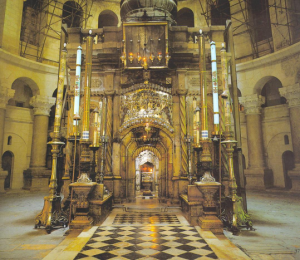
The Life of Jesus Christ – Exploring the Sacred Sites of the Holy Land
When embarking on a pilgrimage to the Catholic Holy Land, there are numerous sites and landmarks that one cannot afford to miss. These must-visit locations are the highlights of any such journey.
For those seeking to strengthen their faith and connect with the origins of Christianity, a Catholic pilgrimage to the Holy Land is a deeply meaningful spiritual endeavor. This sacred journey leads believers through a multitude of captivating landmarks and sites that hold vast religious significance.
The life of Jesus Christ is inextricably linked to various biblical locations that hold great significance. Bethlehem, the birthplace of Christ, and Nazareth, His hometown, provide a genuine insight into His formative years on earth. Meanwhile, Jerusalem serves as a symbol of His death and rebirth, housing notable sites like the Church of the Holy Sepulchre and the Via Dolorosa. These locations offer a unique glimpse into the life and legacy of Jesus Christ.
In addition to the aforementioned sites, the Holy Land boasts a plethora of other religious marvels waiting to be discovered by pilgrims. The Western Wall in Jerusalem, a longstanding emblem of Jewish tradition and piety, and Mount Sinai, which holds a special place in the hearts of both Jews and Christians as the location where Moses received the Ten Commandments, are just a couple of examples.
The biblical allusions and stunning panoramic views of sacred places such as Mount Carmel and Mount Tabor strike a chord with those who visit them. The tranquil scenery they offer creates spaces of introspection and deep thought within the splendor of nature.
Participating in a pilgrimage to the Holy Land as a Catholic provides a unique and remarkable opportunity to visit sacred and significant landmarks that are closely intertwined with one’s faith. These spiritual journeys offer a means for devotees to intensify their bond with God and to acquire a more profound comprehension of the history of Christianity.
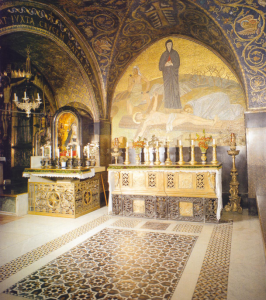
An Unforgettable Journey – The Essential Catholic Holy Land Pilgrimage Sites
Follow the Footsteps of Jesus in Jerusalem:
For centuries, Jerusalem has been a city that has captivated the hearts and minds of many. It is a city that is imbued with spirituality and is replete with a wealth of historical treasures that have intrigued and inspired countless individuals throughout the ages.
Jerusalem is widely regarded as a crucial location for Catholic pilgrimages due to its association with significant landmarks related to the life of Jesus Christ. Some of the notable sites visitors can explore include the Church of the Holy Sepulchre, the Garden of Gethsemane, the Western Wall, and the Mount of Olives. Each of these sites holds a special connection to the teachings and life of Jesus.
A trip to Jerusalem is an unforgettable event that will leave an indelible mark on anyone who visits. The city exudes an aura of intrigue, charm, and rich cultural heritage that is difficult to find elsewhere.
Jerusalem is a city that has, for many years and many generations, been a source of both intrigue and inspiration. It is deep in spirituality and is rich in historical riches, both of which have captured the minds of an infinite number of people over the course of history.
Due to the fact that it is the location of several significant locations related with the life of Jesus Christ, it is widely regarded as a prominent destination for Catholic pilgrimages. The Church of the Holy Sepulchre, the Garden of Gethsemane, the Western Wall, and the Mount of Olives are just few of the places that tourists may see while they are in Jerusalem. Each of these locations has a significant connection to the life and teachings of Jesus.
Jerusalem is a city that is packed with a feeling of history, mystery, and beauty; thus, a trip there is an experience that can only be had once in a lifetime and will make a lasting effect on each traveller who goes there.
Bethlehem – A Journey to the City of Jesus’ Birth:
Bethlehem, being the birthplace of Jesus Christ, is a city of great importance. Each year, countless pilgrims from all corners of the world come to embark on a spiritual journey to this holy place, where they can immerse themselves in its awe-inspiring energy. The city has a rich and well-documented history, and its significance in Christian history is immeasurable.
Bethlehem is a place where tourists can delve into the places that hold significance in the life of Jesus. These include the Church of the Nativity and the Shepherd’s Field, both of which are closely associated with the story of Jesus’ birth and carry immense spiritual weight. The Church of the Nativity, in particular, is of utmost importance as it is regarded as the oldest church globally and is also thought to be the exact spot where Jesus was born.
To fully experience Bethlehem, one must not miss visiting the Manger Square. This bustling area is teeming with shops, cafes, and other engaging attractions that provide a glimpse into the city’s culture and history. The Square is also a hub for various events and festivals that take place throughout the year, offering ample opportunities to learn more about Bethlehem’s rich traditions and customs.
Christians worldwide value Bethlehem greatly due to its significance, making it an extraordinary experience to explore this exceptional location and discover its many attractions. Visiting Bethlehem will leave a lasting impression, whether you want to celebrate the birthplace of Jesus or experience the city’s rich culture and history.
The Power of Faith and Prayer in Nazareth:
In terms of spiritual significance, Nazareth is a place of great spiritual significance, because it is a town which has been synonymous for centuries with the lives of Jesus and Mary, both of whom are revered in the Christian community.
For centuries, it has also been a favorite destination for pilgrims seeking to explore the lives of these powerful figures in Christianity. It is a place of deep spiritual meaning for Christians, and a place of peace and reflection for those looking to connect with something greater. It is a place of pilgrimage and spiritual growth.
The atmosphere in the ancient cities of Nazareth is full of stories of miracles and wonders, and the traces of history and culture can be felt throughout the ancient streets of this holy city. As one walks through these ancient streets, it is easy to feel a feeling of spiritual energy emanating from the holy land. This spiritual energy is a reminder of the importance of faith and the power of prayer. It is a reminder of the power of belief and of the miraculous events that have taken place here. It serves as a testament to the collective human journey we all embark on.
Throughout the centuries, the houses, churches, and other monuments of the town have stood as witnesses to the lives of Jesus and Mary as well as the amazing things that took place there. The place is one of deep reverence and awe, and it is a must-visit place for anyone who wishes to deepen their connection to these legendary figures.
It is a place where people can reflect on the power of faith and its ability to move mountains. A place like this is not only a place of healing and hope, but it is also a place where people are able to come together for prayer at any time.
A Pilgrimage to the Sacred Sea of Galilee:
For Christians, the Sea of Galilee holds immense significance, being one of the most important locations in the world. According to belief, it was at this site where Jesus performed numerous teachings and miraculous acts. As a result, this holy body of water has become a vital destination for countless individuals seeking spiritual fulfillment. Its tranquil shores offer visitors the chance to walk in the footsteps of Jesus and gain a greater comprehension of his ministry.
One of the most well-known miracles recorded in the Sea of Galilee is the miraculous catch of fish. Jesus instructed Peter and his companions to cast their nets into the sea and they were rewarded with a bountiful catch. This occurrence is considered by many to be a metaphor for the prosperity and success of Jesus’ ministry, as fishing was a common occupation during that time. Another notable miracle that took place in the Sea of Galilee was the calming of a violent storm. Jesus commanded the wind and waves to be still, and the storm subsided.
The Sea of Galilee is renowned as the location where Jesus delivered his renowned Sermon on the Mount. In this sermon, he instructed his disciples to exhibit compassion, generosity, and forgiveness towards others. The boat that Jesus utilized to deliver his teachings is now recognized as the “Jesus Boat” and is available for viewing at the Yigal Alon museum. During his ministry, Jesus exhibited his divine power by walking on the water of the Sea of Galilee.
The Sea of Galilee holds significant spiritual value, serving as a crucial destination for those seeking to delve deeper into the life and teachings of Jesus. Through exploration of this body of water, visitors can attain a better comprehension of his ministry and be motivated to lead a life of devout faith. By embarking on a pilgrimage to this sacred location, one can establish a spiritual link with Jesus and his profound teachings that he imparted to the world.
The Via Dolorosa – Reminding Us of Christ’s Ultimate Sacrifice:
A powerful reminder of Christ’s Passion and the ultimate sacrifice he made for mankind, the Via Dolorosa is located in Jerusalem. For those seeking a powerful reflection on His journey to Calvary, it can be a powerful experience to visit such a reverent pilgrimage site. It is expected that pilgrims will come across fourteen different stations on their way through the winding streets of the old city, each symbolizing a different stage of the crucifixion. These monuments serve as a tangible reminder of Jesus’ sufferings and death, from the site of His condemnation to His burial site.
It is important to recall that Pontius Pilate sentenced Him to death here. As pilgrims continue along the Via Dolorosa, they will reach the second station, where Jesus was given His cross to carry. Here, they can reflect upon His innocent suffering and the injustice of his wrongful conviction. At the third station, His first fall is remembered, a symbol of the burden he has been asked to bear. In addition, the fifth station represents the place where Simon of Cyrene helped Him, and the seventh station symbolizes the moment when Jesus met His mother, Mary.
As he traveled through the Via Dolorosa, He endured an agonizing journey that culminated in His ultimate sacrifice, step by step. On the eleventh station, Jesus was nailed to the cross, and on the 12th, He died. Finally, on the fourteenth station, Jesus’ resurrection symbolizes His victory over death, and marks the place where His body was placed in the tomb after being taken down from the cross.
In addition to the deep sorrows and joys experienced by those traveling the Via Dolorosa, they have the opportunity to experience a profound spiritual experience along these iconic routes. These iconic routes provide an opportunity to reflect upon Christ’s journey and to experience the deep sorrows and joys of his ultimate sacrifice. In the Holy Land, these Catholic pilgrimage sites serve more than just as tourist attractions; instead, they offer a profound spiritual experience as well as an opportunity to explore Biblical history first-hand, providing pilgrims with a unique chance to make a deeper connection with their faith.
Conclusion:
Undertaking a pilgrimage to the Holy Land for Catholic believers is not a simple tourist expedition. Rather, it is a chance to follow in the footsteps of Jesus Christ and connect with the history and spirituality that imbues this hallowed region. Every step taken on this journey, from visiting Bethlehem where Jesus was born, to walking through the Old City of Jerusalem and experiencing the profound sites such as the Church of the Holy Sepulchre, holds tremendous spiritual weight.
Undoubtedly, a pilgrimage to the Holy Land for Catholics is an experience that is both fulfilling and deeply spiritual. It provides an opportunity to walk in the same steps Jesus once did and establish a personal connection with God. Throughout the journey, pilgrims can appreciate the tranquility of the landscapes and the peaceful settings while engaging in moments of personal introspection, contemplation, and meditation. It is an experience that every believer should consider undertaking at least once in their lifetime.
Contact Christopher Cross, KHS for your Catholic Pilgrimage Holy Land Tour.
Christopher Cross, KHS (Knight of the Holy Sepulchre)
15803 Oxford Glenn Drive, Huntersville, NC 28078
For More Information Call: 704-274-2031 or e-mail at: [email protected]
Get More By Visiting Our Website: www.catholicholyland.com
Follow Us: Facebook | Linkedin
About Post Author
CatholicHolyLand
Leave a reply cancel reply.
Save my name, email, and website in this browser for the next time I comment.

- February 17, 2020
Top 60 Most Spiritual Places In The World To Travel (2024)
Do you want to go on a spiritual journey but don’t know where?
Perhaps you want to find yourself, meditate and feel the strong energy in ancient sites or just felt inspired after watching Eat Pray Love?
This article got you covered.
I couldn’t find a comprehensive list of the most spiritual places to travel in the world, sorted by continent, so I decided to create one myself.
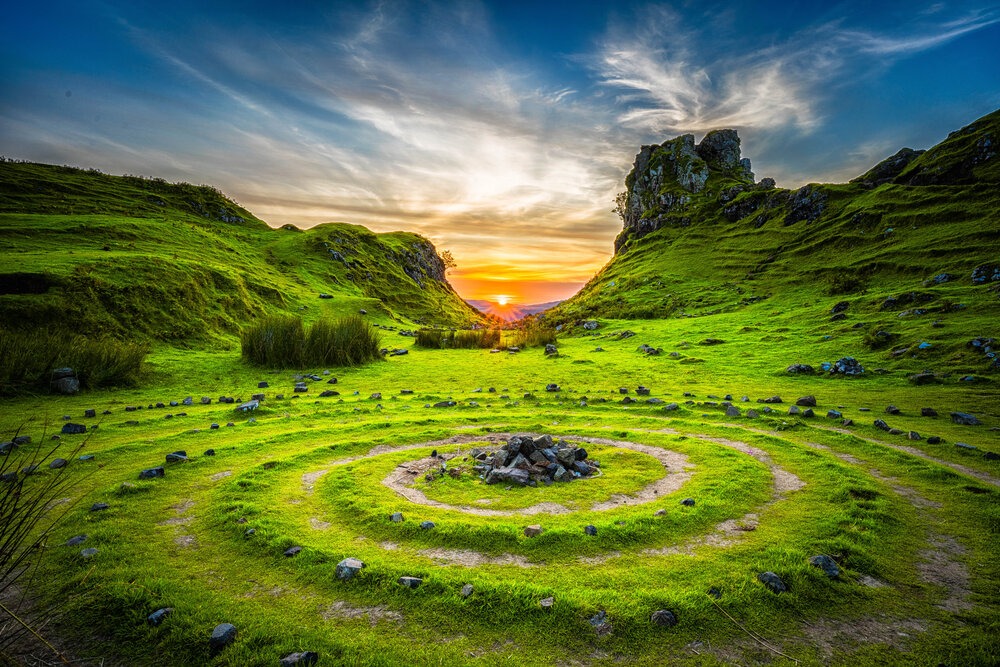
Table of Contents
What Is a Spiritual Journey?
A spiritual journey is the process of a person going on a quest to get a deeper understanding of themselves and what they believe in, when it comes to God and how the Universe works. It’s both an internal and external journey.
Usually, you will feel an urge to go to a certain place that doesn’t go away, like Machu Picchu or the Camino de Santiago trail.
Or simply an urge to leave your hometown and embark on a big adventure.
It can be a true comfort zone challenge, but it’s important that you listen to your intuition and gather the courage to do it.
The Most Spiritual Places To Travel In The World
Without further ado, here are the top 60 most spiritual travel destinations on Earth:
The most spiritual places to travel in Europe
One thing I love about living in Europe is that there are so many different cultures on the same continent, all rich in history.
It’s not uncommon to find flights and train tickets for less than a restaurant dinner!
So if you’re embarking on a spiritual journey in Europe, you might as well tick off several on a trip.
You can find cheap flight tickets at Kiwi and train tickets at RailEurope.
So, why is Europe one of the most spiritual places in the world? Let’s explore!
Glastonbury is an energy vortex, said to be one of the seven earth chakras (spiritual energy centers) with the ley lines of St. Michael and Mary Magdalene crossing over it. The town has several ancient sites, such as Glastonbury Tor, connected to the legend of King Arthur, and the Glastonbury Abbey.
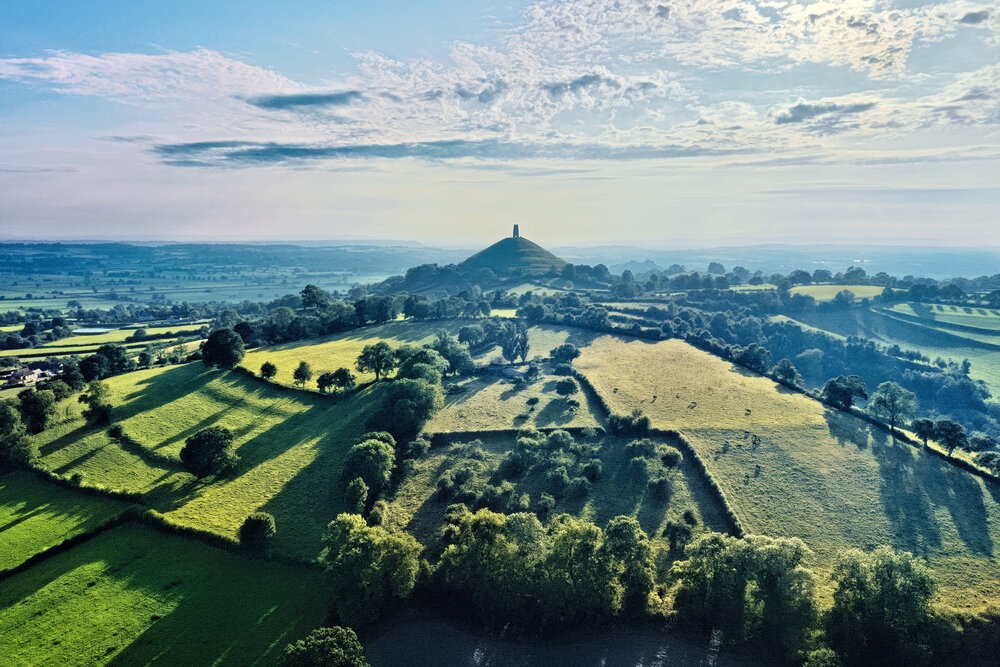
Legend has it that this unhabituated limestone island close to Ibiza is the third most magnetic place on Earth after The North Pole and The Bermudas.
This small mystical island has many myths surrounding it, such as that it was used to build the pyramids in Egypt, that it’s the tip of the sunken civilization of Atlantis etc. Take a boat from Ibiza, explore and meditate.
Monastery of St. Naum, Macedonia – Legend says that if you can hear saint Naum’s heartbeat when you press your ear against his tomb, it means you’re a good, pure soul. Thankfully, and to my surprise, I did hear what sounded like a heartbeat! The energy is so powerful here, both I and my friend started crying when we came in here.
Lourdes is one of the most famous healing shrines in the world. 1858, a servant saw a vision of the Virgin Mary, and over the next month, she was seen 17 times. Every year millions of pilgrims come here in hopes of healing miracles.
Camino de Santiago of the most famous trails in the world, leading to the Cathedral of Santiago de Compostela, in Galicia. Every year thousands of people walk this beautiful trail to find themselves. There are several different trails you can take, however the French Way, starting in St Jean Pied de Port, and the Primitive Way, starting in Oviedo, in Spain and the most popular.
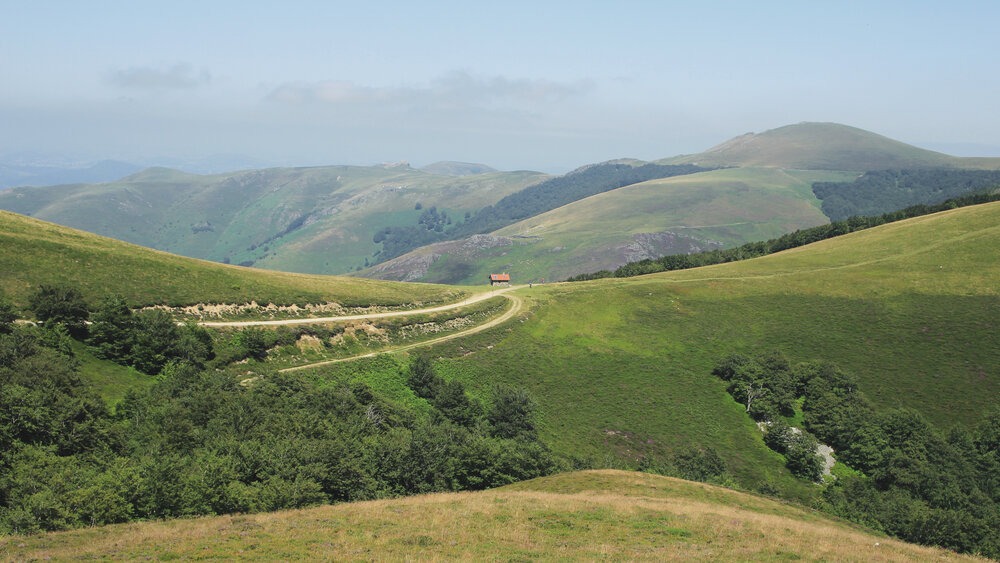
Cleanse your spirit and body in one of Moscow’s most significant baths. Remember to remove all your clothes, as it’s believed the bad spirits could lurk in your clothes. Use a venik (besom) briskly all over your body, for the true Russian experience.
Assisi is a small picturesque UNESCO world heritage town and the birthplace of two saints – St. Francis and St. Clare. Pilgrims have come here ever since the 13th century. Make sure to check out the incredible Basilica di San Francesco.
A holy mountain with one of the oldest monastic communities in the world with 20 monasteries and around 2000 monks. Unfortunately, women are not allowed here (not even female animals!), as it is believed it will distract the monks.
This is a controversial one, as some people believe this is just a hill. However many experts and scientific research say that not only are the Bosnian pyramids real pyramids, but also the biggest healing place in the world. The source of electromagnetic energy is located at a depth of 2,440 meters. There is a total of five pyramids discovered – Sun, Moon, Earth, dragon, and Love. The Sun’s Pyramid is the highest in the world – it’s 220 meters tall, making it the tallest pyramid in the world.
If you’ve never heard about the megalithic monument Stonehenge in England, then you have literally been living under a stone. Stonehenge is considered to be the most architecturally advanced, prehistoric stone circle on the globe. Although the purpose is still unknown by archeologists, it’s a powerful energy place definitely worth visiting, especially during the solstice celebrations.
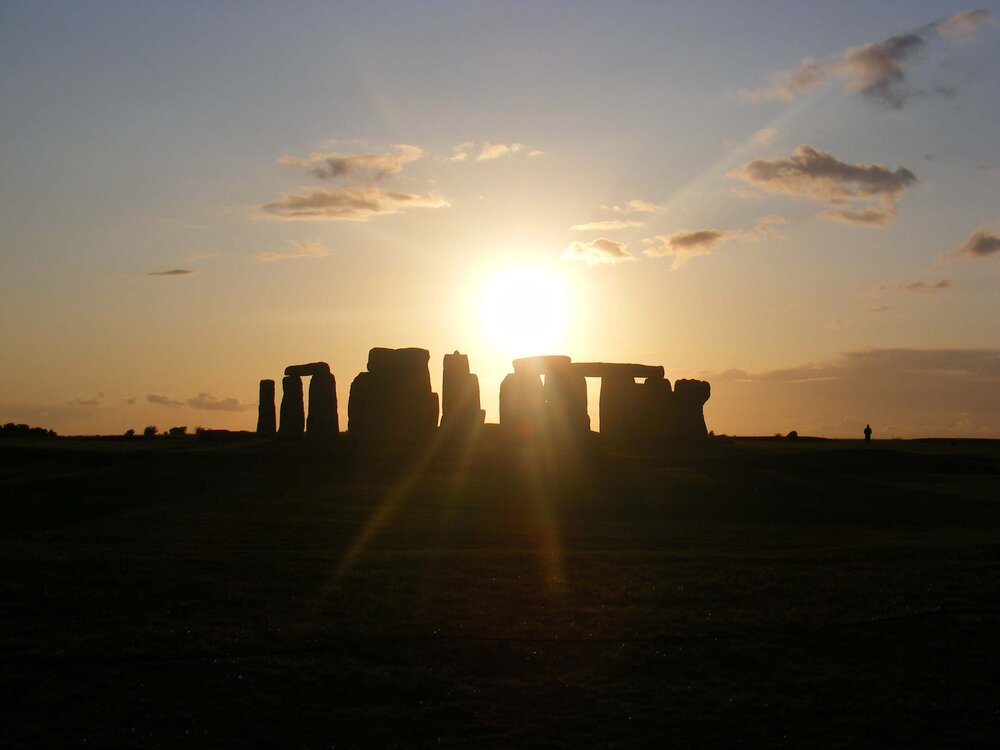
Hill of Tara in Boyne Valley is one of the most important sacred sites in Ireland, with around 30 man-made monuments all over the hill. It was the seat if the High King from the Iron Age through to the Norman Invasion, but has been an important place even before that. I visited the hill of Tara when I was living in Dublin 2014, and although we don’t know much about this place, I can say it has a very powerful energy.
This 1466 m tall volcano and glacier in the west of Iceland is said to be an energy vortex and one of the seven Earth chakras, on the same ley line as Mt Shasta and the Keops Pyramid in Egypt.
Beautiful Abbey on a small island in France. It was built in the 8th century after Aubert, a local bishop was visited by Archangel Michael in a dream. It’s crowned by a gilded statue of Michael slaying a dragon, symbolizing the triumph of good over evil.
Did you know Scotland also has a Stonehenge? This historical monument of standing stones, also called “The Stonehenge of the North”, resembles Stonehenge and has just as a mysterious past, and has been featured in many Hollywood movies.
This beautiful mountain range is believed to have very powerful natural energy, one of the strongest energy fields in the world. People who camp here often have vivid lucid dreams.
Delphi, the center of worship for the God Apollo, is not just another Greek ruin. This archaeological site has for a long time been a spiritual and religious center and was in ancient Greece called “the navel of the world”, or the place where heaven and Earth meet.
Top spiritual places to travel in Asia
Asia is a gold mine when it comes to sacred sites. Beautiful temples and places or worship are everywhere you turn your head. It was a bit of a challenge to narrow down the list, but here are the top high-energy spiritual places I can recommend in Asia.
Cambodia’s most iconic temple complex, The 7th Wonder of the World Angkor Wat is a must-visit on your next Asia trip. This enormous monument was initially a temple dedicated to the Hindu God Vishnu, but eventually became the meditation headquarters for Buddhist monks.
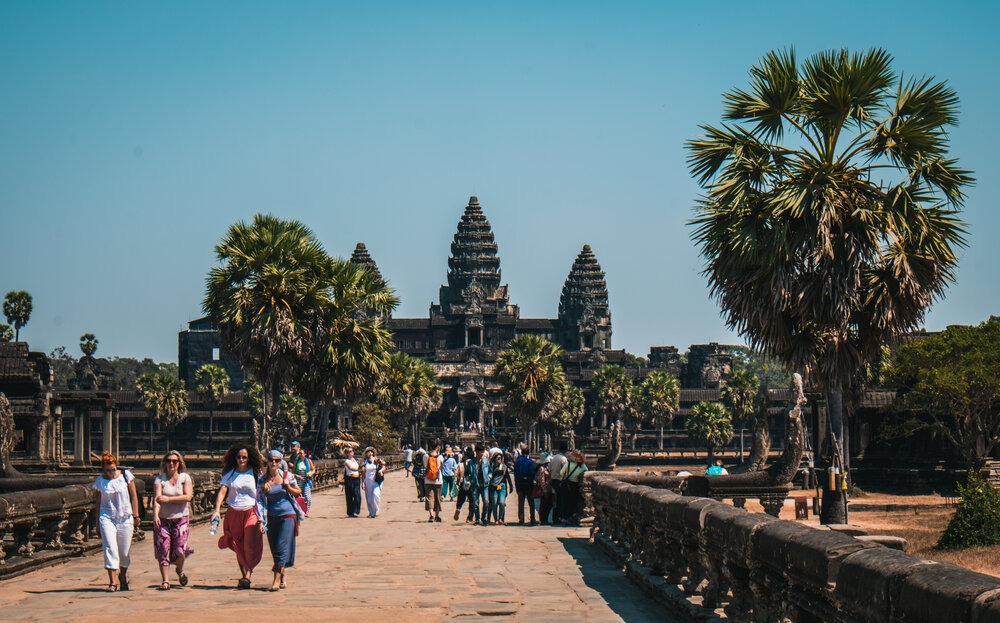
The spiritual capital of India and the oldest living city in the world, dating back to 2,000 BCE. This city situated in the Ganges valley is considered by Hindus to be the holiest of the seven sacred cities. Make sure to check out the Vishwanath temple, dedicated to Lord Shiva.
Bali is a spiritual traveler’s dream – beautiful temples, yoga retreats and incense in the air.
One spiritual experience you might not have heard about is trekking Mt Batur, Bali’s next biggest volcano. The Batur Sunrise Trek is a day trip that you don’t want to miss.
I went here last year after my psychic told me I would get an activation at a volcano in East Bali. So I sat on a bench on the summit on the volcano, cleared my mind and started meditating. As the sun came out, I saw glitter dancing around everywhere, and it was coming from my inner eye. I also felt a pins and needles kind of sensation, with blood going from my arms to my hands. It was so beautiful to meditate at this powerful energy place, and I recommend you to do the same!
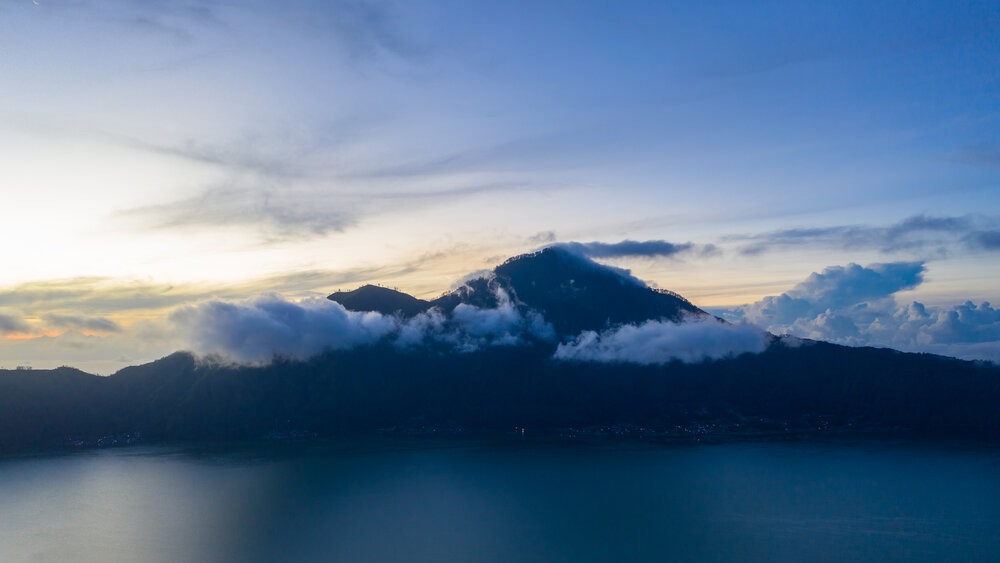
Mecca is the holiest city in Islam and is situated in the Ṣirāt Mountains. The founder of Islam, Muhammed, was born here and every year thousands of pilgrims come here from all around the world. It is to this holy city that Muslims turn several times a day when they pray.
This white unique temple, 5 km from Chiang Rai, is a must-visit on your next Thailand trip. Why white? The color white is supposed to symbolize the purity of the Buddha.
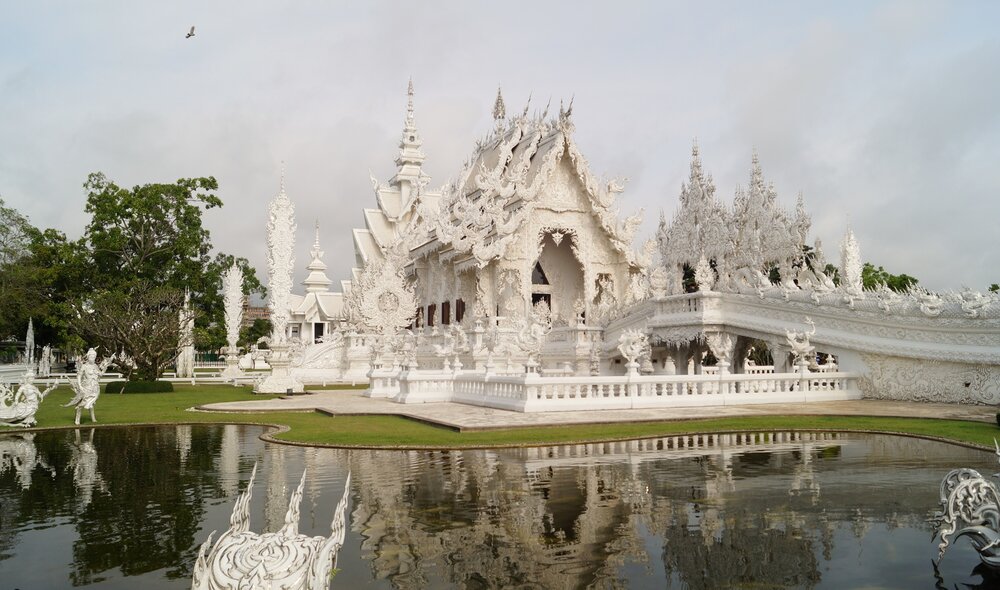
A town south of Jerusalem which is believed to be the birthplace of Jesus.
A 2243 m tall holy mountain situated in central Sri Lanka. For over a millennium the peak has been a place of pilgrimage for Christian, Muslim, Hindus and Buddhist Sri Lankans, and is traditionally climbed at sunrise. Hindus say it belongs to Shiva and Christians and Muslim says it’s Adam’s footprint, left when first setting foot on Earth after having been cast out of paradise.
This wall in Israel is considered the most important site for Jewish people. It’s a place for prayer and religious and national gatherings.
The “Salty Sea” is actually a huge lake. At 400 m below sea level, it marks the lowest point on earth. It is also famous for being a biblical site and for its healing powers.
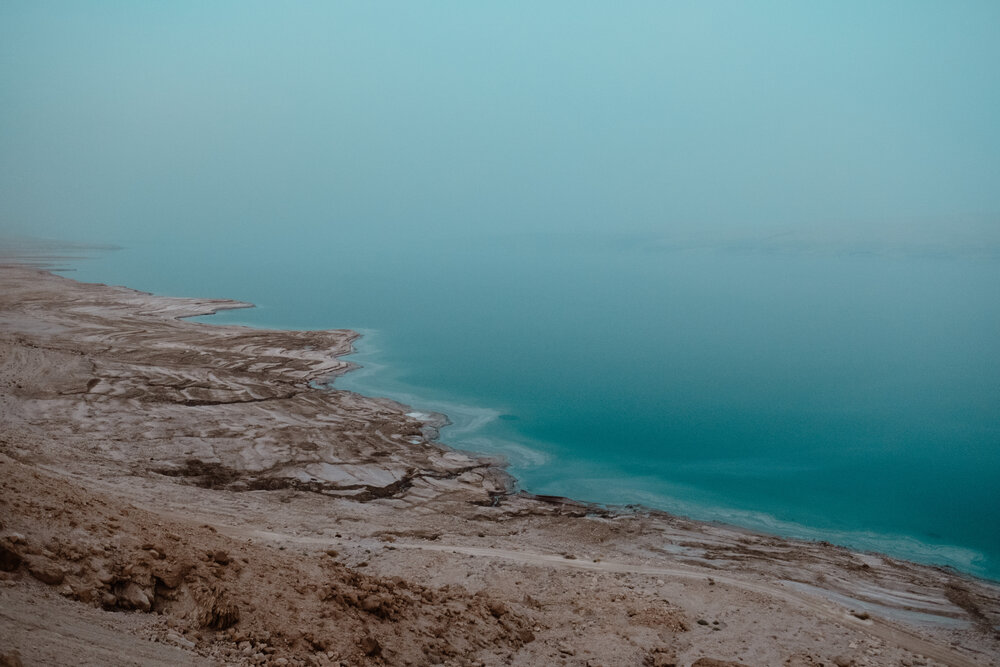
Want to combine hiking with culture? Then maybe Japan’s most famous pilgrimage route is for you. A 1200 km loop around the island of Shikoku with 88 temples.
This village in the state of Bihar is one of the most important pilgrimage sites for Buddhists. It is believed that this is the place where Buddha Shakyamuni sat under a tree and reached enlightenment.
The oldest Buddhist monument in the world, constructed around 750-850 AD, and a UNESCO World Heritage Site in Java. This huge, mandala-shaped temple was a hidden gem for centuries until it was discovered in 1814. Its name is translated as “the Buddhist temple on the mountain”.
The highest mountain in the world at an elevation of 6400 m above sea level. I went here on my spiritual journey in 2018, when I had just taken the decision to leave the rat race and become a digital nomad. I did a 12 day Mt Everest Base Camp (5380 m) hike and it was so beautiful (and safe!). I felt so connected to nature, it truly was a spiritual high. I recommend going in February, as it’s off-season and fewer people, so it becomes more of a spiritual experience.
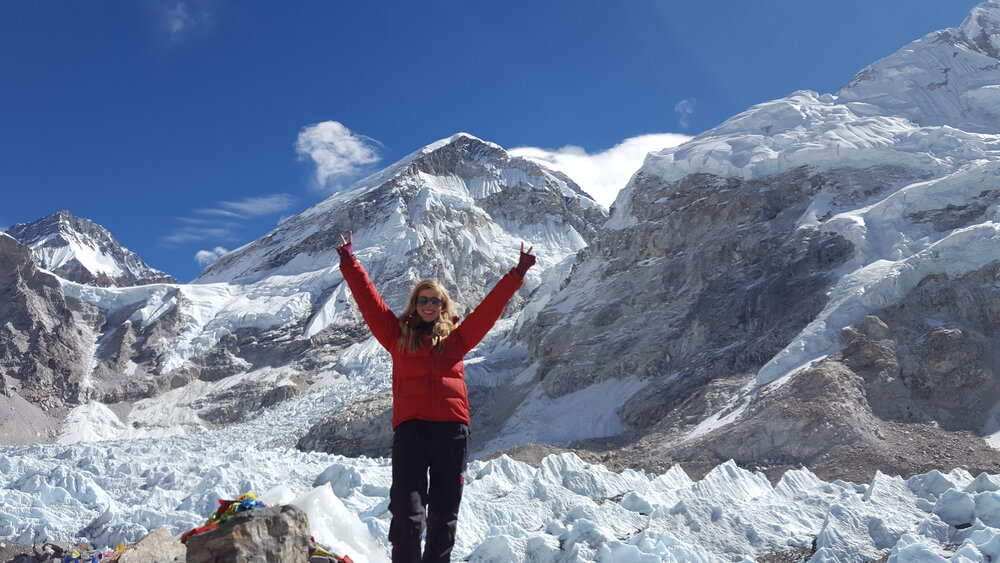
A spectacular holy mountain in west Tibet, and the most sacred places in Tibet. This 6638 m tall mountain is believed to be the center of the universe and the birthplace of the world. The pilgrimage hike is traditionally done clockwise and is called Kora. It’s a difficult trek but is believed to take you closer to enlightenment, which is not a bad promise.
Auroville is an experimental village near Pondicherry, striving to be a utopia free of government, religion, and money. The most important building in the town is the huge golden globe Matrimandir, a place for individual silent concentration. It’s beautiful and has incredible energy. I stayed in Sadhana Forest, a vegan eco-community, where I volunteered to plant trees and cooking.
Bhutan is a tiny mystical country between Tibet and India. It’s most sacred site and famous landmark is this Buddhist monastery, located in the cliffside of the upper Paro valley. The hike to Tiger’s Nest takes around 3-4 hours. Bear in mind that Bhutan can only be visited on a pre-arranged tour, such as this one .
The most spiritual places to travel in South America
When you think about spiritual destinations in South America, your first thought is probably Machu Picchu.
I absolutely loved Machu Picchu and it definitely lived up to the hype.
However, South America has so much more to offer to the spiritual traveler. Read on to discover where to go on a spiritual journey to South America.
The impressive Inca ruins of Machu Picchu in the slopes of Andes is one of the most famous sacred sites in the world, and rightfully so. I cannot describe with words the feeling I felt as I finally saw it with my own eyes after m several days of hiking. Make sure to take some time to meditate at this high energy place. There are several routes leading up to Machu Picchu, but I chose the Inca Jungle Trek , as it’s scenic and full of fun adventures like river rafting and zip lining.
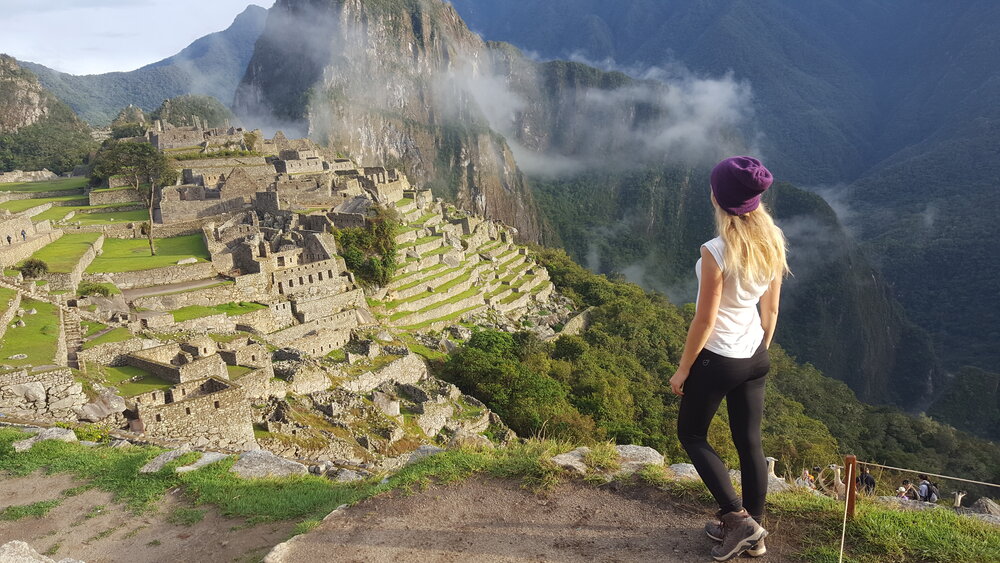
These mysterious ancient geoglyphs depicting animals and plants are etched into the Peruvian desert are so huge that they can only be seen in the sky. Who created them, why and how? Take a flight tour or take a look from the viewing tour (limited view).
This ancient city close to Lake Titicaca is a must-visit when you’re in Bolivia. It’s speculated it was built by aliens. It’s a mystery how they managed to make such precise and perfect cuts. Also, some blocks weigh over 50 tons! There is a gate called “Puerta del Sol” that is speculated to have been a dimensional gate.
A valley in the Andes with many historic ruins, colorful markets, spiritual retreats, and breath-taking landscapes.
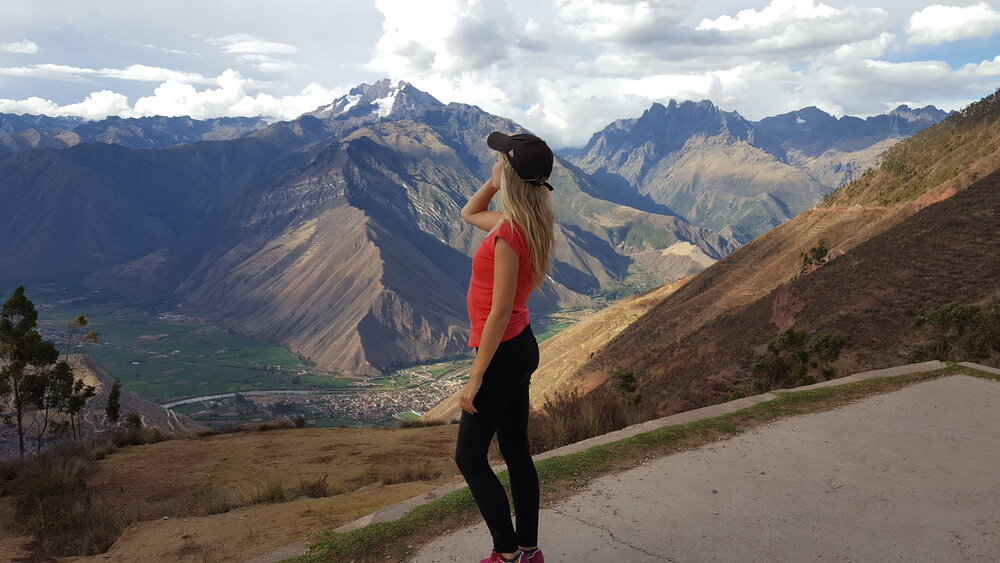
An island in the southeastern Pacific Ocean west of Chile, famous for their tall mysterious stone statues called Moai.
The world’s highest lake (3810 above sea level!) and a powerful energy vortex due to the two ley lines intersecting at the lake. I was surprised to see tribes living on the lake, on man-made islands made of hay!
I have been here and can confirm that this mountain is rainbow-colored! This magical holy mountain is believed to be the deity of Cusco and is a site of worship and offerings. It can be visited as a day trip from Cusco. You can walk or take a horse to the top. I decided on the horse ride since the high altitude (5200 m!) makes the hike quite demanding.
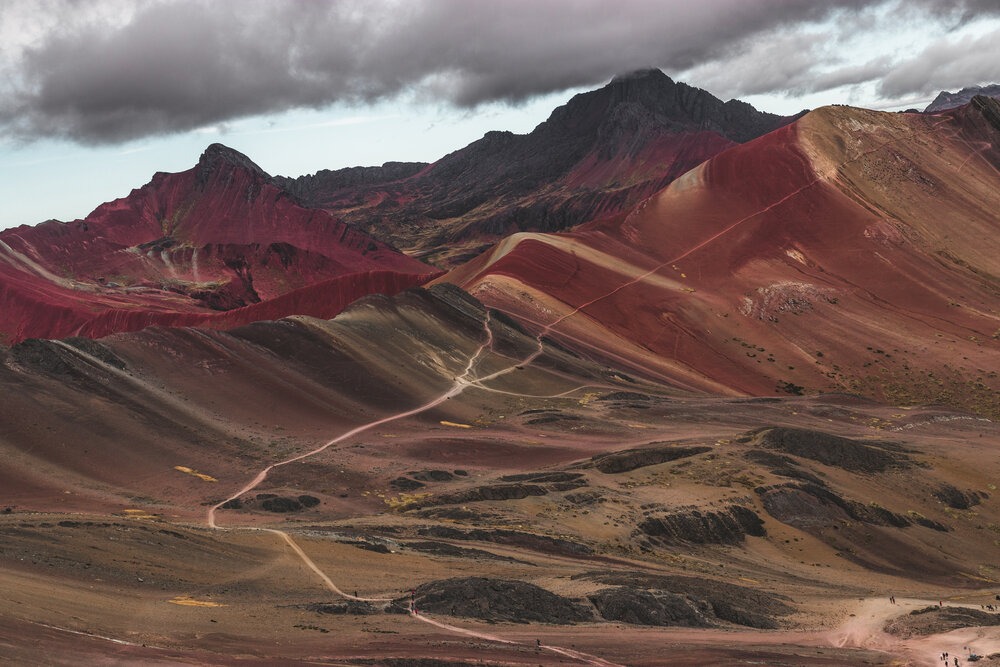
When I went on my first spiritual journey, I did ayahuasca in Peru, a powerful psychedelic that opens your mind and heals trauma. If you’re planning on to taking an Ayahuasca trip, then I highly recommend you do it the traditional way with shamans in the Amazon, the birthplace of Ayahuasca. I did a 5 day retreat with 3 ayahuasca ceremonies at Dreamglade , a short ride from Iquitos and really enjoyed my experience.
A futuristic temple in the foothills of the Andes in Chile, that uses light for its spiritual and design inspiration.
The Lost City, also called “the new Machu Picchu” is a popular multi-day trekking destination in the Colombian jungle, starting from the city Santa Marta.
Cute, spiritual town. This is your starting point if you’re going to Machu Picchu, but I highly recommend you spend at least 5 days in this charming town. You can take a day trip to Vinicunca Rainbow Mountain, find spiritual retreats and cute shops, take photos with cute llamas and see other ruins.
Top spiritual places to travel in North America
You might not associate North America with sacred sites, but this continent is actually one of the most spiritual places to travel in the world as it’s packed with high-energy places you don’t want to miss.
This beautiful red rock town in the US is a major energy vortex and one of the best places in the world for UFO spotting. You’ll also find an abundance of yoga and meditation retreats as well as crystal shops.
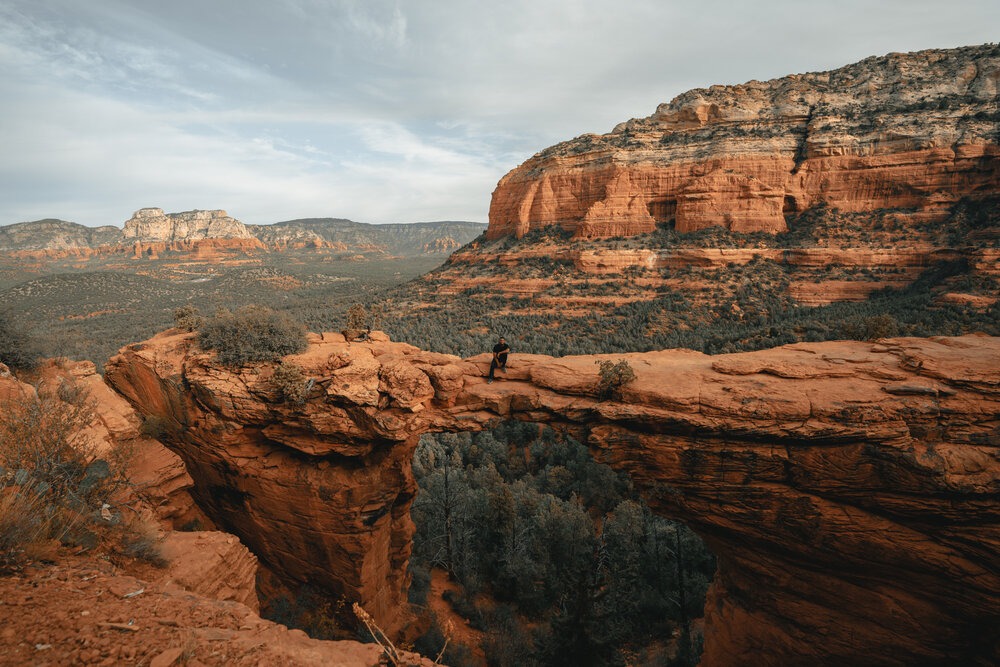
Haleakalā is the World’s largest dormant volcano and means the “house of the Sun”. According to harmoniousearth.org , “The Haleakala Volcano on Maui matches the Schumann Resonance at 7.8 cycles per second, the same resonance of our hearts and the natural state of Earth.” Local folklore says that the demigod Maui lassoed the sun from the volcano’s top. Go for a sunrise hike for the ultimate Haleakalā experience.
The holy Aztec city and pyramid complex Teotihuacan (‘the place where the gods were created’) is situated north-east of Mexico City, and has long been a place of mysteries. It’s one of the most sacred, spiritually charged places in the world.
Manitou Lake, also called Canada’s “Dead Sea”, is known for its healing powers since it’s so rich in minerals that it’s almost impossible to sink. Tribes came here from all over Canada to heal themselves in its water. Medicine men believed it was a gift from spirit and therefore called it Manitou, which means “Lake of Good Spirit”.
This mountain has one of the strongest energy vortexes in Northern America and the most sacred site in California. It’s said to be the root chakra of the Earth.
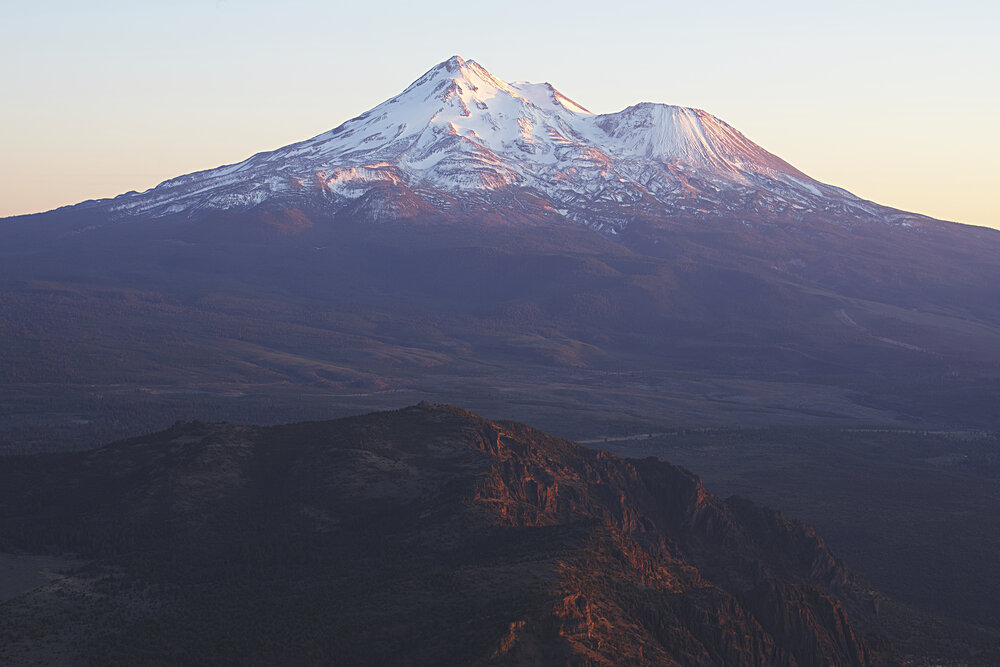
ECETI (Enlightened Contact with Extra Terrestrial Intelligence) is a ranch close to the majestic Mt Adams, with frequent UFO and Bigfoot sightings. On their website it says:
“The aim of ECETI (Enlightened Contact with Extra Terrestrial Intelligence) is to help with public awareness of the E.T reality and to assist people with connecting to positive otherworldly beings. “
I first heard about this magical ranch on the youtube channel Edge of Wonder , and have wanted to go there ever since.
Salem is famous for its connection to the Witch Trials of 1692, and is known as America’s Witch City. Learn magic from Salem witches or take a witch walking tour and learn more about the town’s occult past.

Top spiritual places to travel in Oceania
This beautiful continent in the South Pacific Ocean might not have many historical and religious monuments, but plenty of stunning natural high energy places.
Ayers Rock is maybe the first one that comes to mind, but there are some other spots you definitely don’t want to miss.
Uluru, also known as Ayers Rock, is not only Australia’s most famous landmark but is also said to be the solar plexus chakra of the world. The Aborigines consider this 346 metres high hill to be deeply sacred and magical.
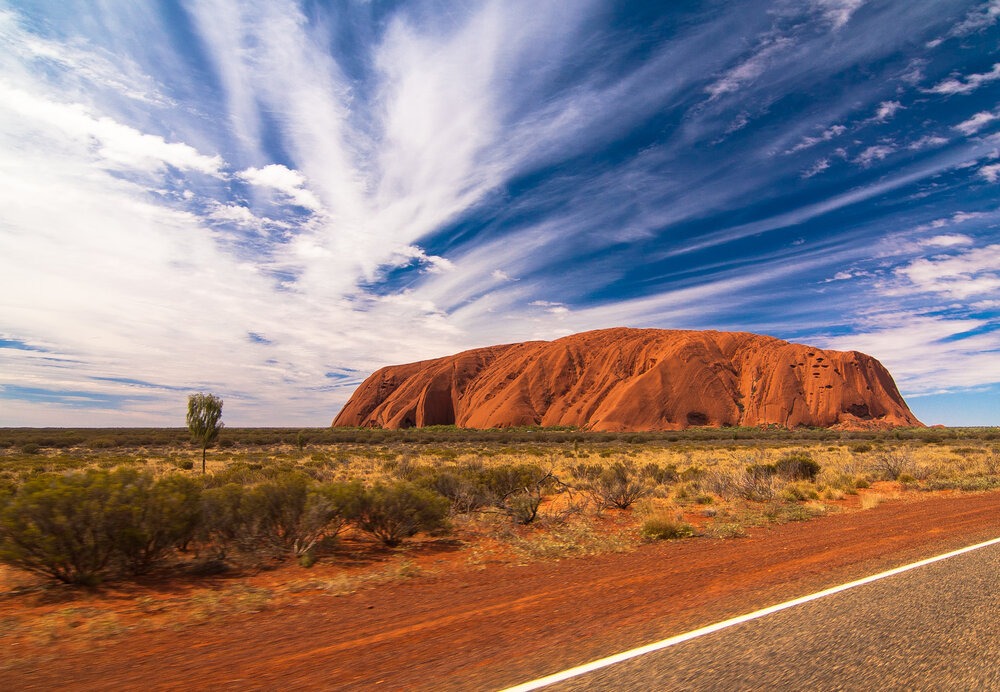
The northernmost point of New Zealand and the most significant spiritual place for Māori. According to Māori mythology, the spirits of their recently passed loved ones leave from this point on their journey to the afterlife.
Byron Bay is known as the spiritual and healing capital of Australia. There are always plenty of spiritual events going on, such as Byron Spirit Festival.
I went here on a day trip when I was doing an exchange semester in Perth and it literally felt like I was on another planet. All you can see is desert and thousands of limestone pillars. A fun fact is that for thousands of years, this has been a sacred place for indigenous women where they gathered to camp, give birth and hold ceremonies.
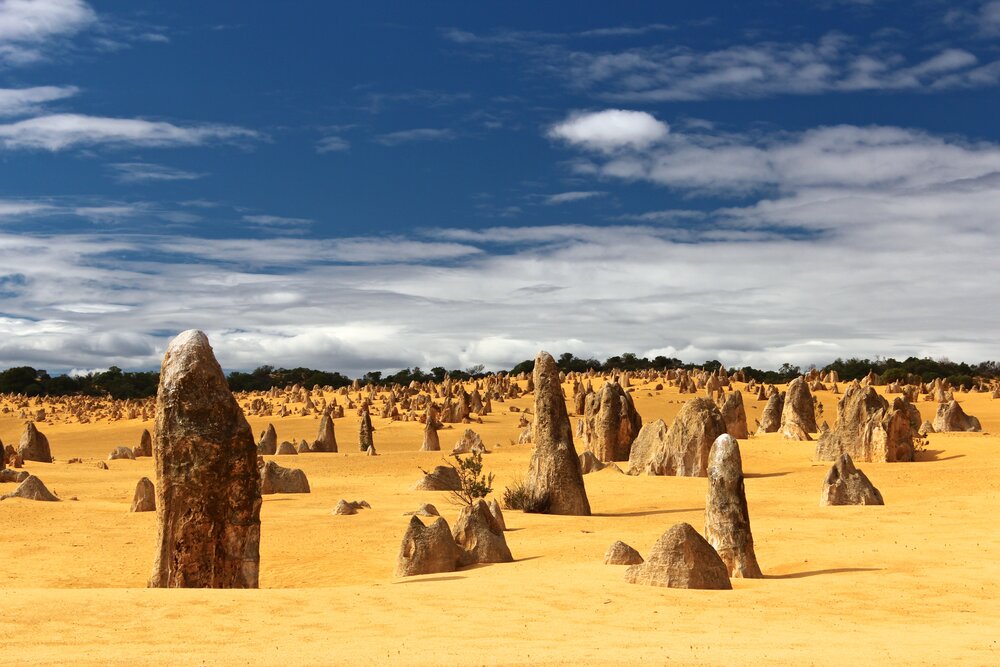
Top spiritual places to travel in Africa
Africa, home of the mysterious Great pyramids of Giza, is a continent that will not disappoint you if you’re on a spiritual journey.
However, Egypt is not the only country in Africa with a rich spiritual heritage. Read on to discover some hidden magical gems on this beautiful continent.
This 2 285 m tall mountain in Egypt is where the prophet Moses was given the ten commandments by God.
Ever since the 17th century, Moroccans have come here to visit these seven Sufi mystics in hopes the saints could heal their ailments and fulfill wishes. The saints include Sidi Youssef Ben Ali, Qadi Ayyad, Sidi Bel Abbas, Sidi Suleiman Al Jazuli, Sidi Abdel Aziz, Sidi Abdullah Ghazouani, and Imam Souhaili.
Table Mountain in Cape Town is not only a popular tourist spot, but it’s also considered to be one of the world’s chakras, namely the Earth chakra. but a Great place to go for a mindful walk or meditate and soak in the spiritual energy.
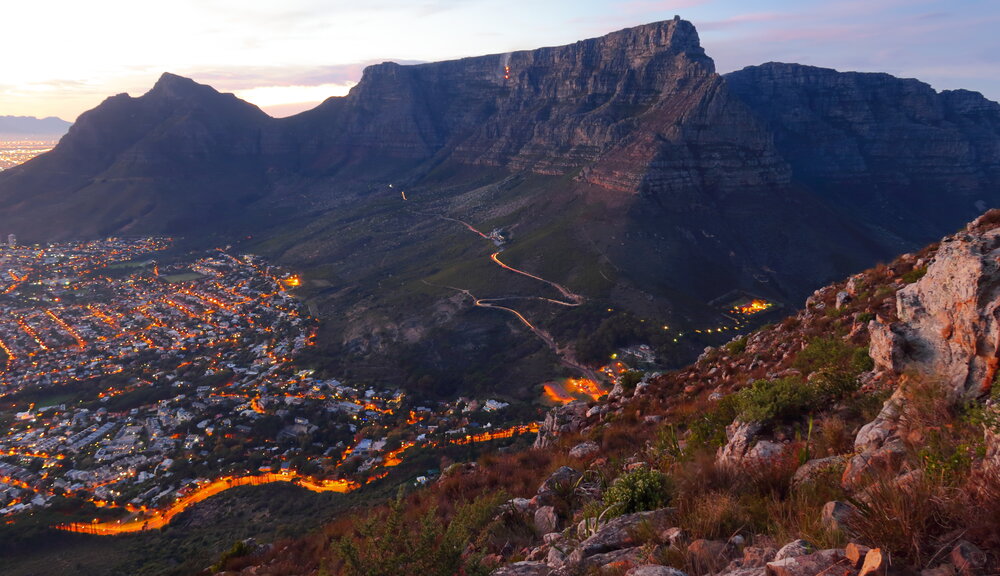
Also called The Basilica of Our Lady of Peace, this is the world’s largest church and perhaps one of the most beautiful. And believe it or not – it’s situated in an African coconut plantation.
Eleven stunning rock-cut churches in the holy town Lalibela. The biggest monolithic temples in the world and now a UNESCO World Heritage Site. Legends say an angel came and asked Lalibela to build the churches. It’s claimed it took 24 years to build the churches, which archaeologists claim are impossible – how were the buildings carved using the simple tools used in the Middle Ages, and how were the stones carried away?
This historical and old city in Egypt is often called the world’s greatest open-air museum. Luxor (or Thebes as the ancient city was called), was the capital of Egypt during the Dynasty of the New King Kingdom. Some of the most important landmarks are the Valley of the Kings, Temple of Karnak and Luxor Temple. A must-visit on your Egypt trip.
The most famous pyramids in the world and one of the most impressive man-made structures in the world. The purpose of the pyramids is still a mystery. Mainstream historians claim they were tombs for the pharaohs and their queens. However, not a single body has been found.
Nikola Tesla believes they were used as power plants with unlimited energy. If you want to read more about the unbiased history of the pyramids, I can highly recommend reading Fingerprints of the Gods , by Graham Hancock.
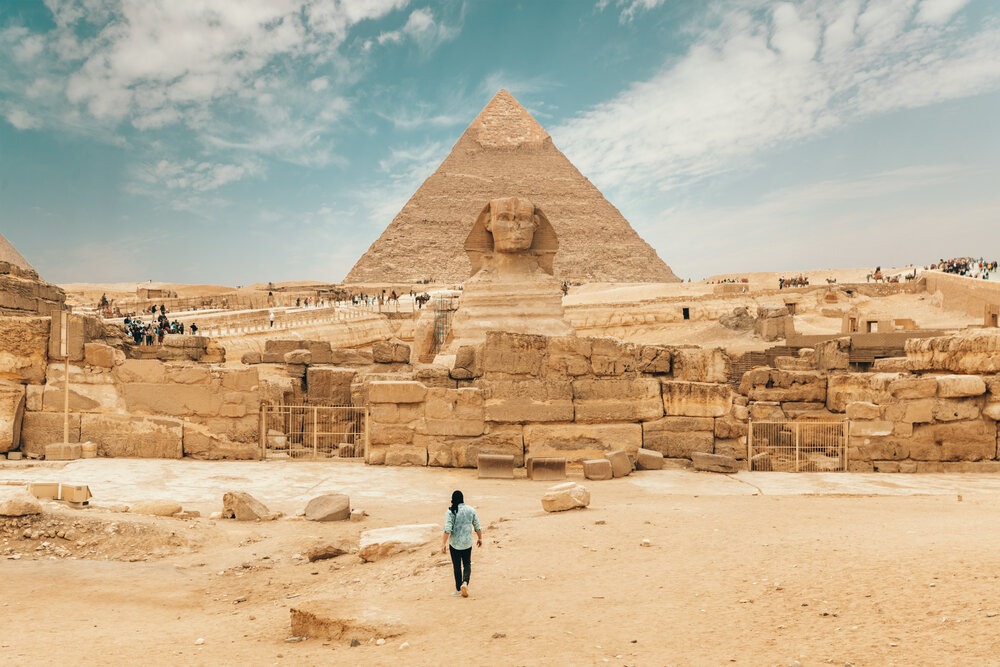
Should you go solo or in a group?
The first option is to go on a spiritual journey solo. I have travelled solo for years as a backpackers in my early twenties and are still doing it now as a digital nomad .
Many people are scared of travelling alone, but my favourite trips have been solo trips.
You are more open to meeting new people then and I’ve made friends for life this way. Just make sure you have a good travel insurance .
The second and safer option is to join a group tour . Make sure it’s a trustworthy tour company like TourRadar or Viator, as tour company scams are common.
If you have a tight budget, you can join a volunteer or work exchange program.
Worldpackers has hundreds of placements around the world where you get accommodation and sometimes food for free in exchange for some volunteer work.
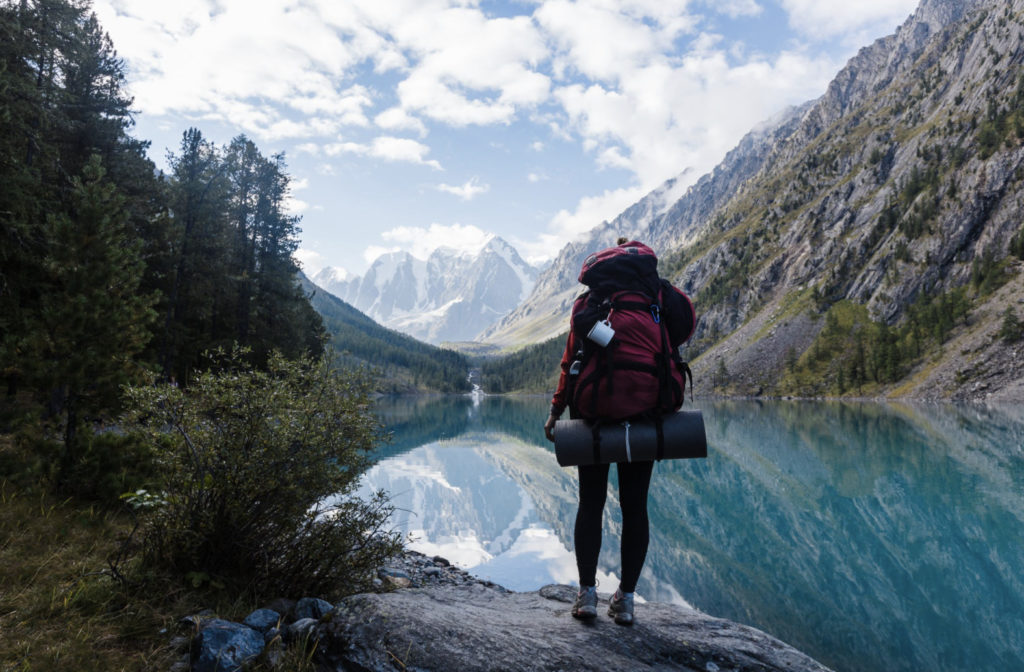

What’s a spiritual vortex?
Spiritual vortexes are spots where the earth’s energy is extra strong due to ley lines or energy fields crossing. Glastonbury, Mt Shasta and Sedona are some of the strongest spiritual vortexes in the world.
Where is the most religious place in the world?
There are many religious hotspots in the world, some important ones are Mecca in Saudi Arabia, Jerusalem in Israel and Tibet.
There you go, the top 60 most spiritual places to travel in the world. I hope you have found some inspiration for your spiritual journey.
Do you think I missed any destination? Have you been to any of the places listed? Let me know in the comments!

Julia Lundin
This post has 3 comments.
Really enjoyed reading through this list! I’m originally from northern CA, not far from Mt. Shasta. Currently I’m living in Normandy, France and definitely have a spiritual connection to this region, even fully unlocked my first past life memory here! (have had a few more since) I’ve been to the Mont St. Michel several times, on the last occasion -when we got to the highest level I saw an eagle circle the golden pinnacle at the top w some kind of serpent in it’s talons! Eagles have always been symbolic for me, so this was very amazing????????????
Good places however I would travel anywhere in Israel except Bethlehem this place is controled by phalastines and terrorists. Better go Tel aviv than this place or jerusalem control by jews not sure why you write bet lehem
Thank you I loved reading your article! So very interesting! Stephanie Z
Comments are closed.
Disclaimer: Some of these links go to one of my websites and some are affiliate links where I’ll earn a small commission if you make a purchase at no additional cost to you.
Spiritual content should be viewed as being for entertainment purposes only and in no way replaces proper legal, financial or medical advice. Like with everything in this reality, we can never know for sure, so exercise your own discernment and only take on as truth that which resonates for you as truth. Keep an open mind, but if something doesn’t resonate, please honour that.
Search this blog

Meet the founder
Welcome to The Spirit Nomad! We help lightworkers step into their power and soul mission. Read more about Julia Lundin…
The content is based on a combination of the author’s life experience and years of knowledge gathered through online research. However, like with everything in this reality, we can never know for sure, so exercise your own discernment and only take on as truth that which resonates for you as truth.
Related posts

42 Things to Do in Glastonbury – Ultimate Guide 2024

100 Free Spirit Quotes For The Wild And Free

Business Class Vs First Class – What Is The Difference 2024
- Terms and Conditions
- Refund Policy
© The Spirit Nomad 2023
- Digital edition

Fall 2023: “Holy places,” a three-session Bible study by the Rev. Dr. Meghan Johnston Aelabouni
07/18/2023 | Bible
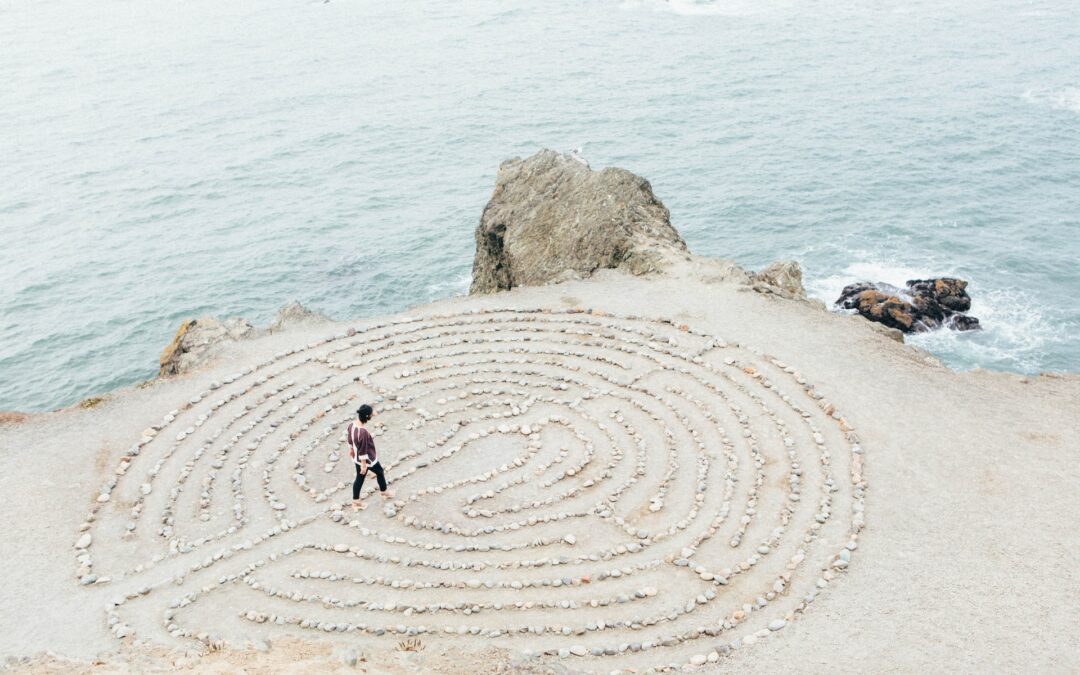
Physical places often shape our identities, relationships and faith. “Now you are the body of Christ and individually members of it,” Paul writes. Part of what this means is that faith doesn’t just reside in our thoughts or emotions. Faith resides in our whole bodies, and how our bodies “live and move and have our being” in the sacred places where God encounters us. In this Fall 2023 Gather Bible study, written by an ELCA missionary living in Jerusalem, we’ll explore what holy places mean, not only for the Holy Land of the Bible, but for each of us, wherever we may be.
September 2023 Holy places: Home Home can be the place we lay our head and the people we call family. Home can be our community or homeland. Home is also found wherever we truly and fully belong. This month, we consider the complexity and the promise of “home” through the stories of Israel’s exile, the ministry of Jesus, and the promises of Revelation.
Watch video for session one, “Holy Places: Home.”
October 2023 Holy places: Sanctuary For thousands of years, physical spaces have been set apart for individual prayer and community worship. “Sanctuary” is one word for such spaces. Throughout history, “sanctuary” has also referred to spaces of safety and refuge. If God is everywhere, what is the importance of sanctuary? What can Jesus’ teachings and Paul’s correspondence with the early church teach us about what sanctuary looks like today?
Watch video for session two, “Holy Places: Sanctuary.”
November 2023 Holy places: Pilgrimage Pilgrimage, a journey to a sacred place, is a spiritual practice with a long history in Christianity (and many other religions). In the Bible, pilgrimage is not only about the destination, but also about the “holy place” of the journey itself. Considering the journey of the Magi, the walk to Emmaus, and Jesus’ arrival in Jerusalem, we’ll ponder how pilgrimage can inspire, challenge and transform our faith and our lives.
Download Bible study
Watch video for session three, “Holy Places: Pilgrimage.”
20 Comments
With war going on where Meghan and her family lives, how are they doing? Are they in any danger?
Hi, Janet. Thank you for your message of concern. Here is an update on the Rev. Meghan Johnston Aelabouni: https://www.gathermagazine.org/we-have-felt-the-power-of-your-prayer-gather-bible-study-leader-continues-work-in-jerusalem/
When ca I download the November Bible Study of Holy Places?
Hi, Cindy, you can download session three of the Bible study here: https://www.gathermagazine.org/wp-content/uploads/2023/10/November2023_HolyPlaces_BibleStudy_reduced.pdf
Session 1 Holy Places under the Home Bodies It refers to Hebrews 3: 1-61
Hebrews 3 goes thru verse 19 What should it be, thru 16 or a different Hebrews chapter
Hi, Nancy! Thank you for contacting Gather magazine. The article had a misplaced comma on page 19 of the Sept/Oct issue. It should have read: Hebrews 3:1-6, 1 Corinthians 12:12-26.
It sounds like aa Bible study that will touch us all. I am looking forward to it.
Will there be an introduction video like there has been in the past that we can use for kicking off the study.
Hi, Catherine! Thank you for reaching out to Gather. We just posted the video for session one. You can access it here: https://www.gathermagazine.org/
Thank you for the fall overview. Our Bible study program has a fall kickoff in October to avoid conflicts with the Triennial and to enable the participation of our seasonal neighbors who return from their northern summer residences.
Will there be videos for the Fall studies too?
Hi, Nancy! Yes, we will have three videos for the Fall studies. You can access the first vide here: https://www.gathermagazine.org/
Thank you so much!
When will we receive the Sept issue. I need to know for setting Bible study dates
Thank you for reaching out to Gather magazine. The Sept/Oct issue is set to arrive in homes the last week of August. Here is a description of the study: https://www.gathermagazine.org/fall-2023-bible-study-holy-places-by-the-rev-dr-meghan-johnston-aelabouni/
Wishing you all the best, Cindy
Sounds wonderful!
Thanks for reaching out to Gather magazine. The September/October issue is set to arrive in homes the last week of August.
Submit a Comment Cancel reply
Your email address will not be published. Required fields are marked *
Save my name, email, and website in this browser for the next time I comment.
Notify me of follow-up comments by email.
Notify me of new posts by email.
- 2122: Growing Katie's Fund for the next 100 years
- 50th anniversary
- Bible study extras
Spiritual Destinations Around the World

In today’s fast-paced world, more and more travelers seek solace and inner peace through spiritual journeys. Spiritual travel, often called soul-seeking exploration, involves embarking on a quest to connect with one’s inner self, nature, and the divine. It goes beyond the typical sightseeing experience and delves into the realms of self-discovery and personal growth. As the popularity of spiritual travel continues to surge, people are discovering the transformative power of immersing themselves in the spirituality and mysticism of sacred sites around the globe.
In this blog post, we will embark on a profound voyage to explore the top spiritual destinations where ancient wisdom and modern seekers converge in harmony. From the sacred city of Varanasi in India to the awe-inspiring Machu Picchu in Peru , these spiritual destinations offer unique experiences that can enrich the soul and leave an indelible mark on one’s life journey. So, let us set forth on this spiritual odyssey and discover the profound essence of these sacred sites.
Benefits of Spiritual Travel
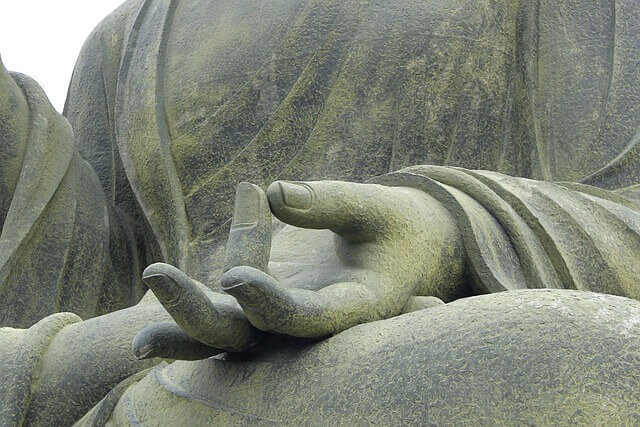
Embarking on a spiritual journey to various places in the world can be a profound and life-changing experience. It is known for offering many transformative benefits. Firstly, spiritual travel provides a fertile ground for personal growth and self-discovery. Stepping outside our comfort zones and immersing ourselves in unfamiliar cultures and sacred traditions allows us to delve deeper into our inner selves and gain a new perspective on life. Secondly, it offers an incredible opportunity for cultural immersion and understanding.
As we visit different countries and explore their unique customs and rituals, we develop a greater appreciation for the diversity of human experience and the interconnectedness of all beings. Thirdly, spiritual travel allows us to connect with nature and the divine. Meditating amidst serene landscapes or participating in ancient rituals that celebrate the natural world, we can feel a profound connection with something greater than ourselves. Lastly, spiritual retreats in these awe-inspiring destinations offer healing and rejuvenation. These places’ tranquil and spiritually charged atmospheres enable us to recharge our minds, bodies, and souls, leaving behind the stresses of everyday life. In essence, embracing the journey of spiritual travel opens doors to a world of wisdom from different religions and cultures, offering us an opportunity for growth, understanding, and a deeper connection to ourselves and the universe.
Top Spiritual Travel Destinations
This next section will highlight some of the top spiritual destinations around the world. Where seekers and travelers can embark on a soul-stirring journey of self-discovery and profound connection. From ancient cities steeped in religious heritage to natural wonders exuding spiritual energy, these sacred places offer transformative experiences that transcend cultural boundaries. Whether you seek a moment of peace and reflection in tranquil temples or the awe-inspiring power of majestic landscapes, these spiritual destinations promise to awaken the spirit and leave an indelible mark on your heart. Join us as we venture forth to explore the mystical allure and profound wisdom found in the most spiritually enriching corners of the globe.
Varanasi, India
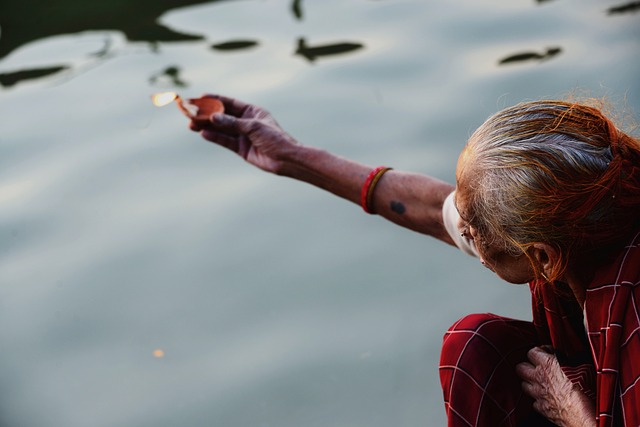
Varanasi , a city steeped in religious significance, stands as one of the oldest continuously inhabited places in the world and remains a holy site for devout believers. This spiritual destination is brimming with a rich heritage and sacred sites that have attracted seekers from various corners of the globe for centuries. At the heart of Varanasi flows the revered Ganges River, considered a lifeline of spirituality and purification. As the sun rises over the ghats, the riverbanks come alive with captivating rituals, including ancient prayers, fire ceremonies, and poignant rituals of life and death.
Wandering through the narrow alleys, visitors can explore the city’s numerous ancient temples, each with unique charm and historical significance. Varanasi is also renowned for its spiritual healing centers, where traditional practices aim to rejuvenate the mind, body, and soul. Whether attending a spiritual ceremony, meditating by the Ganges, or simply absorbing the serene atmosphere, Varanasi is an important site where one can experience the essence of spirituality and connect with the eternal flow of life.
Sedona, Arizona, USA
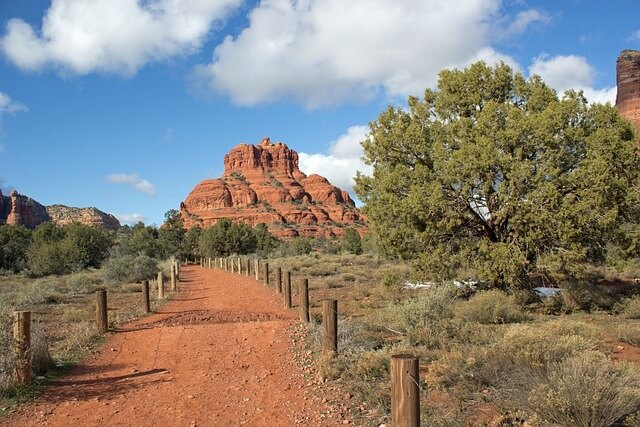
Sedona, Arizona , USA, is undeniably one of the most captivating spiritual places in the world, drawing in many visitors seeking to tap into its unique energy. This enchanting desert town is famed for its powerful energy vortexes, believed to possess healing powers and create a deep spiritual connection. Nestled amidst the breathtaking red rock formations, these vortexes serve as natural sanctuaries for meditation, self-reflection, and spiritual rejuvenation. Many travelers find themselves captivated by the stunning landscapes as they explore the trails and ancient sites, feeling an undeniable spiritual resonance in the midst of nature’s grandeur.
In Sedona , various healing centers and meditation retreats offer the chance to delve into transformative practices and traditional ceremonies guided by experienced practitioners. Whether drawn to the magnetic pull of the spiritual vortex or seeking solace among the awe-inspiring landscapes, Sedona invites visitors to embark on a profound journey of self-discovery and healing amidst the magic of the red rocks.
Machu Picchu, Peru
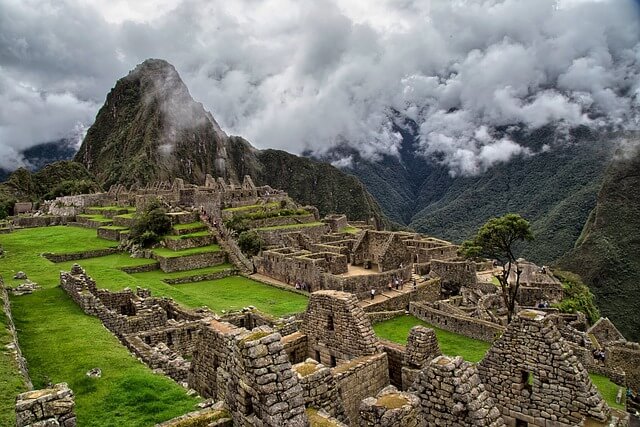
Machu Picchu , Peru , stands as an awe-inspiring testament to the ingenuity of the ancient Incan civilization. This deeply sacred site, nestled high in the Andes Mountains, has captivated the hearts of countless visitors and inspired many myths about its purpose and origin. As you approach this UNESCO World Heritage Site, you’ll feel an unmistakable spiritual energy enveloping the entire area. The mystical atmosphere of Machu Picchu is heightened by its breathtaking landscapes, with lush green peaks rising into the clouds and the ruins of an ancient citadel seeming to blend seamlessly with the natural surroundings.
Exploring this remote location is like stepping into the pages of history, and visitors can’t help but be drawn to the enigmatic allure of the ruins. While wandering through the stone pathways and intricately carved temples, you may connect with the wisdom of the ancient civilization that once thrived here. Machu Picchu is a must-visit destination for anyone seeking a deeper understanding of human history and the spiritual essence that resonates within these sacred grounds.
Are you into history? Check out this blog post about our top picks of historical destinations around the world .
Mount Kailash, Tibet

Mount Kailash, located in Tibet , holds great significance as a sacred mountain in both Tibetan Buddhism and Hinduism. Revered as a spiritual place of extraordinary power and energy, this majestic peak has drawn countless pilgrims and seekers on a spiritual journey for centuries. For devout believers, circumambulating Mount Kailash is a deeply profound experience, as it is believed to offer spiritual purification and blessings. The journey around the mountain, known as the Kora, is a sacred ritual with tremendous spiritual meaning, and each step taken on this holy path is seen as a step closer to enlightenment.
As you walk in the footsteps of countless pilgrims before you, the mountain’s mystical presence envelops you, and the air seems to hum with divine energy. Whether you’re an avid adventurer or a spiritual seeker, the experience of Mount Kailash is nothing short of transformative. Its imposing beauty and its spiritual significance offer an unparalleled spiritual experience that lingers in the hearts of all who have been fortunate enough to encounter this sacred place.
Kyoto, Japan
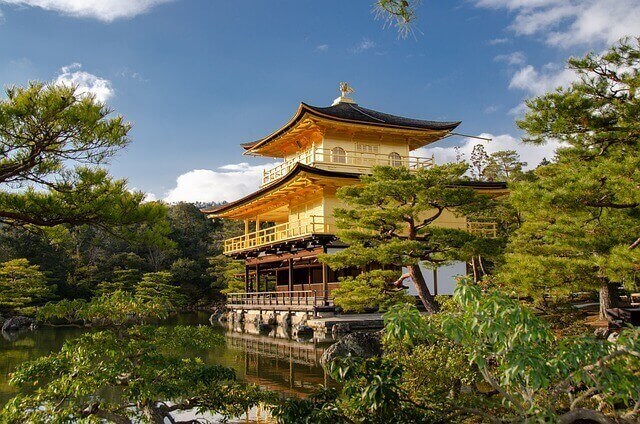
Kyoto , Japan, is a city that beckons travelers on a spiritual journey with its rich cultural heritage and serene landscapes. Steeped in history, this UNESCO World Heritage Site is home to many traditional temples, shrines, and Zen gardens embodying the essence of Japanese spirituality. As you wander through the ancient structures, each with its own unique story, you can’t help but feel the sacredness of this place seep into your soul.
Kyoto offers visitors a chance to experience Zen meditation and partake in tea ceremonies, where the art of mindfulness and contemplation come to life. Embracing the tranquility of Japanese culture, you’ll find a profound sense of peace amidst the bustling modern world. The magical experience of Kyoto is worth visiting for those seeking a deeper connection with themselves and the spiritual traditions that have shaped this enchanting city for centuries.
Mount Sinai, Egypt
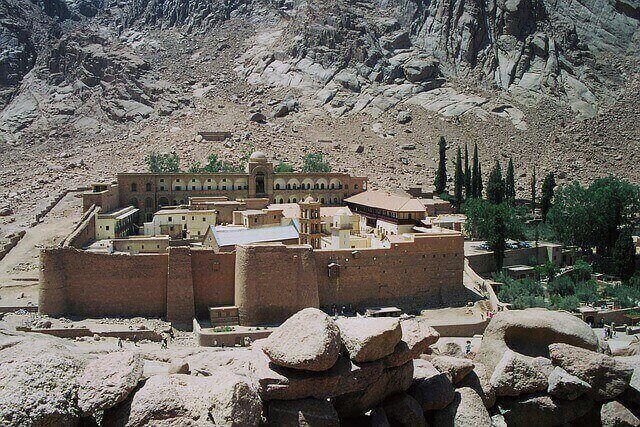
Nestled amidst the breathtaking landscapes of Egypt , Mount Sinai stands as an iconic spiritual destination revered by major religions. This sacred mountain holds profound significance as the place where, according to tradition, Moses received the Ten Commandments from the divine. A site of historical and religious importance, Mount Sinai beckons pilgrims and spiritual seekers alike to embark on a transformative journey to its summit. As you ascend the ancient pathways, the air thick with reverence, you can’t help but be awestruck by the spiritual energy that pervades this hallowed ground.
Surrounded by the vastness of the desert and bathed in the colors of sunrise and sunset, Mount Sinai imparts a sense of profound connection to the divine and to the stories of faith that have shaped humanity. For those seeking a deeper understanding of major religious history and a powerful spiritual experience, a pilgrimage to Mount Sinai offers an opportunity to connect with the heart of ancient wisdom and embrace the timeless teachings that still resonate across cultures and beliefs today.
Ubud, Bali, Indonesia
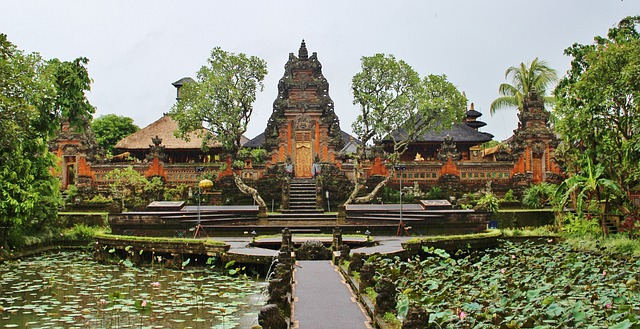
Ubud , Bali , Indonesia – a spiritual oasis nestled in the heart of the island’s lush landscapes. Known as the “Sacred Valley,” Ubud exudes a tranquil energy that draws spiritual seekers from all corners of the world. As you wander through its vibrant streets, you’ll discover ornate Hindu temples that stand as holy sites, where locals gather to honor their deities and sustain life’s spiritual balance.
The spiritual essence of Ubud is palpable, with its rich Balinese Hindu traditions woven into every aspect of life. From the enchanting rice terraces that seem to whisper ancient wisdom to the intricate offerings adorning doorsteps, this town invites you to embrace a deeper connection with yourself and the divine. Whether you find solace in meditation, immerse yourself in a yoga retreat, or bask in the serenity of its natural beauty, Ubud promises an enriching spiritual journey that touches the soul and lingers in the heart long after you leave its magical embrace.
Jerusalem, Israel
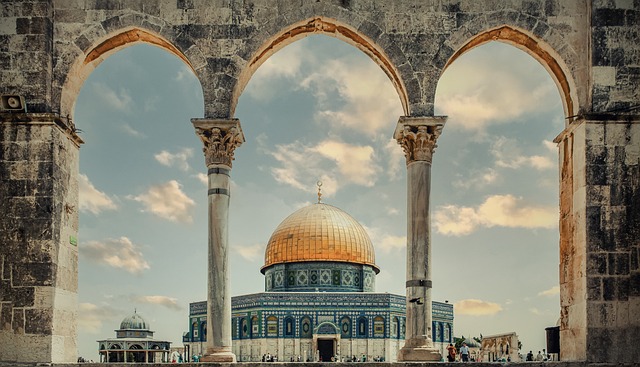
Last on our list of spiritual destinations around the world is Jerusalem . Jerusalem , Israel , the holy city that serves as a spiritual beacon for believers of various faiths across the globe. Steeped in historical and religious significance, Jerusalem is a pilgrimage site and a sacred place for Judaism, Christianity, and Islam. As you walk through its ancient streets, you’ll encounter the revered Western Wall, a symbol of Jewish heritage and devotion.
The city’s rich tapestry of history and faith comes alive as you explore the ancient sites, including the Church of the Holy Sepulchre and the Dome of the Rock. Beyond its spiritual allure, Jerusalem also offers the chance to rejuvenate the mind and body at the nearby Dead Sea, renowned for its healing properties. A journey to Jerusalem is a transformative experience where the sacred essence of this city resonates deeply, and the harmonious blend of faiths reminds us of the shared human connection that binds us all.
Choosing the Right Spiritual Travel Destination
Selecting the perfect spiritual travel destination requires careful consideration and thoughtful introspection. Firstly, consider your personal interests and beliefs, as this will determine the type of experience you seek. Whether you are drawn to religious sites, major religious landmarks, or places with standing stones that emanate spiritual energy, aligning your destination with your beliefs will create a profound connection. Secondly, conduct thorough research on the history and significance of potential locations.
Understanding the stories and sacred traditions surrounding holy sites will deepen your appreciation for their spiritual importance. Additionally, seeking recommendations and reviews from experienced travelers can provide valuable insights and help you discover hidden gems with unique healing properties. Lastly, before you begin your journey, please take time to reflect on your spiritual goals and intentions. Whether seeking inner peace, healing, or a deeper connection with the divine, clarifying your purpose will guide you toward the destination that resonates most profoundly with your soul. Combining these thoughtful considerations ensures that your spiritual travel experience becomes an unforgettable and transformative chapter in your life’s journey.
Practical Tips for Spiritual Travel
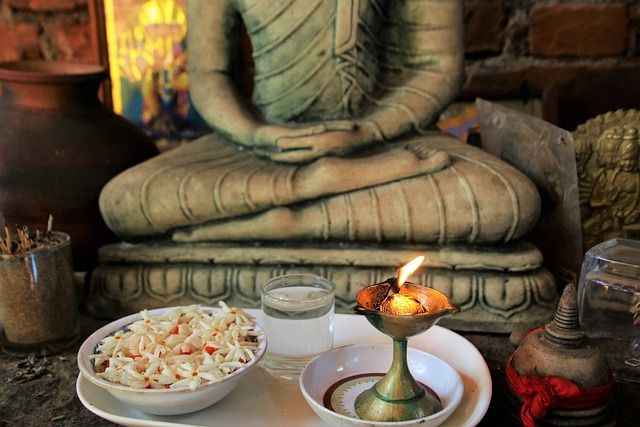
When embarking on a spiritual journey to major religious and holy places, practical preparation can greatly enhance the depth of your experience. First, please make sure you pack essentials for your spiritual practices, such as a comfortable meditation cushion and a journal to capture profound insights and reflections along the way. As you immerse yourself in the beauty of sacred places, respecting local customs and traditions is essential.
Embrace the spirit of humility and openness as you partake in rituals and ceremonies that hold deep meaning for the communities that call these places home. Throughout your journey, practice mindfulness and self-reflection, allowing yourself to be fully present in each moment and absorbing the spiritual energy of the sacred places you visit. Stay open-minded, for spiritual travel often presents unexpected opportunities for growth and connection. Embrace new experiences with an open heart, as they may lead you to profound revelations and a deeper understanding of your own spiritual path. Integrating these practical tips into your pilgrimage to sacred places will enrich your spiritual travel with meaning, wisdom, and transformative encounters that stay with you long after the journey ends.
In conclusion, our exploration of the top spiritual travel destinations has taken us on a journey to some of the most sacred and awe-inspiring places in the world. From the rich spiritual heritage of Varanasi , India , to the mystical energy of Sedona , Arizona, and the ancient wisdom of Machu Picchu , Peru , and Mount Kailash, Tibet, we have witnessed the profound allure of these sacred sites. In Kyoto, Japan, we embraced the tranquility and spirituality of traditional temples and Zen gardens.
As we encourage you to embark on your own spiritual travel journey, we remind you of the transformative potential these experiences hold. The act of immersing ourselves in the culture, rituals, and healing properties of these holy places has the power to open our hearts, expand our minds, and connect us with the deeper essence of life. Through spiritual exploration, we gain new perspectives, a deeper sense of purpose, and a profound connection with the world around us. So, let us be inspired to venture forth on a spiritual travel odyssey, seeking the sacred places that resonate with our souls, and let these transformative experiences enrich our lives in ways we could have never imagined.
Did you like this blog post? Read many more on our travel blog here !

Cecilia Dos Santos
Hi! I am Cecilia. I love to explore new places around the world. I believe that it is our responsibility to travel as sustainably as possible when we are as privileged as we are.
Singapore Travel Guide
The best hikes in europe, you may also like, thailand 2 week itinerary, making the most of student discounts around the..., 10 hidden gems to discover when interrailing in..., the 25 best road trip roadside attractions in..., where to vacation in april: where is it..., where should you go for your easter holiday, top budget-friendly travel destinations, thailand travel guide, where to travel to in march, learning and following other countries’ traffic rules, privacy overview.
* I consent to have this website store my submitted information.
Receive all the best news, offers, discounts and more straight to your inbox
Spin the wheel for a chance to win big on ecohotels.com!

India’s Top 10 Sacred Travel Destinations: A Spiritual Journey
- Updated on June 19, 2023
- India , Pilgrimage

India, a country rich in cultural diversity and spiritual heritage, is renowned for being a land of mysticism and faith. Blessed with a myriad of sacred destinations, India invites millions of visitors, pilgrims, and spiritual seekers every year to embark on enlightening journeys that penetrate the depth of the soul. In this article, we explore the top ten sacred travel destinations in India that offer a truly spiritual journey to the inquisitive traveler.
Table of Contents
Spiritual Heart of India: The 10 Must-Visit Sacred Destinations
1. varanasi, uttar pradesh.

Considered one of the oldest inhabited cities globally, Varanasi , or Benares, is often referred to as the ‘spiritual capital of India’. The city is believed to be Lord Shiva’s abode, which is the destroyer in the holy Hindu trinity. Life here revolves around the sacred river Ganga, where millions gather for the spiritually purifying dip.
The evening Ganga Aarti (prayer ceremony) at the Dashashwamedh Ghat is a sight to behold, wherein priests perform rituals with fiery lamps and incense, engulfing the surroundings with spiritual energy. With winding narrow lanes, age-old temples, and the pervasive spiritual aura, Varanasi truly captures the essence of spiritual India.
- Ghats of Ganga: Dashashwamedh Ghat, Assi Ghat , and Manikarnika Ghat
- Temples: Kashi Vishwanath Temple , Sankat Mochan Hanuman Temple
- Evening Ganga Aarti
How to Reach: Varanasi has its own airport (Lal Bahadur Shastri International Airport) and is well connected by rail.
Best Time To Visit: October to March, when the weather is pleasant.
Tour Duration: 2-3 days
- Delhi Agra Jaipur Varanasi Travel
- Golden Triangle With Varanasi Trip
- 14 Days Rajasthan and Varanasi Tour
- 5 Days Varanasi Prayagraj Ayodhya Trip
- 3 Days Varanasi Temple Trip Itinerary
- Check Varanasi More Packages
2. Haridwar, Uttarakhand

Haridwar, meaning ‘Gateway to God,’ is one of the seven holiest places in Hinduism. It is here that the sacred Ganga River leaves the mountains and enters the plains. Every 12 years, Haridwar hosts the world’s largest religious gathering – the Kumbh Mela .
Millions of devotees congregate here to take a dip in the holy Ganges, believed to liberate one from the cycle of birth and death. The renowned Har Ki Pauri Ghat, Mansa Devi Temple, and the awe-inspiring Ganga Aarti encapsulate the profound spirituality of Haridwar.
- Har Ki Pauri Ghat: Known for its Ganga Aarti
- Temples: Mansa Devi Temple, Chandi Devi Temple
- The Kumbh Mela: A religious festival occurring every 12 years
How to Reach: The nearest airport is Dehradun’s Jolly Grant Airport. Haridwar railway station connects the city with other major cities.
Best Time To Visit: October to April; avoid the summer heat.
Tour Duration: 1-2 days
- Haridwar & Rishikesh 2 Days Tour
- 3 Nights 4 Days Haridwar Rishikesh Trip
- Haridwar Rishikesh Mussoorie Tour for 7 Days
- 5 Days Haridwar Rishikesh Travel from Delhi
- 3 Nights 4 Days Rishikesh Haridwar Tour
- Golden Triangle With Rishikesh Package
3. Rishikesh, Uttarakhand

Nestled in the foothills of the mighty Himalayas, Rishikesh is fondly called the ‘Yoga Capital of the World’. Home to numerous ashrams that offer yoga and meditation courses, it has been a magnet for spiritual seekers. The Beatles’ visit to the Maharishi Mahesh Yogi’s ashram in the late 1960s put Rishikesh on the global spiritual map.
Moreover, the famous Laxman Jhula, a suspension bridge with mythological significance, and the evening aarti at Triveni Ghat offer a unique blend of spirituality and serenity.
- Ashrams: Parmarth Niketan, Sivananda Ashram, and Beatles Ashram
- Landmarks: Laxman Jhula, Ram Jhula
- Yoga and Meditation Retreats
How to Reach: The nearest airport is Dehradun’s Jolly Grant Airport. Rishikesh is also connected by rail and road.
Best Time To Visit: Throughout the year; March to April for the Yoga Festival.
4. Bodh Gaya, Bihar

Bodh Gaya is revered as the place where Gautama Buddha attained enlightenment under the Bodhi tree, around 2600 years ago. The Mahabodhi Temple complex, a UNESCO World Heritage site, houses the diamond throne (Vajrasana) and the sacred Bodhi tree.
The site radiates a profound sense of peace, inviting Buddhists and spiritual seekers from around the world for meditation and introspection. The annual Buddha Mahotsava, a grand festival, adds to the spiritual charm of Bodh Gaya.
- Mahabodhi Temple: A UNESCO World Heritage Site
- The Bodhi Tree: Under which Buddha attained enlightenment
- Other Buddhist Monasteries and Temples
How to Reach: The nearest airport is in Gaya. It’s also accessible via rail, with Gaya Junction as the nearest railway station.
Best Time To Visit: November to February; avoid the hot summers.
Bodhgaya Package: 2 Nights 3 Days Bodhgaya Rajgir and Nalanda Travel Itinerary
5. Amritsar, Punjab

The Golden Temple, or Harmandir Sahib, in Amritsar , is the holiest shrine for Sikhs. Its four doors symbolize openness towards all, irrespective of caste, creed, or religion. The gleaming temple, surrounded by the holy Sarovar (pool), stands as a testament to Sikhism’s spiritual richness.
Visitors can partake in ‘langar’ (community kitchen) which serves free meals to thousands daily, embodying the principles of service and egalitarianism. The profound spiritual vibe coupled with the echoing Gurbani (hymns) indeed makes Amritsar a divine destination.
- Golden Temple (Harmandir Sahib): The holiest shrine of Sikhism
- The Sarovar: The holy pool surrounding the Golden Temple
- Langar: The free community kitchen at the Golden Temple
How to Reach: Amritsar is well connected by air (Sri Guru Ram Dass Jee International Airport) and rail.
Best Time To Visit: November to March, when the weather is cool and pleasant.
- Golden Triangle With Amritsar Trip
- 10 Days Delhi Agra Jaipur Amritsar Tour
- 2 Days Amritsar Golden Temple Itinerary
6. Tirupati, Andhra Pradesh

Tirupati , home to the renowned Sri Venkateswara Temple, attracts millions of devotees annually, making it one of the most-visited sacred sites globally. Located atop the Tirumala Hills, the ancient temple dedicated to Lord Vishnu, symbolizes the pinnacle of South Indian temple architecture.
The sanctity of the temple, the sacred prasadam, and the magnificent setting amidst the hills make Tirupati a quintessential spiritual destination.
- Sri Venkateswara Temple: The ancient temple located on the seven hills of Tirumala
- Akasaganga Teertham: A sacred waterfall
- Sri Vari Museum: Depicting the history of the temple
How to Reach: Tirupati has its own airport and is well connected by rail.
Best Time To Visit: September to February; it’s cooler during these months.
Tirupati Tour Packages:
- 6 Days Tirupati Madurai Rameshwaram Kanyakumar Trip
- 3 Nights 4 Days Tirupati Itinerary
- 6 Days Tirupati Kanchipuram Pondicherry Travel
- 2 Days Tirupati Tour from Chennai
7. Puri, Odisha

Puri , one of the ‘Char Dhams’ (four abodes) in Hinduism, is home to the world-famous Jagannath Temple . The annual Rath Yatra (chariot procession) of Lord Jagannath, an event of immense religious fervor, attracts devotees worldwide.
Moreover, Puri’s geographical identity, with the Bay of Bengal on one side and the sacred temple on the other, lends it a unique spiritual ambiance, making it a must-visit sacred destination.
- Jagannath Temple: Famous for the annual Rath Yatra
- Gundicha Temple: The destination of the Rath Yatra
- Puri Beach: Known for the annual Puri Beach Festival
How to Reach: The nearest airport is in Bhubaneswar, 60 km away. Puri is well connected by rail.
Best Time To Visit: November to February; Rath Yatra in July attracts many pilgrims.
- 8 Days Odisha Trip Itinerary
- Odisha Package for 5 Days
- 6 Days Bhubaneswar Puri Konark Travel
- Odisha Itinerary 6 Nights 7 Days
- 13 Days Odisha Tour Package
8. Madurai, Tamil Nadu

Known as the ‘Athens of the East’, Madurai revolves around the stunning Meenakshi Amman Temple , a vital cultural and artistic hub. With its vividly colored gopurams (gateway towers) narrating age-old epics, the temple is an architectural marvel and a significant center for Tamil literature and culture.
The Chithirai Festival, which re-enacts the wedding of Goddess Meenakshi and Lord Sundareswarar, is a grand spectacle attracting thousands of pilgrims.
- Meenakshi Amman Temple: A Landmark for Tamil Literature and Culture
- Thirumalai Nayakkar Palace: A classic fusion of Dravidian and Islamic Architecture
- Chithirai Festival: Celebrating the celestial wedding of Meenakshi Amman and Sundareswarar
How to Reach: Madurai has its own airport and is well connected by rail.
Best Time To Visit: October to March; Chithirai Festival in April/May is a major attraction.
- 10 Days Tamil Nadu Tour Package
- Tamil Nadu Itinerary for 6 Days
- Chennai Kanchipuram Mahabalipuram Tour
- Mahabalipuram Chennai Trip 3 Days
- 6 Days Mysore Ooty Kodaikanal Itinerary
9. Dwarka, Gujarat

Dwarka , one of the ‘Char Dhams’ and ‘Sapta Puri’ (seven holy cities) in Hinduism, is associated with Lord Krishna’s kingdom. The ancient Dwarkadhish Temple , located on the Arabian Sea’s shores, houses Lord Krishna’s idol as the ‘King of Dwarka’.
The temple town’s intricate network of pilgrimages, its mythological significance, and the peaceful sea beach make Dwarka a cherished spiritual destination.
- Dwarkadhish Temple: One of the ‘Char Dhams’ in Hinduism
- Rukmini Devi Temple: Dedicated to Lord Krishna’s wife
- Gomti Ghat: For a dip in the holy Gomti River
How to Reach: The nearest airport is Jamnagar, about 127 km away. Dwarka has a railway station well connected to major Indian cities.
Best Time To Visit: October to March; the city hosts the famous Krishna Janmashtami festival in August/September.
- 9 Days Gujarat Tour Package
- 3 Days Kutch Rann Utsav Trip
- Gujarat Itinerary for 6 Days
- 7 Days Gujarat Diu Package
- Gujarat Tour 4 Nights 5 Days
- Check More Packages for Gujarat
10. Ajmer, Rajasthan

Ajmer hosts the Dargah Sharif of the Sufi saint, Khwaja Moinuddin Chishti, attracting people from all religions who seek blessings and fulfill their wishes. The aura of love, devotion, and unity that the shrine radiates is unparalleled.
Ajmer’s annual Urs festival commemorates the saint’s death anniversary with qawwali performances and night-long dhikr (prayer), making it a spiritual spectacle.
- Ajmer Sharif Dargah: The shrine of Sufi saint, Khwaja Moinuddin Chishti
- Ana Sagar Lake: An artificial lake offering beautiful sunset views
- Urs Festival: Commemorating the death anniversary of the saint
How to Reach: The nearest airport is Jaipur, about 135 km away. Ajmer is well connected by rail.
Best Time To Visit: October to March; Urs Festival is a significant event.
- 5 Days Agra Jaipur Pushkar Ajmer Tour
- Ajmer Pushkar Trip for 3 Days
- 3 Days Jaipur, Pushkar, Ajmer Trip
These ten sacred travel destinations, imbued with spiritual significance and cultural richness, invite visitors from across the globe to experience India’s spiritual diversity. A journey to these places is not merely a physical voyage, but an exploration of the inner self, a chance to reflect upon one’s life, and an opportunity to connect with the divine. Each destination offers its unique spiritual aura, enabling a spiritual journey through India’s sacred landscapes, an experience beyond the ordinary and into the extraordinary.
Follow-up Articles:
- India’s 4 Majestic Rainforests
- 7 Popular Haunted Hotels in India
- Top 15 Flea Markets in India
- 10 Famous States in India to Visit
- Top 5 Most Famous Toy Trains in India
- 9 Most Scenic Routes to Travel By Vistadome Trains In India
- Top 5 Marine National Parks in India
- 12 Popular Cave Paintings in India
- Top 12 Jainism Pilgrimage Sites in India
- Discovering Hidden Gems: Little-Known Facts About India
- 11 Most Popular Eco Villages in India
- Top 10 Mysterious Temples in India
- 10 Best India Travel Tips for First Timers
- What You Need to Pack for an India Trip
Manish Yadav is a writer passionate about food and travel. He enjoys trekking, camping, exploring architecture, and cycling. Travel photography and videography are his interests, and he prefers offbeat destinations for their personal communication.
Related Posts

Exploring the Stunning Tulip Gardens of India

10 Best Foodie Cities in the India You Need To Visit

Top 10 Best Places to Visit in Sikkim with Pictures

Discover the 8 Best Cycling Trails Near Delhi

Top 9 Most Romantic Places in Delhi

Ultimate Guide to the Top Ten Water Parks in India
Leave a reply cancel reply.
Your email address will not be published. Required fields are marked *
Name *
Email *
Add Comment *
Save my name, email, and website in this browser for the next time I comment.
Post Comment

Embarking On Your Spiritual Journey And What To Expect

I’m Suzanne, the Alldivinity.com spirituality guru. With over a decade of experience studying and practicing all things spiritual, I am here to guide you on your spiritual journey.

Ready to pack your bags and set off on a journey of self-discovery?
Embarking on a spiritual journey is like nothing you’ve ever experienced before. It’s a rollercoaster ride of self-exploration, personal growth, and transformation. But trust me; it’s worth it.
On a spiritual journey, you’ll confront your deepest fears, uncover your true values and beliefs, and connect with something greater than yourself. It won’t always be easy, but it will be rewarding.
You’ll come out wiser, more self-aware, and more compassionate on the other side.
So grab your sense of adventure, and let’s get started. The road ahead may be winding and unpredictable, but it is a lifetime journey.
The Importance of a Spiritual Journey

A spiritual journey is a deeply personal and often transformative experience. It can be a way for people to connect with something greater than themselves, discover their purpose in life, and find inner peace and contentment.
But why is a spiritual journey so important?
Well, for starters, it can help us better understand ourselves and the world around us. It can give us a sense of meaning and direction and provide a sense of connection to others and the universe.

Celestial Soul Eco-Friendly Tote Bag

Celestial Soul Women’s T-Shirt
A spiritual journey can also provide strength and comfort during difficult times. When facing challenges or struggles, our spiritual practices can help ground us and give us a sense of calm and clarity.
Furthermore, engaging in spiritual practices can also have physical and mental health benefits. Studies have shown that people with strong spiritual connections tend to have lower rates of depression, anxiety, and stress and may even live longer.
So, if you’re feeling a little lost or disconnected, embarking on a spiritual journey might be the adventure you need. Whether through meditation, prayer, or simply connecting with nature, there are many ways to tap into your spiritual side.
The rewards of this journey are boundless; who knows, you may discover something truly amazing about yourself along the way.
The Beginning of Your Spirituality Journey
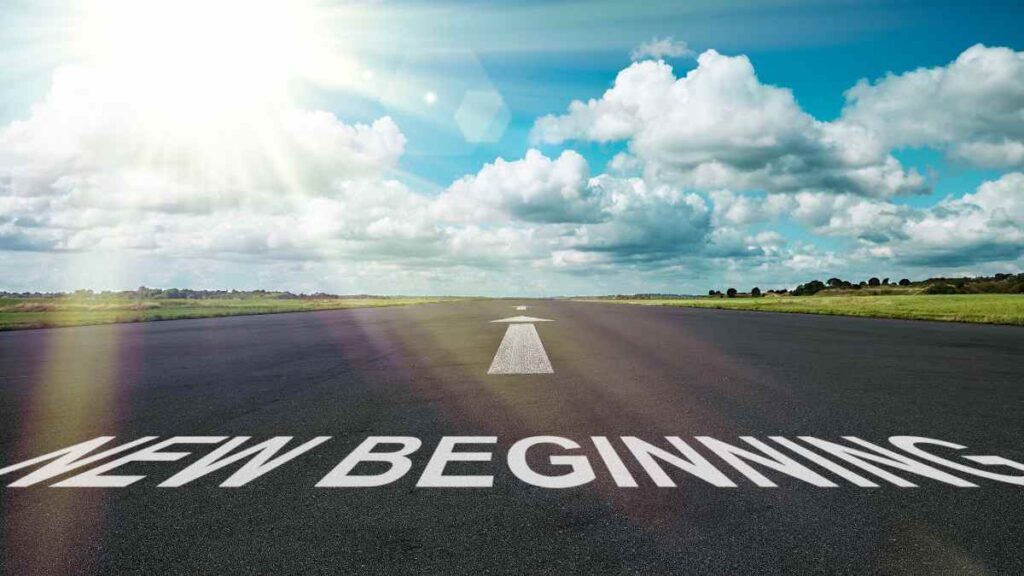
But how do you know if you’re ready for a spiritual journey? Well, here are a few signs to look out for:
- A feeling of restlessness or dissatisfaction with your current life
- A desire for more meaning and purpose
- A sense of disconnection from yourself or the world around you
- A craving for inner peace and contentment
If any of these resonate with you, it might be time to start exploring your spiritual side. And don’t worry; you don’t have to have all the answers right away. A spiritual journey is a journey of discovery and self-exploration, and it’s okay to take your time and figure out what works best for you.
Different Spiritual Paths and Practices

There are so many different spiritual traditions and practices, each offering unique perspectives and teachings. Some popular options include:
- Meditation and mindfulness practices
- Yoga and other physical disciplines
- Nature-based spiritualities
- Traditional organized religions such as Christianity, Islam, and Buddhism
- New Age practices such as astrology and crystal healing
The key is to keep an open mind and be willing to try out different things. Attend different religious services, read about various spiritual traditions, and experiment with different practices.
You may find that certain practices resonate more with you than others, or you may discover a whole new path that speaks to you.
It’s also a good idea to seek guidance from others who are more experienced on their spiritual journey. This could be through a spiritual mentor, a trusted friend or family member, or even an online community.
Remember, there is no one “right” path or practice. The most important thing is finding what works for you and brings you peace, connection, and purpose.
The Challenges of Your Spiritual Journey

Doubt and skepticism can be a natural part of any journey, especially a spiritual one. It’s only human to have questions and want to understand things ourselves.
But sometimes, doubt and skepticism can hold us back and prevent us from fully engaging in our spiritual practices or beliefs. It can be easy to get caught up in our doubts and let them cloud our judgment.
So how do we navigate this tricky territory? Well, here are a few tips:
- Remember that it’s okay to have doubts and questions. It’s a natural part of the process of exploration and self-discovery.
- Seek answers and knowledge from trusted sources. This could be through reading, talking to others, or even seeking guidance from a mentor or spiritual leader.
- Practice self-compassion. It’s easy to beat ourselves up for having doubts, but it’s important to remember that we’re all human, and it’s okay not to have all the answers.
- Use your doubts as an opportunity for growth. Instead of letting them hold you back, try to use them as a catalyst for deeper exploration and self-reflection.
Doubt and skepticism can be uncomfortable, but they can also be an important part of our spiritual journey.
By embracing them and using them as an opportunity for growth, we can deepen our understanding and connection to ourselves and the world around us.
Overcoming Personal Challenges

It’s a fact of life that we all face challenges and obstacles, especially when it comes to our spiritual journeys. With the right mindset and creativity, these challenges can become some of the most rewarding and transformative parts of our spiritual path.
First and foremost, it’s important to remember that challenges and obstacles are a natural part of any journey, spiritual or otherwise. They are opportunities for growth and learning and can help us to become stronger and more resilient.
So rather than seeing them as roadblocks, try to embrace them as opportunities for personal development.
One way to do this is to reframe your perspective. Instead of viewing a challenge as a daunting task, try to see it as a puzzle to be solved or a mountain to be climbed.
This shift in mindset can help you to approach the challenge with a sense of curiosity and determination rather than fear or resignation.
Another key to overcoming personal challenges and obstacles is to seek support and guidance from others.
Finally, don’t be afraid to get creative in your approach to overcoming challenges. This might mean trying out a new spiritual practice or ritual, exploring different techniques for managing stress or difficult emotions, or simply shaking things up in your routine.
The key is to stay open to new experiences and ways of thinking and to be willing to try things out and see what works for you.
So remember, challenges and obstacles are a natural part of the spiritual journey. With the right mindset and creativity, they can become some of the most rewarding and transformative parts of our journey.
Embrace them as growth opportunities, seek support and guidance, and don’t be afraid to get creative in your approach to overcoming them.
Dealing With Setbacks and Failures

Let’s face it – setbacks and failures are a natural part of life, and they can be especially tough to deal with on a spiritual journey.
It’s easy to get discouraged, feel like you’re not making progress, or even question if you’re on the right path.
But the good news is that setbacks and failures can be essential to our spiritual growth.
Here are a few ways to keep things in perspective and turn setbacks into opportunities for growth:
- Remember that setbacks are a natural part of the journey. Feeling disappointed or frustrated is okay, but try not to let those feelings consume you. Instead, focus on the progress you have made and the lessons you have learned.
- Use setbacks as an opportunity for self-reflection. Take some time to think about what went wrong and what you can learn from the experience. What might you have done differently? What did you learn about yourself or your spiritual practice?
- Seek guidance and support. It can be helpful to talk to others who have experienced similar setbacks or to seek advice from a spiritual mentor or community. They can offer perspective and encouragement to help you get back on track.
- Practice self-compassion. Be kind to yourself and remember that you are human. It’s okay to make mistakes and have setbacks – that’s how we learn and grow.
By keeping a positive attitude and using setbacks as an opportunity for growth, you can overcome any challenges that come your way and continue on your spiritual journey with confidence and resilience.
Your Growth and Transformation During Your Spiritual Journey

You’re embarking on a spiritual journey, taking you places you could never have imagined. You’re experiencing personal growth and transformation like never before, and it’s truly a journey of self-discovery.
As you travel down this path, you start feeling a sense of purpose and meaning you never knew you were missing. It’s as if a light has been switched on inside of you, illuminating all the things that truly matter.
You find that your perspective on the world is shifting, and you start to see things in a new light. You’re more open-minded, compassionate, and in tune with your values and beliefs.
This spiritual journey isn’t always easy, but it’s worth it.
Every challenge you face is an opportunity to learn and grow, and you’re becoming a stronger, wiser person.
The Ongoing Nature of a Spiritual Journey

To keep your spiritual fire burning bright, it’s important to maintain regular spiritual practice.
It’s like tending to a garden – if you neglect it for too long, the weeds start to take over, and everything starts to wilt. But with a little bit of love and attention, your spiritual garden can thrive and bring you joy and nourishment.
Think of your spiritual practice as a way to recharge your batteries and refocus your mind. It can be anything that helps you connect with your higher self, whether it’s meditation, prayer, journaling, or something else entirely.
The key is to find something that resonates with you and make it a regular part of your routine.
Of course, life can get busy, and it can be hard to carve out time for spiritual practice. But trust us; it’s worth the effort.
A regular spiritual practice can help you find meaning and purpose in your life, cultivate inner peace, and connect with something greater than yourself.
So don’t let those weeds start to grow – make time for your spiritual practice and watch your soul blossom.
Ongoing Growth
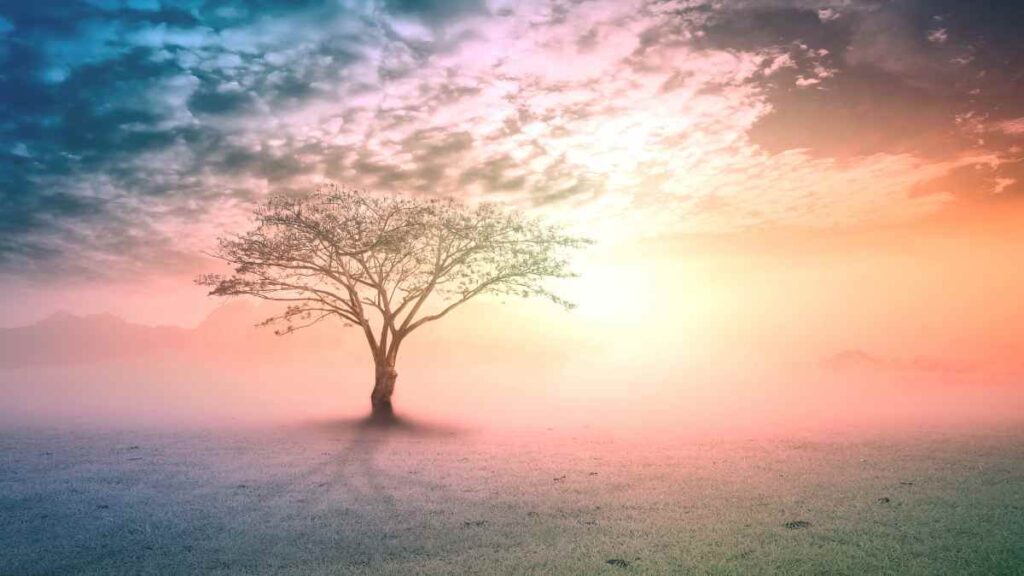
Your spiritual journey is like a never-ending spiral – you keep going round and round, each time discovering new layers and depths.
And just when you think you’ve got it all figured out, boom – something new comes along to shake things up.
But that’s the beauty of it!
Your spiritual journey is all about growth and transformation. Every experience, every challenge, and every moment of enlightenment is an opportunity to learn and evolve.
And the best part is this growth and transformation never really stops. You’re constantly becoming more enlightened, compassionate, and connected, no matter how long you’ve been on this journey.
So don’t be afraid to let go of the old and embrace the new. Embrace the unknown and trust that it’s leading you exactly where you’re meant to be.
And remember, it’s not about reaching some final destination. It’s about the journey itself and the ongoing growth and transformation that comes with it.
So take a deep breath, open your heart and mind, and keep spiraling. Your spiritual journey is amazing, and you’re just starting.
Embarking on a spiritual journey is no small feat, and you should be proud of your accomplishments.
You’ve faced your fears, discovered your values, and connected with something greater than yourself. You’ve grown and transformed in ways you could never have imagined, and you’ve come out on the other side a wiser, more self-aware, and more compassionate person.
But the journey doesn’t stop here. No, your spiritual journey is an ongoing spiral of growth and transformation. And that’s the beauty of it. So keep on keeping on, dear traveler. There’s always more to discover, more to learn, and more to become.
And remember, no matter where life takes you, always hold on to that sense of wonder and curiosity that set you on this journey in the first place. It will guide you through every twist and turn and bring you to places you could never have dreamed of.
Experience More Peace In Life With Spirituality
The Transformative Power of Gratitude: How Gratitude Can Change Your Life
Leave a Comment Cancel reply
Save my name, email, and website in this browser for the next time I comment.
AllDivinity.com does not provide medical advice. It is intended for informational purposes only. It is not a substitute for professional medical advice, diagnosis, or treatment .
Company Information
Pearce Buy LTD is a registered UK company Registered Office Address: Kemp House, 152 - 160 City Road London EC1V 2NX Registered Company Number: 09452636
© 2024 AllDivinity.com

Ram Kuti Pushkar: A Sanctuary of Peace and Spirituality
I n the heart of Pushkar, a town that echoes with spiritual resonance and historical depth, lies Ram Kuti, a tranquil guesthouse that offers more than just a place to stay. It is a sanctuary for the soul, deeply connected to the spiritual legacy of Pujya Gurudev Ranchhoddas Ji Maharaj, and a testament to the town's sacred ambiance. This serene abode is not merely a guesthouse; it is a bridge to the divine, inviting seekers and devotees into the fold of spiritual awakening and cultural immersion.
Pushkar, with its holy lake and the only temple in the world dedicated to Lord Brahma, holds a special place in the hearts of pilgrims. Amidst this divine backdrop, Ram Kuti emerges as a haven of peace, positioned conveniently near the sacred Brahma Temple. This location not only provides a serene retreat but also situates guests within walking distance of other spiritual landmarks such as Varaha Temple and the soothing waters of Ana Sagar Lake.
The foundation of Ram Kuti is rooted in spirituality, inspired by the revered Gurudev Ranchhoddas Ji Maharaj. After Gurudev's departure, the Nathwani family preserved his meditation room, a gesture that underscored the spiritual essence of the guesthouse. This legacy was further enriched by the Jyotiben Manubhai Foundation, enhancing the facility to welcome visitors seeking the spiritual tranquility Pushkar is known for.
The accommodations at Ram Kuti are designed to blend traditional charm with contemporary comforts. Guests are treated to air-conditioned rooms equipped with modern amenities, including free private parking and Wi-Fi, ensuring a stay that is both spiritually enriching and physically comfortable. The guesthouse prides itself on offering a variety of breakfast options, catering to different dietary preferences, ensuring that each day starts with a nourishing meal.
Beyond its walls, Ram Kuti serves as a gateway to exploring Pushkar's spiritual and cultural landscape. The town is home to the majestic Pushkar Fort, the annual Camel Fair, and other landmarks that offer a glimpse into its rich heritage. For those willing to venture further, the sacred sites of Ajmer Sharif and Dargah Sharif add layers to the spiritual journey, making Ram Kuti a perfect base for exploration and enlightenment.
Renowned for its exceptional service and hospitality, Ram Kuti stands out as a beacon of warmth and welcome. Its reputation is built on glowing reviews from guests who have experienced its smooth check-in process, flexible policies, and the genuine warmth of its management. Recognized as a budget-friendly property, it ensures a safe and inclusive environment for all guests, making it a top choice among accommodations in Pushkar.
The spiritual teachings of Gurudev Ranchhoddas Ji Maharaj resonate through Ram Kuti, emphasizing love, service, and selfless action. Gurudev's life journey from a questing child to a revered spiritual leader illustrates the transformative power of faith and dedication. His emphasis on serving humanity over engaging in ritualistic practices is a guiding principle for Ram Kuti, inviting guests to connect with the deeper aspects of spiritual life.
Ram Kuti is not just a place to stay; it is an experience, offering guests the opportunity to immerse themselves in the spiritual essence of Pushkar. From attending the vibrant Camel Fair to exploring the serene Tapo Bhumi, guests are invited to partake in the rich tapestry of culture and spirituality that defines this sacred town. The guesthouse embodies the spirit of Gurudev's teachings, serving as a sanctuary for those seeking to tread a path of love, service, and spiritual awakening.
As a destination, Pushkar holds a unique place in the spiritual geography of India, and Ram Kuti magnifies this essence, offering a serene, welcoming, and spiritually enriching experience. It invites travelers to step into a realm of tranquility, to explore the sacred and the divine, and to find peace amidst the bustling world. Ram Kuti is not just an accommodation; it is a spiritual journey, a haven of peace, and a gateway to the divine legacy of Pushkar. In embracing the ethos of Gurudev Ranchhoddas Ji Maharaj, it continues to light the way from darkness to light, guiding guests towards a path of spiritual enlightenment and cultural discovery.

Welcome to "Short Sermons: Journey Through the Bible," your companion in the quest for a deeper understanding of the Holy Bible. Our goal is to offer insights that make each biblical book's essence accessible, irrespective of where you are in your spiritual journey. Whether you're a seasoned Bible scholar, a new believer, or just someone curious about the Scriptures, our bite-sized sermons aim to enlighten, inspire, and help you connect more intimately with God's Word. With "Short Sermons," we aim to bring the pages of the Bible alive, illustrating how its ancient wisdom is still profoundly relevant in our modern lives. Join us in this enlightening journey, book by book, as we explore Scripture, grow in faith, and deepen our understanding of God's timeless word. Subscribe now and deepen your understanding of the Bible, one book at a time. Let's embark on this transformative journey together!
Short Sermons: Journey Through the Bible Jesse Mavity-Crump
- Religion & Spirituality
- MAR 21, 2024
The Sacred Tapestry of Family
- © Copyright Jesse Mavity-Crump
Top Podcasts In Religion & Spirituality
Recommended pages
- Lecture timetables
- Campus maps
- Student digital services
- Staff Digital Services
- Student support
- Online registration
- Core systems
- Car parking
- Room bookings
- Staff development
From Muirhead to Mecca: Sobia shares her spiritual journey
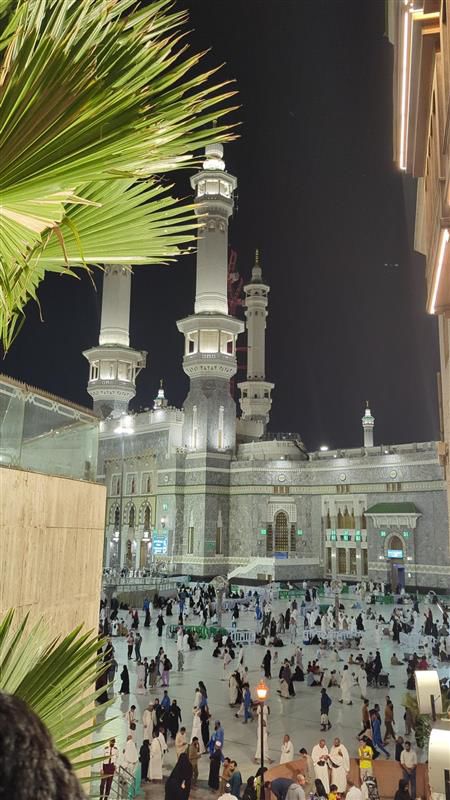
Sobia Baig, Executive Officer in the School of Government, College of Social Sciences, embarked on a spiritual journey this year. Stepping away from her desk in Muirhead Tower, Sobia shares her story of navigating enormous mosques and enduring long walks amidst scorching heat in Saudi Arabia, and how she prepared mentally, physically and emotionally for this pilgrimage.
Undertaking a pilgrimage is a significant milestone for many Muslims around the world. It's a journey of faith, self-discovery, and spiritual rejuvenation.
As I set foot on the sacred grounds of Makkah and Medina for my own pilgrimage, known as Umrah, this marked a profound chapter in my life that I had long yearned for.
In Islam, there are two forms of pilgrimage: Umrah and Hajj.
Umrah, unlike Hajj, which is performed once a year, can be undertaken at any time of the year. Both are deeply rooted in the faith and hold immense importance for believers.
Umrah, often referred to as the 'lesser pilgrimage', involves performing a series of rituals in the holy city of Makkah including the Tawaf (circumambulation) around the Kaaba, Sa'i (walking between the hills of Safa and Marwa) and shaving or trimming the hair.
Though not compulsory, Umrah holds great significance for Muslims and is considered a spiritually rewarding journey and is performed whilst under the state of Ihram. Ihram refers to the state of ritual consecration that we enter before performing Umrah or Hajj. It involves wearing special clothing, typically consisting of two seamless white cloths for men and modest attire for women, representing purity and equality before God. While in the state of Ihram, we must adhere to certain restrictions, such as refraining from cutting our hair or nails, using scented products, engaging in marital relations, and hunting or killing animals. Ihram signifies a state of spiritual readiness and humility.
For me, Umrah wasn't just a religious obligation; it was a profound spiritual journey that I felt I needed to be prepared for mentally, physically, and emotionally. I decided to take charge of planning the pilgrimage myself, rather than relying on a travel agent. Surprisingly, arranging the trip turned out to be much easier than I anticipated.
With the aid of online resources like Skyscanner, Qatar Airways, Booking.com, and the Saudi Arabian e-visa waiver system, I meticulously organised my itinerary. Securing flights, accommodations, and transportation, including the convenient Haramain train from Makkah to Medina, became seamless tasks. The total cost of the two-week journey was reasonable, ensuring a memorable yet budget-friendly experience.
Upon arriving in the holy cities, I was greeted by a diverse congregation of pilgrims from all corners of the globe. The sense of unity and shared purpose among millions of individuals, irrespective of their backgrounds or ages, was truly inspiring. As I immersed myself in the rituals of Umrah, I felt a profound sense of connection to my faith.
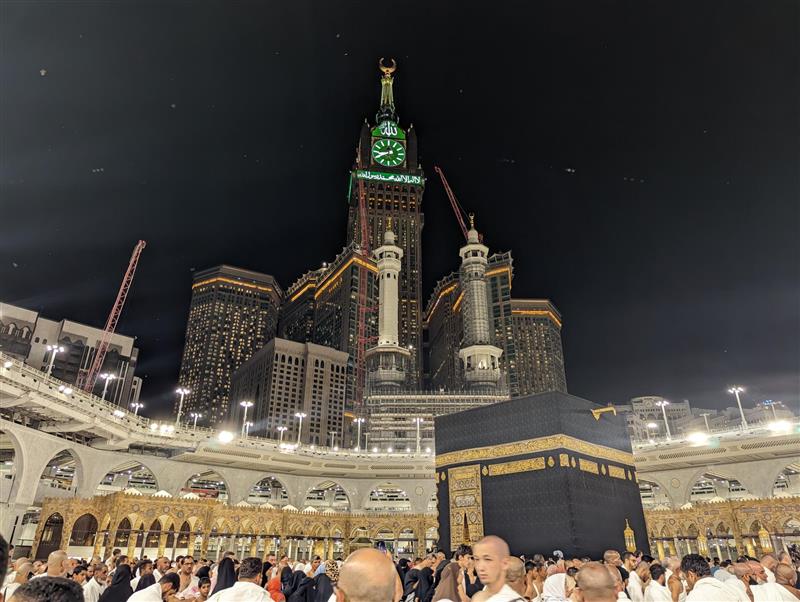
Surprise
One aspect that caught me by surprise was the relative ease of performing the pilgrimage itself, which typically takes two to three hours. However, navigating the enormous mosques and enduring long walks amidst the scorching heat posed physical challenges. Yet, the spiritual rewards of offering prayers in the grand mosques of Makkah and Medina far outweighed any discomfort. It is said that performing 1 prayer in the mosque in Makkah equates to 100,000 prayers and performing 1 prayer in Medina Mosque equates to 1000 prayers.
Access to constant Zamzam water, which is considered holy sacred water by Muslims, provided much-needed sustenance given the sweltering temperatures reaching 35 degrees Celsius during my visit. Additionally, I found pre-preparation invaluable, such as familiarising myself with the life of Prophet Muhammad (peace be upon him) through insightful resources like the Spotify series which made Ziyaret visits to holy places much more invaluable.
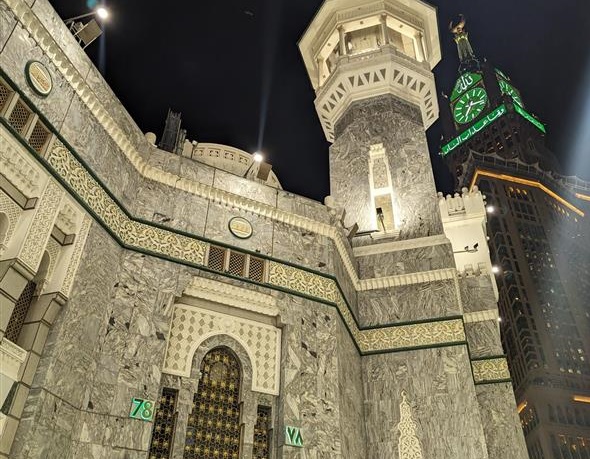
As a first-time pilgrim, I gleaned invaluable lessons from my trip and insights that I intend to apply on future journeys. Some practical tips I would recommend are to carry a drawstring bag for shoes when praying in the mosque, as well as carrying a water bottle for unlimited access to Zam Zam water. There are many forms of charity to do whilst out there, such as buying a wheelchair, a stool, giving money to workers and/or buying a Quran for the mosque. Other recommendations include writing down your specific Dua’s (prayers) as it can feel quite overwhelming and distracting at times therefore this will allow you to focus on your requests to God.
In retrospect, my first Umrah experience was filled with moments of reflection, prayer, and profound gratitude. As I eagerly await my next invitation from the Divine to return, I carry with me cherished memories and a renewed sense of spiritual fulfilment.
A guide to Ramadan is available and has been produced in conjunction with Muslim colleagues, aiming to help improve understanding of Ramadan.
- College of Arts and Law
- College of Engineering and Physical Sciences
- College of Life and Environmental Sciences
- College of Medical and Dental Sciences
- College of Social Sciences
Professional Services
- Academic Services
- Campus Services
- Development and Alumni Relations
- Executive Support
- External Relations
- Human Resources
- IT Services
- Legal Services
- Research Strategy and Services
The Holy Bibles - Audio & Text 4+
The holy bibles - audio & text, eloit innovations private limited, designed for ipad.
- 5.0 • 1 Rating
Screenshots
Description.
Embark on a spiritual journey with "The Bible in Tongues," a mobile application designed to bring the sacred scriptures closer to believers worldwide. This unique app offers the Holy Bible in both audio and text formats, covering an extensive array of tribal and international languages, all available at no cost. Access the Holy Scriptures in multiple languages and tribal dialects, ensuring you can hear and read the word of God in the language closest to your heart. Listen to the Bible narrated in clear, soothing voices, perfect for daily devotionals, meditation, or as a companion on your spiritual journey. Read the Bible in your preferred language, with easy-to-navigate chapters and verses, enabling a deeper understanding and study of the scriptures. Navigate effortlessly through the app, find your preferred language, and bookmark your favorite passages for easy access. Start your day with uplifting and motivational verses from the Bible, personally selected to inspire and guide you. Download your preferred versions for offline access, ensuring your spiritual studies continue uninterrupted, anywhere, anytime. Experience the powerful, transformative word of God without subscriptions, ads, or hidden costs. Our mission is to make the Bible accessible and understandable to all, transcending language barriers and cultural differences. Whether you're at home, commuting, or in a remote location, our app brings the comforting and guiding light of the Bible directly to your fingertips. "The Bible in Tongues" is more than just an app; it's a global spiritual companion, helping you connect with God's word in your native language. Download now and start your blessed journey with the Scriptures today. Empower your faith. Explore the Scriptures. Embrace your language. With "The Bible in Tongues."
Version 1.0.2
- We've squashed some bugs to improve your experience.
Ratings and Reviews
The app was really good! But the passages need text and audio should move automatically to the next chapter so it can be hands free.
App Privacy
The developer, Eloit Innovations Private Limited , indicated that the app’s privacy practices may include handling of data as described below. For more information, see the developer’s privacy policy .
Data Not Collected
The developer does not collect any data from this app.
Privacy practices may vary, for example, based on the features you use or your age. Learn More
Information
- Developer Website
- App Support
- Privacy Policy
More By This Developer
Edisapp Parent App
Edisapp e360
St Antonys Public School
Sacred Heart Convent School
Sacred Heart School Sahnewal
St Peters Convent School Sec88
You Might Also Like
SimpleChurch Networks
Knanayology
Tafseer-e-Injeel-e-Jaleel Urdu
Multilingual Bible lite
Daily Reading Kannada Bible
Haitian Creole English French
- Skip to main content
- Keyboard shortcuts for audio player
A look at the ancient practice that turned friends into family

Rhaina Cohen
In the latest story in the NPR's series The Science of Siblings, we hear about a practice that dates back to ancient times that allows people to turn a friend into a sibling.
A MARTÍNEZ, HOST:
A friend can sometimes feel more like family than an actual sibling. As part of NPR's series on the Science of Siblings, reporters Rhaina Cohen and Pien Huang look at an ancient practice that turned friends into family.
PIEN HUANG, BYLINE: It's been decades since Susan Harvey and Robin Darling Young took a trip to Turkey, Syria and Jerusalem, but there are some parts of the journey that they just can't forget.
ROBIN DARLING YOUNG: We realized we didn't know how to get to the place we were going to. So - and, Susan, you have to admit this is true - we hitchhiked.
HUANG: So this was in 1985, and the two researchers didn't know each other that well. Sure, they both studied Orthodox Christianity in ancient Syria. Both of them were women in their mid-30s at the time in a male-dominated field. But they'd really only cross paths at conferences.
RHAINA COHEN, BYLINE: So when they decided to take a three-week trip together to see with their own eyes the places they'd only read about on a page, it was a leap of faith.
SUSAN HARVEY: It was kind of risky to do this kind of trip together because there was no escape.
COHEN: Not even at the end of the day. They shared simple pilgrims quarters and monasteries where monks would sing hymns at night.
HUANG: And that intense experience of travel and research - it both tested them and bonded them. In just a few weeks, they had become such close friends that even someone who was meeting them for the first time noticed.
COHEN: That person was the Archbishop of the Syriac Orthodox Church of Jerusalem and the Holy Land. He welcomed Susan and Robin as pilgrims and guests, and he gave them a personal tour of the city's Syrian churches. Then they came to the place Christians consider the holiest of all, the Church of the Holy Sepulchre. The Archbishop asked them a question.
DARLING YOUNG: Would you like to come to the liturgy, after which we will perform an ancient ritual?
HARVEY: And this was a ritual to bless our friendship. He said we had a friendship that was based on something much deeper than blood, something bigger and deeper, greater than ourselves.
HUANG: Up until then, Susan and Robin had been chasing history, and now they had a chance to live it. The Archbishop would use an ancient ceremony to turn these friends into sisters. This practice has its own Greek name.
CLAUDIA RAPP: Adelphopoiesis.
COHEN: Adelphopoiesis - wow. Say it again.
RAPP: Brother-making.
COHEN: Brother-making.
RAPP: Adelphopoiesis.
COHEN: Thank you.
Claudia Rapp wrote a whole book on adelphopoiesis. She's a professor of Byzantine studies at the University of Vienna. And she's found that in the Byzantine Empire, brother-making started between monks at least as far back as the fourth century.
RAPP: The earliest inklings we find are for these kinds of prayers to be performed between two people who are on the same spiritual journey.
COHEN: They'd be expected to pray for each other and would sometimes be buried in the same tomb.
RAPP: They would then be considering themselves as brothers but in a bond that is created through the Holy Spirit so that it is actually considered to be stronger than the bond of blood.
COHEN: Rapp says the ritual eventually spread, and it could serve different purposes.
RAPP: Laypeople who adopt the practice for themselves in order to either cement friendships or to neutralize enemies.
COHEN: It was also done in other places in the Balkans. Muslims and Christians would swear brotherhood so they wouldn't have to fight each other in religious conflicts.
HUANG: Yeah, and in China, sworn siblinghood shows up in stories and records that date all the way back to 350 BCE. The practice there was steeped in Confucian philosophy, and it highlighted loyalty between friends. Wendy Chen is a professor at Texas Tech University, and she studied the practice in ancient China. She says that sworn brotherhood got popular when society was violent and messy.
WENDY CHEN: Sworn siblinghood often took place towards the end of each dynasty. People had to rely on each other to achieve their goals and sometimes even for survival.
COHEN: Robin Darling Young and Susan Harvey relied on each other during their trip in 1985. They think the archbishop noticed this, and that's why he led them away from the crowd in the Church of the Holy Sepulchre and into an alcove.
HARVEY: It's carved straight into the living rock, just slabs of stone.
DARLING YOUNG: And inside the alcove was the tomb reputed to be the tomb of Jesus.
HUANG: The space was lit with candles, and it smelled of incense. The archbishop wore full embroidered vestments and a long, satiny stole that he draped around his neck. And then, Robin says...
DARLING YOUNG: He took our two hands, two right hands, and put them together. And then he wrapped the stole around our hands...
HARVEY: That's right.
DARLING YOUNG: ...For the blessing.
COHEN: The archbishop said prayers over them.
DARLING YOUNG: At this point, of course, it's so serious and awe-inspiring, I'm blanking out (laughter). And...
HARVEY: Yeah, I don't think we actually knew quite what was going on. I mean, it was...
DARLING YOUNG: Yeah.
HARVEY: ...All being done in Syriac, which is another language.
DARLING YOUNG: And all I remember is Barekmor, you know...
HARVEY: Right.
DARLING YOUNG: ...Which means bless, Lord.
HARVEY: Bless me.
COHEN: Barekmor. Bless me, oh, Lord, they repeated.
DARLING YOUNG: And he announced to us that we were now sisters forever.
HARVEY: And so it was.
HUANG: Robin says that the ceremony was hard to process in the moment, but it clearly marked a shift in their friendship.
DARLING YOUNG: It had the effect of gathering together the other experiences that we'd had prior to it...
HARVEY: Yes.
DARLING YOUNG: ...And kind of sealing and condensing them, if you like.
HARVEY: It's like a little treasure we carry around in our pockets. And, you know, we do. We look at each other, and we'll say, beloved sister, you know (laughter).
HUANG: Susan and Robin see value in restoring this lost art of brother-making or sister-making.
HARVEY: I was thinking about what relationships have ceremonies. In my case, our daughter is adopted, so I remember our adoption ceremony like I remember my wedding.
COHEN: But today, there aren't really rituals to honor friendship.
DARLING YOUNG: The thing about a ceremony like this is it works.
HARVEY: It almost forces you to value this relationship, saying this is something truly special, and you need to honor it as such. And that, I think, is a real gift.
COHEN: Robin points out that the scripts do exist in religious texts. If anyone wants to dust them off and celebrate their friendships, they could. This is Rhaina Cohen.
HUANG: And Pien Huang for NPR News.
(SOUNDBITE OF MUSIC)
MARTÍNEZ: Tune in tomorrow, which is National Siblings Day, for the next installment in our series on the Science of Siblings. So, Leila, I feel like you would be the type of person with an official - unofficial sibling, someone you would make a sworn sibling.
LEILA FADEL, HOST:
Yeah, I mean, I've got my bio siblings, four of them. Love them. But I've got a few friends that are my family, like my best friend - met her as an intern, covered the Middle East together, helped each other through heartbreak, the traumas of covering war and adulting. She's my person. Hey, Anna (ph). A, you've got to get yourself a chosen sibling. It's - it helps life.
MARTÍNEZ: Yeah. Leila, you know me. My friend circle is very tight. It's just me.
FADEL: (Laughter).
Copyright © 2024 NPR. All rights reserved. Visit our website terms of use and permissions pages at www.npr.org for further information.
NPR transcripts are created on a rush deadline by an NPR contractor. This text may not be in its final form and may be updated or revised in the future. Accuracy and availability may vary. The authoritative record of NPR’s programming is the audio record.
- Logout Login
- Adventure Holidays
- Weekend Getaways
- Driving Holidays
- Travel News
Top Searches
East Africa Adventure
Sikkim Travel
World Car Free Places
Jaipur Travel
New Zealand Visa Rules
India Longest Rivers
Char Dham Yatra 2024: Dates announced and registration details
Times of India TIMESOFINDIA.COM / TRAVEL NEWS / Updated : Apr 12, 2024, 12:37 IST
You're Reading
The Char Dham Yatra pilgrimage in Uttarakhand begins as Badrinath Dham, Kedarnath Dham, and Gangotri Dham open for devotees seeking blessings and performing rituals. Online registration is available for pilgrims, ensuring a smooth … Read more
The Char Dham Yatra pilgrimage in Uttarakhand begins as Badrinath Dham, Kedarnath Dham, and Gangotri Dham open for devotees seeking blessings and performing rituals. Online registration is available for pilgrims, ensuring a smoother journey to these sacred sites. Read less
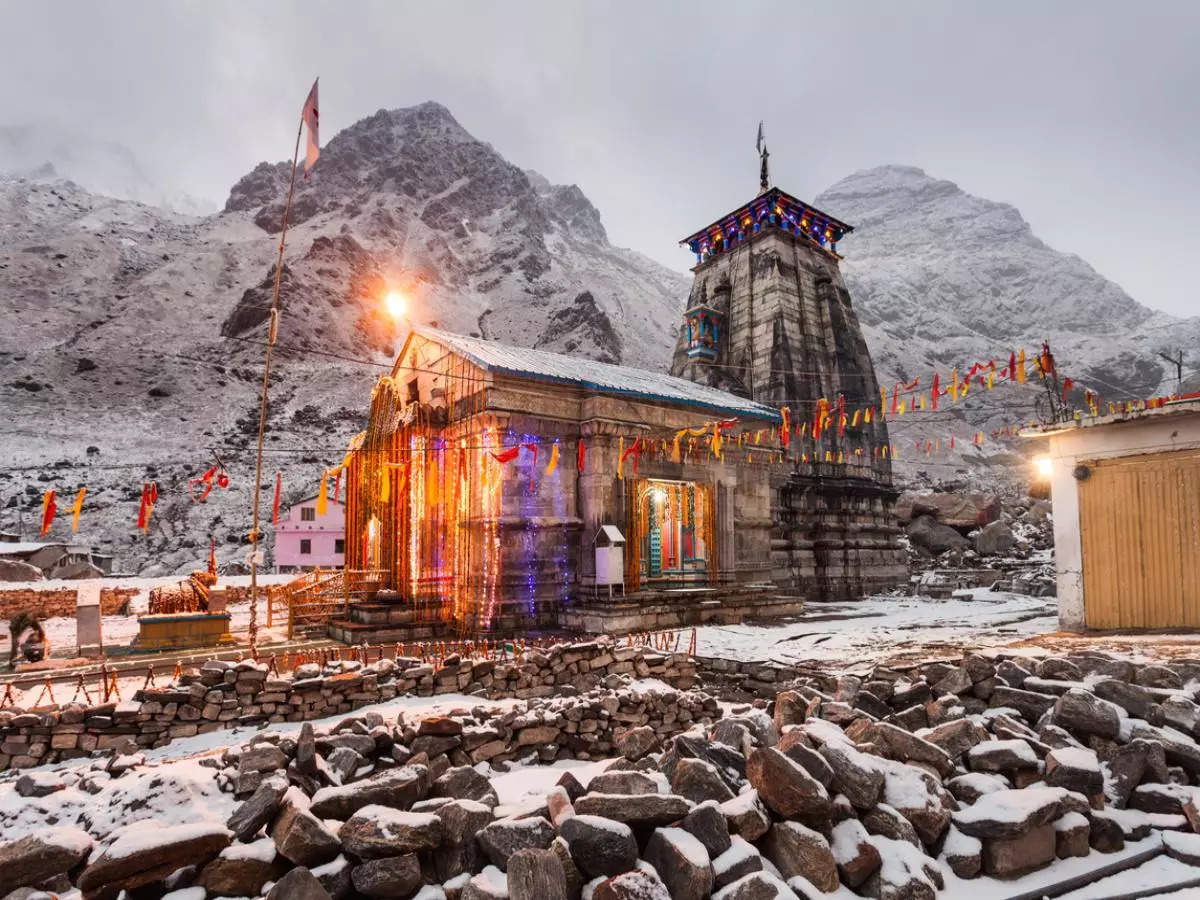
More from Travel News

12 oldest cities in the world; know which Indian city is on the list
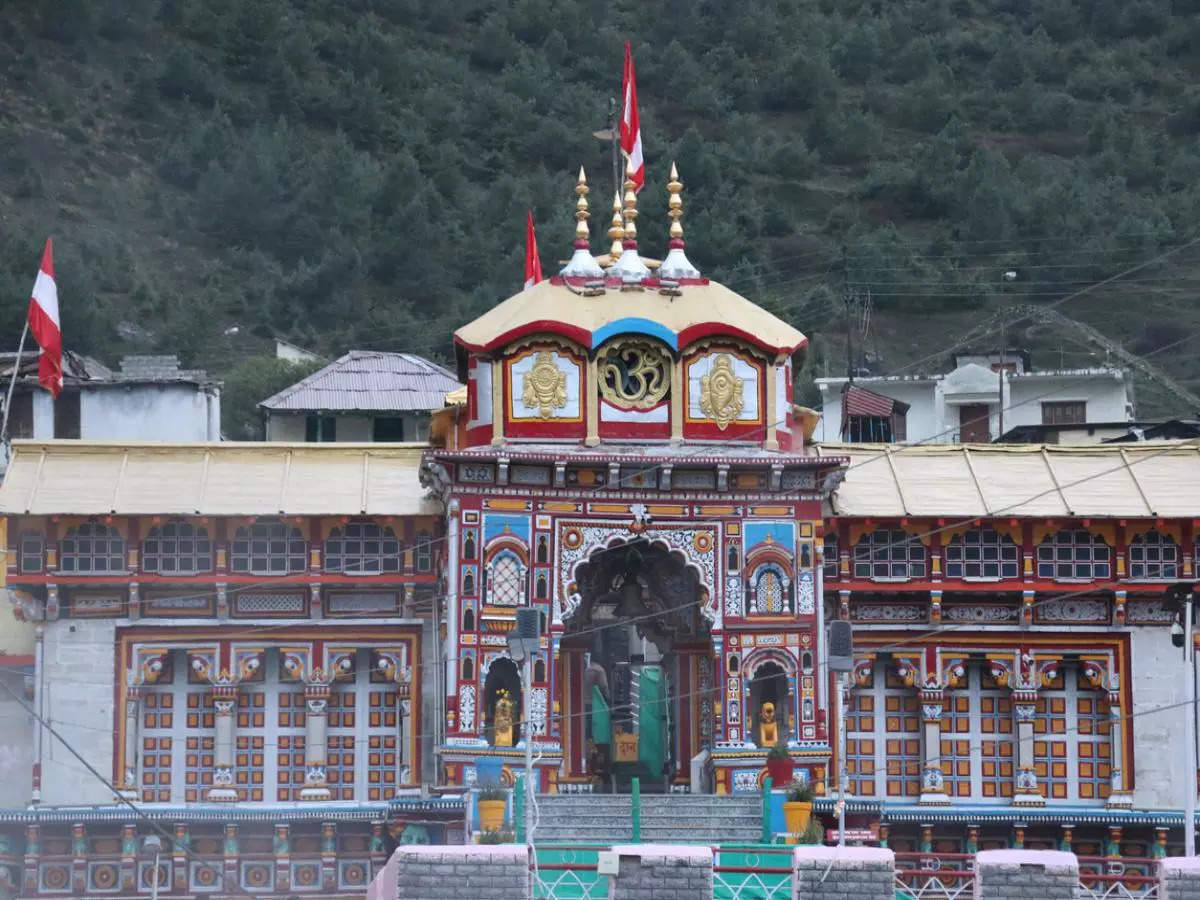
- Visit the official website www.registrationandtouristcare.uk.gov.in
- Click the Register/Log-in button.
- Enter all the required details in the form on the new window.
- Verify your identity via OTP verification using your mobile number and email provided.
- Log in using your mobile number and password after verification.
- Access your personalised dashboard and click on the Add/Manage Pilgrims or Tourists button.
- Provide all necessary tour details such as type, name, dates, and number of tourists.
- Upload scanned copies of valid photo ID proofs such as Voter card, Aadhar card, or driving license.
- Upon successful registration, you'll receive a unique registration number (URN) via SMS confirming your mobile number.
- Download the registration letter for the Chardham Yatra, which will be required during your journey.
Opening dates of the doors:
- Kedarnath: May 10, 2024
- Badrinath: May 12, 2024
Comments (0)

Refrain from posting comments that are obscene, defamatory or inflammatory, and do not indulge in personal attacks, name calling or inciting hatred against any community. Help us delete comments that do not follow these guidelines by marking them offensive . Let's work together to keep the conversation civil.
Comments ( ) Sort: Newest UpVoted Oldest Discussed Down Voted closecomments

SIGN IN WITH
Or post without registration.

Visual Stories

Popular Galleries
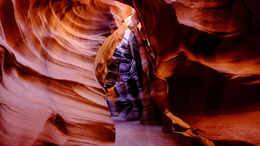
10 most surreal places on earth that will leave you speechless TRAVEL TRENDS , WORLD

Geological wonders: 5 of the oldest fossil parks in India TRAVEL TRENDS , INDIA

From Gulmohar to Amaltas, flowers that are Indian parallel to cherry blossoms TRAVEL TRENDS , INDIA
Trending stories.

- Is it a good idea to plan a trip to Rajasthan during summer?

Digi Yatra expected at 14 more airport this month; check full list

Top 10 biodiverse countries in the world; India on the list

5 thrilling adventure experiences to have in East Africa

Italy rolls out its long-awaited Digital Nomad Visa; find out how to qualify
- 1 Char Dham Yatra 2024: Dates announced and registration details
- 2 This European nation is encouraging retirees to travel by offering discounted vacations
- 3 Ayodhya: COVID-19 quarantine wards set up for foreign visitors ahead of Ram Navami
- 4 UNESCO World Heritage Young Professionals Forum 2024 to be held in India; application process is open
- 5 Italy: Mount Etna releases perfect ‘smoke rings’ into the sky; see pictures

THE DEFINITIVE GUIDE TO DESTINATIONS, ITINERARIES, THINGS TO DO, RESTAURANTS, NIGHTLIFE and LOTS MORE!
FOLLOW US ON
Places to visit.
- Places to visit in Bangalore
- Places to visit in Mumbai
- Places to visit in Delhi
- Places to visit in Goa
- Hotels in Goa
- Hotels in Jaipur
- Hotels in Shimla
- Hotels in Mumbai
Things To do
- Things to do in Goa
- Things to do in Mumbai
- Things to do in Bangalore
- Things to do in Delhi
Travel Inspiration
- Visa on arrival for Indians
- Honeymoon Places in india
- Hill Stations in India
- Weekend getaways in Mumbai
- Weather in Delhi
- Weather in Chennai
- Weather in Bangalore
- Weather in Mumbai
Best Beaches
- Goa Beaches
- Mumbai Beaches
- Pondicherry Beaches
- Kerala Beaches
- Restaurants in Bangalore
- Restaurants in Chennai
- Restaurants in Pune
- Restaurants in Jaipur
- Hill Station near Delhi
- Winter trip to Ladakh
- Places to visit in Kerala
- Winter Honeymoon Destinations
- UK visa guide for Indians
- Winter Trip to Manali
- Vaishno Devi Yatra
- Special Train Ticket Booking
- HP inter-state Bus
- Honeymoon Destinations India
Latest News
- Maldives plans to win back Indian tourists by organising roadshows in India
- Your complete summer guide to exploring Lansdowne in Uttarakhand
Congratulations!
You have been successfully added to the mailing list of Times of India Travel. To complete the subscription process, kindly open your inbox and click on the confirmation link which has been emailed to you.
Share with friends
Thank You for sharing! Your friend will receive the article link on email mentioned.
- (For more than one recipient, type addresses separated by commas)
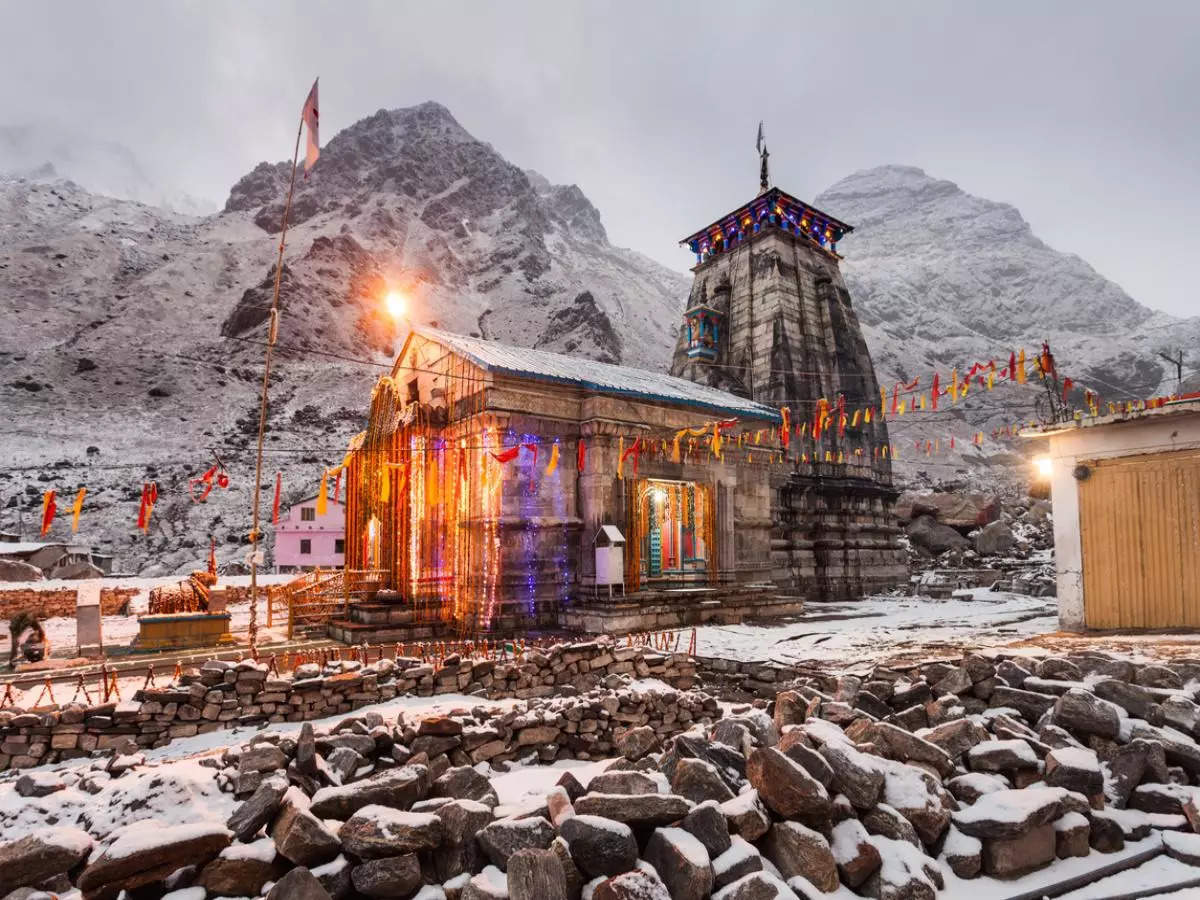
The Char Dham Yatra pilgrimage in Uttarakhand begins as Badrinath Dham, Kedarnath Dham, and Gangotri Dham open for devotees seeking blessings and performing rituals. Online registration is available f...

IMAGES
VIDEO
COMMENTS
A pilgrimage is a spiritual journey to a holy place or shrine and these journeys have formed a part of many of the major world religions since ancient times. Canterbury Cathedral has been a focus for pilgrims for many centuries and continues to draw pilgrims today. Find out more.
A spiritual journey to a holy place, quest for healing, or simple devotion, pilgrimage is found in all religions. It's a unique moment in the lives of believers. Sunday, Mar 03, 2024.
The Christian practice of walking to holy places stretches back to the first few centuries after Christ. ... but it's an unmistakably spiritual journey, with trail-side shrines and temples built ...
Ultimately, the pilgrimage is a response within the soul to move closer to God, to leave the ordinary in order to embrace the unknown within the context of faith. Pilgrimage has a goal: to ...
Tracy Balzer - author, campus pastor, Christos Spiritual Direction alum and passionate leader of pilgrimages - talks about her journey through spiritual direction and the sacred places of pilgrimage, especially in the cradles of Celtic and contemplative spirituality in Scotland and Ireland.
Pilgrimages frequently involve a journey or search of moral or spiritual significance. Typically, it is a journey to a shrine or other location of importance to a person's beliefs and faith, although sometimes it can be a metaphorical journey into someone's own beliefs.. Many religions attach spiritual importance to particular places: the place of birth or death of founders or saints, or to ...
pilgrimage, a journey undertaken for a religious motive. Although some pilgrims have wandered continuously with no fixed destination, pilgrims more commonly seek a specific place that has been sanctified by association with a divinity or other holy personage. The institution of pilgrimage is evident in all world religions and was also important ...
Pilgrimage has been part of the Christian tradition for centuries. A pilgrimage is a spiritual journey to a sacred place. The journey can be near or far — as close as a neighboring church or as distant as halfway around the world. It can be a day-trip, a 10- to 14-day excursion or any other duration.
The Spiritual Significance of Holy Land Pilgrimage. Holy Land pilgrimage holds a special place in the hearts of Christians. It offers a unique opportunity to recommit oneself to living a Christian life and to experience the land where Jesus was born, preached, suffered, died, and rose again.
Spiritual Journeys to Holy Places. According to Tasoula Manaridis, 42, of Nicosia in Cyprus, it is the vestiges of spiritual leaders that make a locale sacred and beckon those seeking guidance and inspiration. "In the Greek Orthodox faith a widespread and long-lasting custom is the journey to holy places to kneel in worship," she said.
Holy Land Pilgrimage Guidelines. 2016. English. Pilgrimage may mean embarking on a journey of prayer; accompanying the poor, the oppressed, and refugees in their times of trial; visiting local holy sites; and countless other acts of faith. A pilgrimage to the Holy Land is a special time of spiritual journey for Christians.
Medieval pilgrimage - detail of miniature showing the Lover, dressed as a pilgrim, setting off on his pilgrimage. British Library Egerton 1069 f. 145. People made pilgrimages for a variety of reasons. Many holy sites were purported to have a healing powers, such as Walsingham, in Norfolk. Pilgrims who had an ailing loved one could seek divine ...
Spiritual destinations come in all different forms, from holy places of world religions to ancient sites of ancient beliefs and ways of life. If you're planning on taking your own spiritual journey and make a few spiritual journey trips, these 17 locations across the wide world are transformative spiritual travel destinations for you to ...
Bethlehem - A Journey to the City of Jesus' Birth: Bethlehem, being the birthplace of Jesus Christ, is a city of great importance. Each year, countless pilgrims from all corners of the world come to embark on a spiritual journey to this holy place, where they can immerse themselves in its awe-inspiring energy.
The pyramids of Teotihuacan, Mexico. The holy Aztec city and pyramid complex Teotihuacan ('the place where the gods were created') is situated north-east of Mexico City, and has long been a place of mysteries. It's one of the most sacred, spiritually charged places in the world. Manitou Lake, Saskatchewan, Canada.
12. Assisi, Italy. One of the most spiritual places to travel in the world. A charming hilltop town located in the Umbria region of central Italy, known for its rich history, religious significance, and stunning natural beauty. It is also known as the birthplace of Saint Francis, the patron saint of Italy.
Pilgrimage, a journey to a sacred place, is a spiritual practice with a long history in Christianity (and many other religions). In the Bible, pilgrimage is not only about the destination, but also about the "holy place" of the journey itself. Considering the journey of the Magi, the walk to Emmaus, and Jesus' arrival in Jerusalem, we ...
The Most Spiritual Places On Earth . Camino de Santiago, Spain. ... Climbing to Machu Picchu has been a journey of deep spirituality for people ever since the site was re-discovered a few hundred years ago. ... The wall is all that remains of that holy site and, because of this, it is also known as "The Wailing Wall" out of mourning for the ...
Embarking on a spiritual journey to various places in the world can be a profound and life-changing experience. It is known for offering many transformative benefits. ... When embarking on a spiritual journey to major religious and holy places, practical preparation can greatly enhance the depth of your experience. First, please make sure you ...
10. Ajmer, Rajasthan. Spiritual Heart of India: The 10 Must-Visit Sacred Destinations. 1. Varanasi, Uttar Pradesh. Considered one of the oldest inhabited cities globally, Varanasi, or Benares, is often referred to as the 'spiritual capital of India'. The city is believed to be Lord Shiva's abode, which is the destroyer in the holy Hindu ...
Embarking on a spiritual journey is like nothing you've ever experienced before. It's a rollercoaster ride of self-exploration, personal growth, and transformation. But trust me; it's worth it. On a spiritual journey, you'll confront your deepest fears, uncover your true values and beliefs, and connect with something greater than yourself.
In the holy place of the Tabernacle, one of the most captivating and significant items was the Menorah. This golden lampstand, crafted from pure gold, ... guiding us along our spiritual journey. To further appreciate the profound significance of the Menorah, let's take a closer look at its design and symbolic representation: ...
Spiritual director Jenny Gehman reflects on her own journey to spiritual direction and the holy hospitality she experienced. Jenny Gehman, east coast representative for Mennonite Women USA, is a spiritual director, freelance writer and retreat facilitator. She and her husband, Dan, attend James Street Mennonite Church in Lancaster, Pennsylvania. To learn more about Jenny or
Pushkar, with its holy lake and the only temple in the world dedicated to Lord Brahma, holds a special place in the hearts of pilgrims. Amidst this divine backdrop, Ram Kuti emerges as a haven of ...
1 episode. Welcome to "Short Sermons: Journey Through the Bible," your companion in the quest for a deeper understanding of the Holy Bible. Our goal is to offer insights that make each biblical book's essence accessible, irrespective of where you are in your spiritual journey. Whether you're a seasoned Bible scholar, a new believer, or just ...
Masjid al-Haram, the Great Mosque of Mecca. Sobia Baig, Executive Officer in the School of Government, College of Social Sciences, embarked on a spiritual journey this year. Stepping away from her desk in Muirhead Tower, Sobia shares her story of navigating enormous mosques and enduring long walks amidst scorching heat in Saudi Arabia, and how ...
Access the Holy Scriptures in multiple languages and tribal dialects, ensuring you can hear and read the word of God in the language closest to your heart. Listen to the Bible narrated in clear, soothing voices, perfect for daily devotionals, meditation, or as a companion on your spiritual journey.
COHEN: That person was the Archbishop of the Syriac Orthodox Church of Jerusalem and the Holy Land. He welcomed Susan and Robin as pilgrims and guests, and he gave them a personal tour of the city ...
The Char Dham Yatra, comprising the pilgrimage to the four sacred sites of Badrinath, Kedarnath, Gangotri, and Yamunotri, holds profound spiritual significance in Hinduism. This journey typically ...
Starting at 8 a.m. ET on EWTN: Holy Mass on Thursday, April 11, 2024 - Memorial of Saint Stanislaus, Bishop and Martyr Act of spiritual communion -...